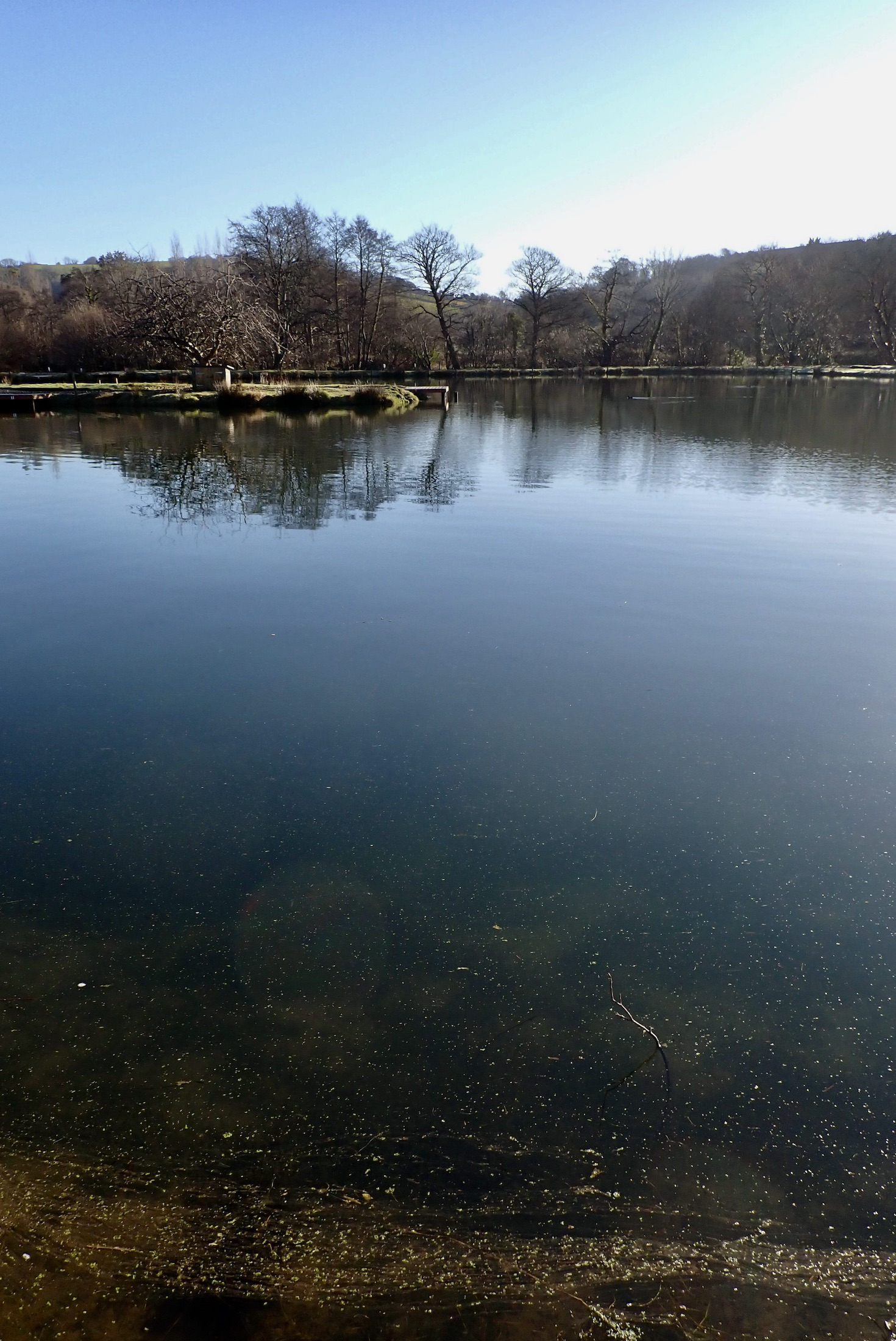

Early April and to me this is trout season proper and where better to spend a day chasing rainbows than the fabulous Wimbleball nestled amongst Exmoor’s rural landscape.
I was fishing with my good friend Bruce Elston who had recently enjoyed catching his first double figure rainbow from Anglers Paradises Catch and release trout lake. We had originally intended to fish from the bank but recent catch reports indicated that the boats were starting to produce.
I was full of confidence despite the strong Easterly wind and bright sunshine. There was rain and cloud forecast for the afternoon so if the morning proved hard the afternoon would give a change of conditions.
We met at the boat pontoons for 8:30am after a pleasant drive as the morning sun rose to burn off any lingering morning mist. We were greeted by Mark Underhill who has worked so hard to make this fishery one of the best in the west country.
It was good to catch up and chat about prospects for the day and how well the fishery has been fishing recently. Judging by recent posts on social media the size of the rainbows this year are well worth chasing.
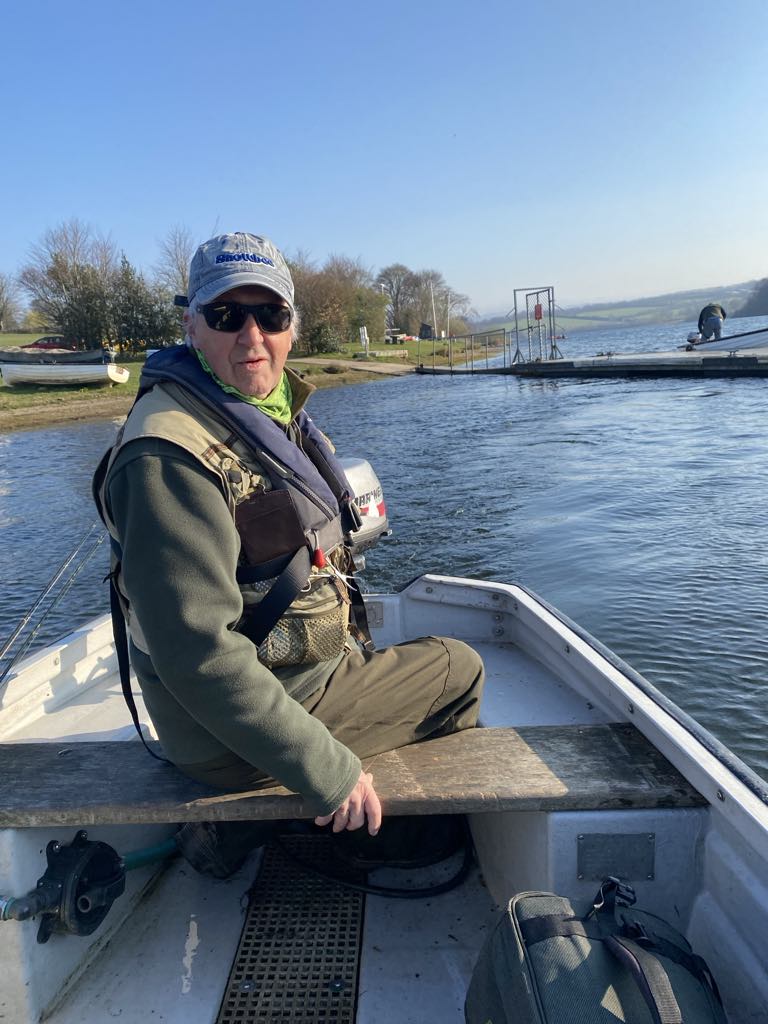
It was my turn as boat captain today and I suggested we start off with a drift or two in Cowmoor Bay that would offer a degree of shelter from the strong wind. We headed up into the wide bay towards the far end and commenced drifting using a drogue to slow the pace. I hooked a rainbow on the second drift that came adrift but this at least gave that much needed confidence boost.
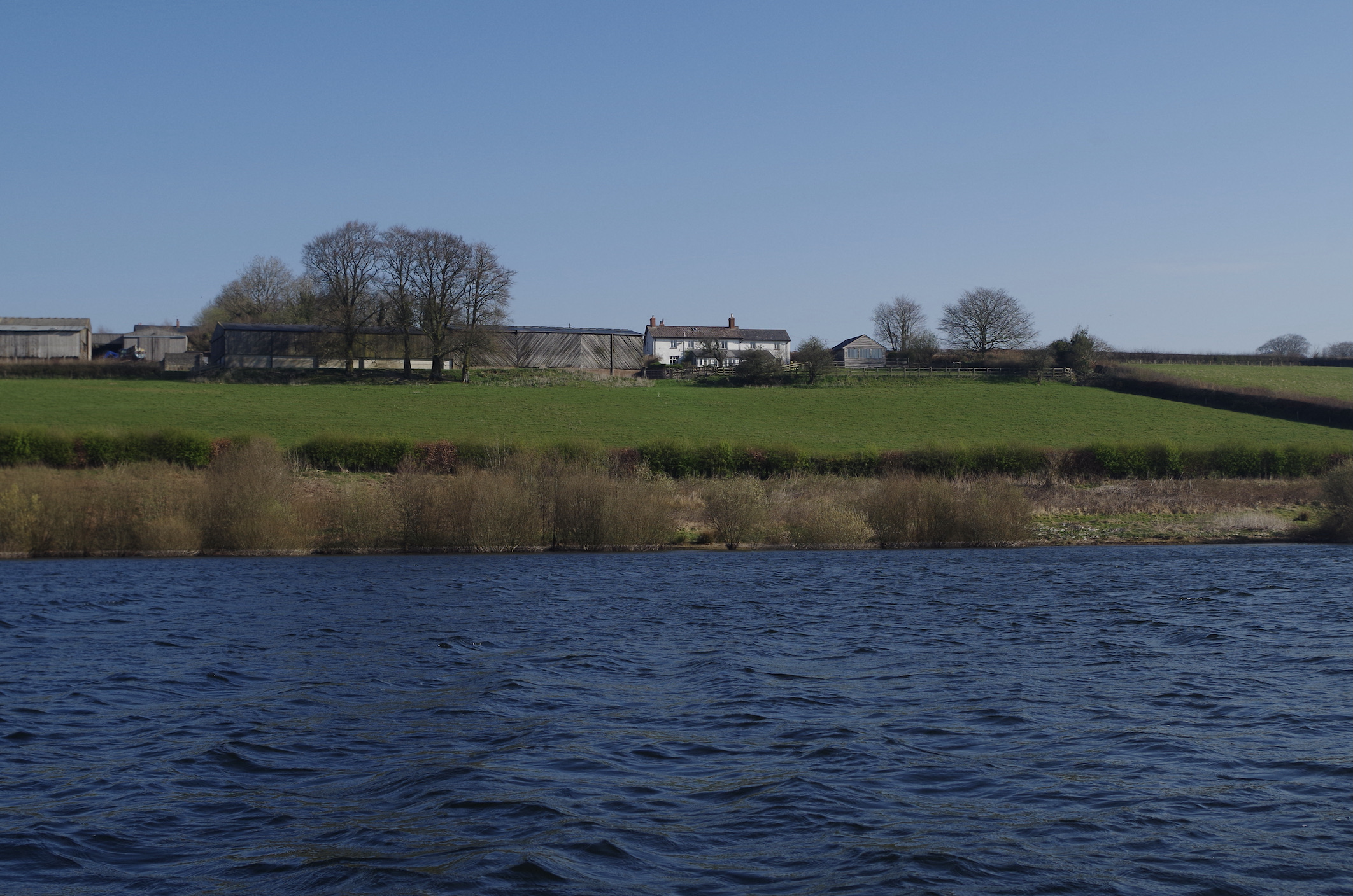
It was good to spot the first martins of the spring swooping over the water after their long migration from the African continent. The sighting of the spring migrants always boosts my spirits knowing that natures cycle is still turning as it should.
It soon became apparent that even with a drogue the drift was a bit too brisk and I suggested we head up to the dam end. We tied up to the rope that marks the dam area and spent half an hour searching the deep water to no avail.
I was using a fast sink Snowbee line with an olive damsel on the point and a bright orange blob on the dropper. Bruce was using a single black damsel.
The calmer waters of the Upton Arm beckoned we motored up into the wooded bay that always inspires. Wooded banks with branches trailing into deep clear water. Buzzards gliding high above and birdsong drifting in the spring air.
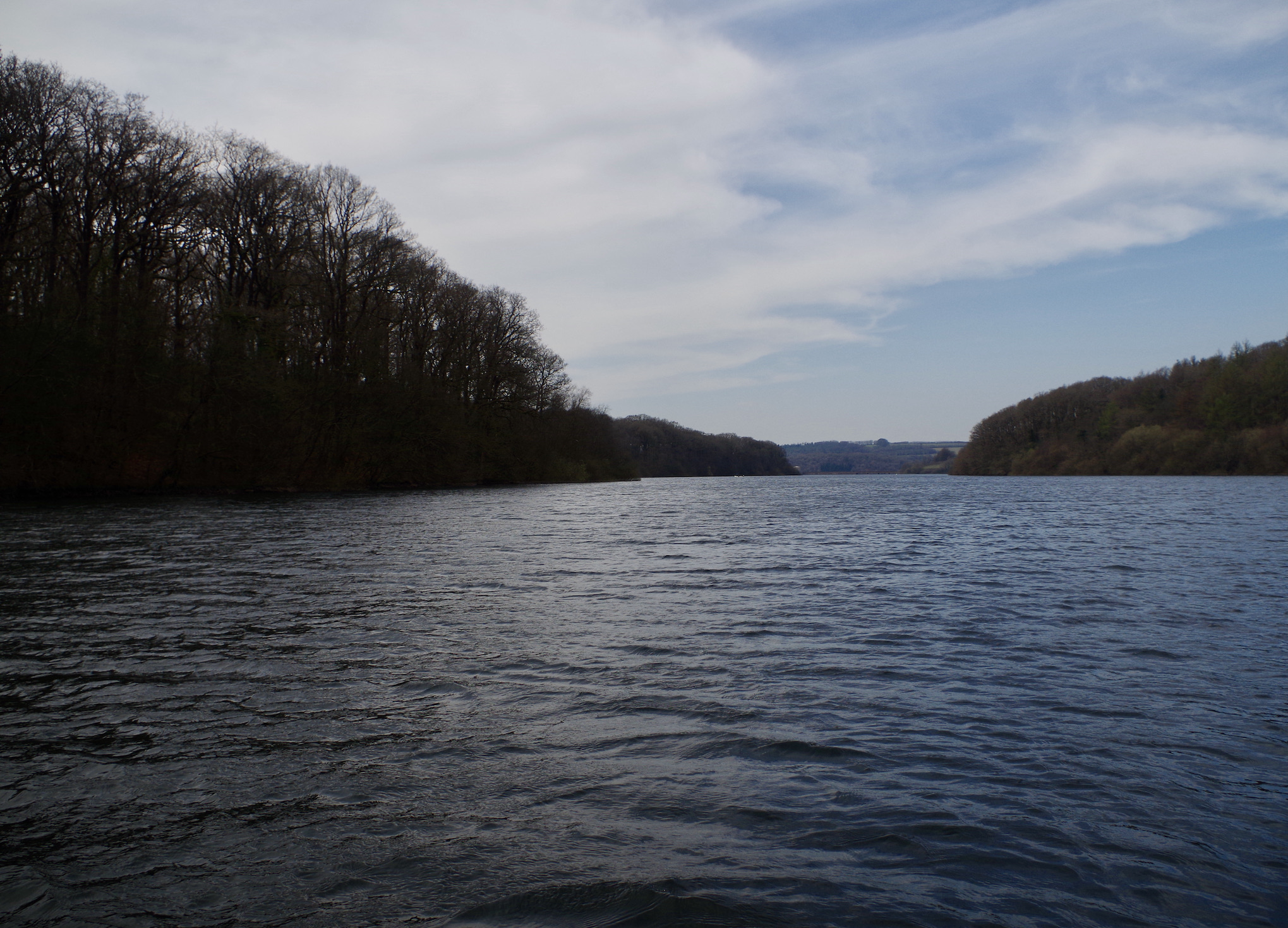
Action soon came our way as we drifted close to the bank with the trout seemingly close to the edge patrolling the steep drop off contours. We caught fish pretty well every drift throughout late morning. All hard fighting fish averaging between 2lb and 3lb.
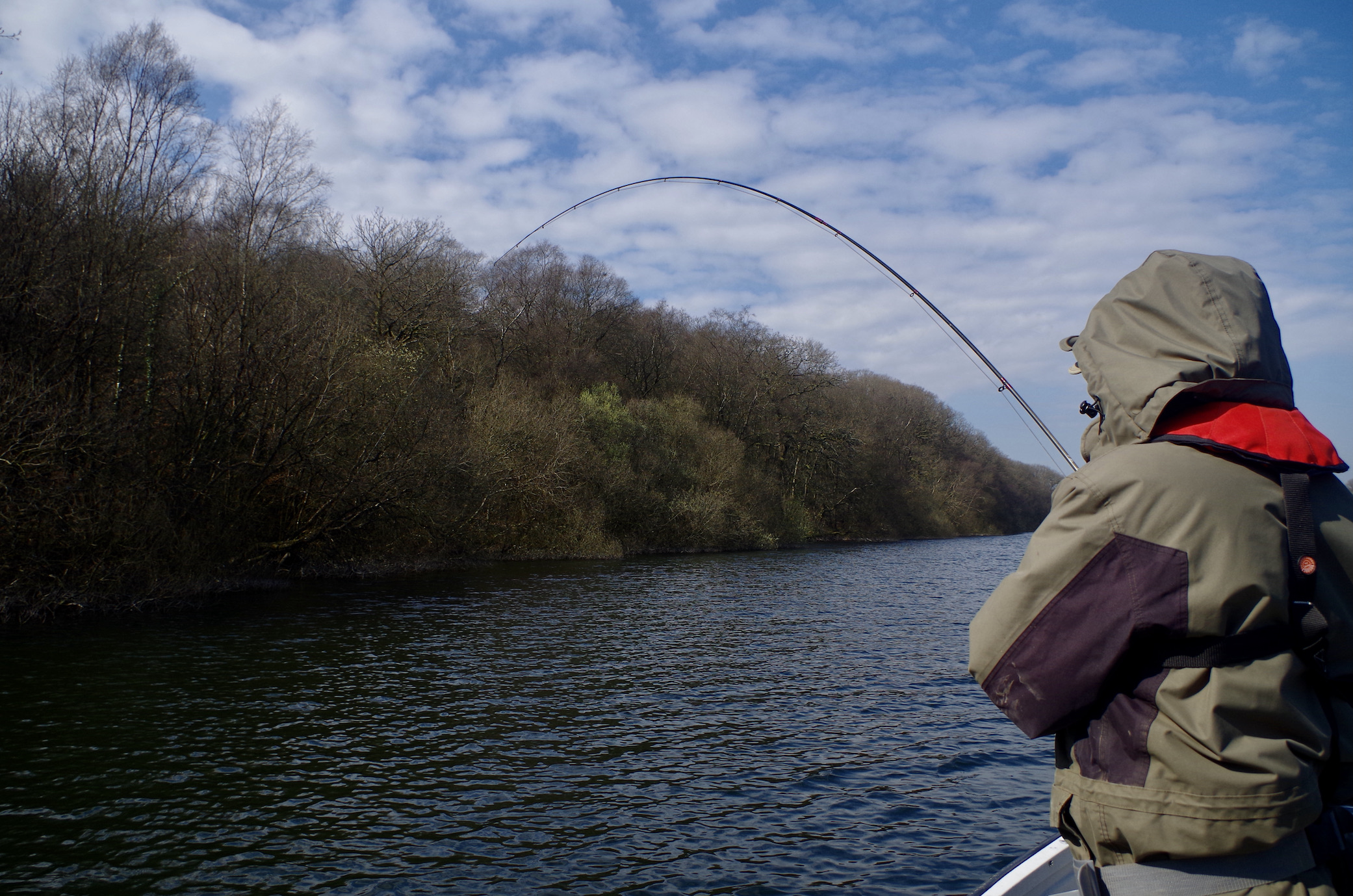
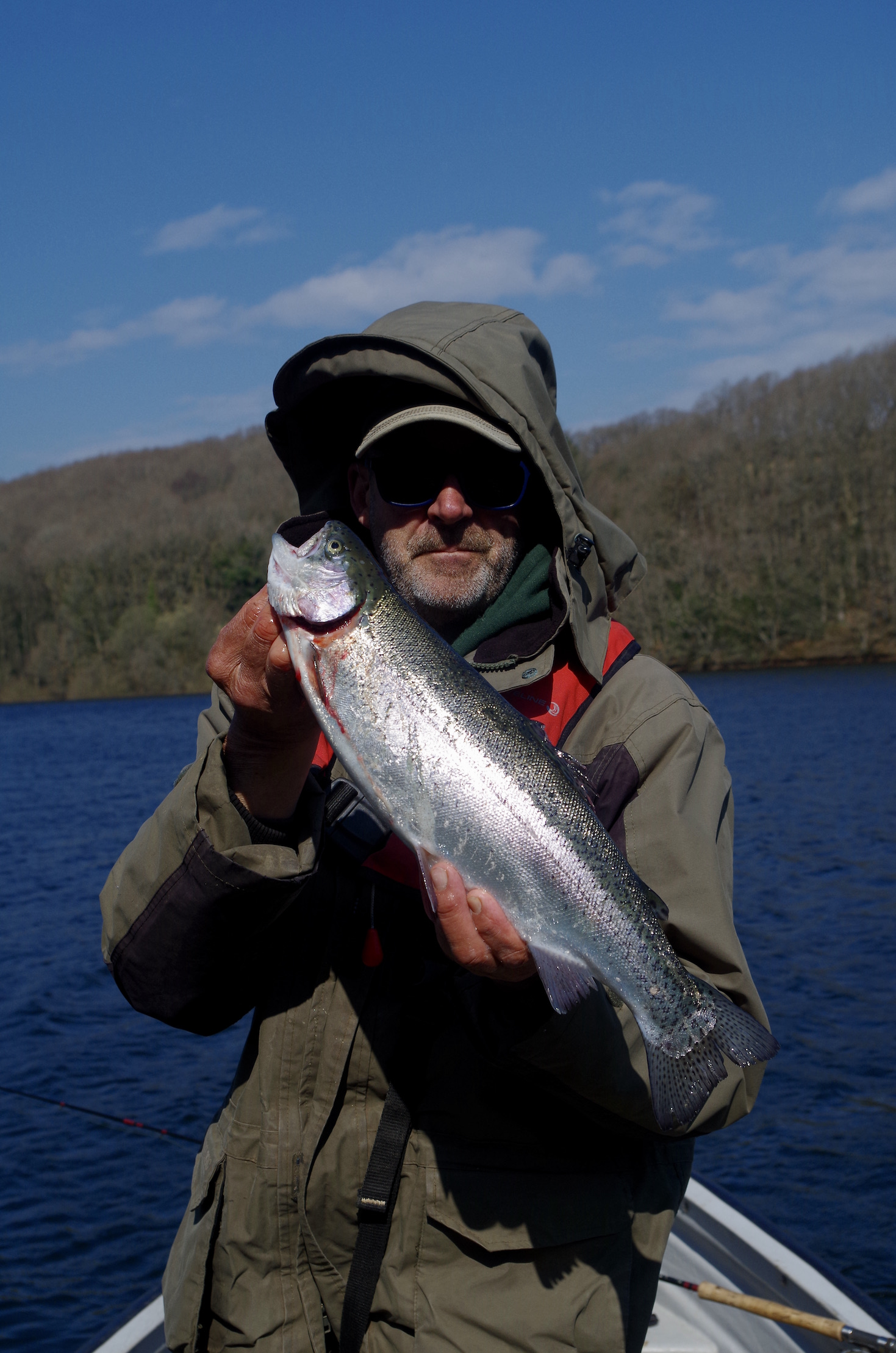
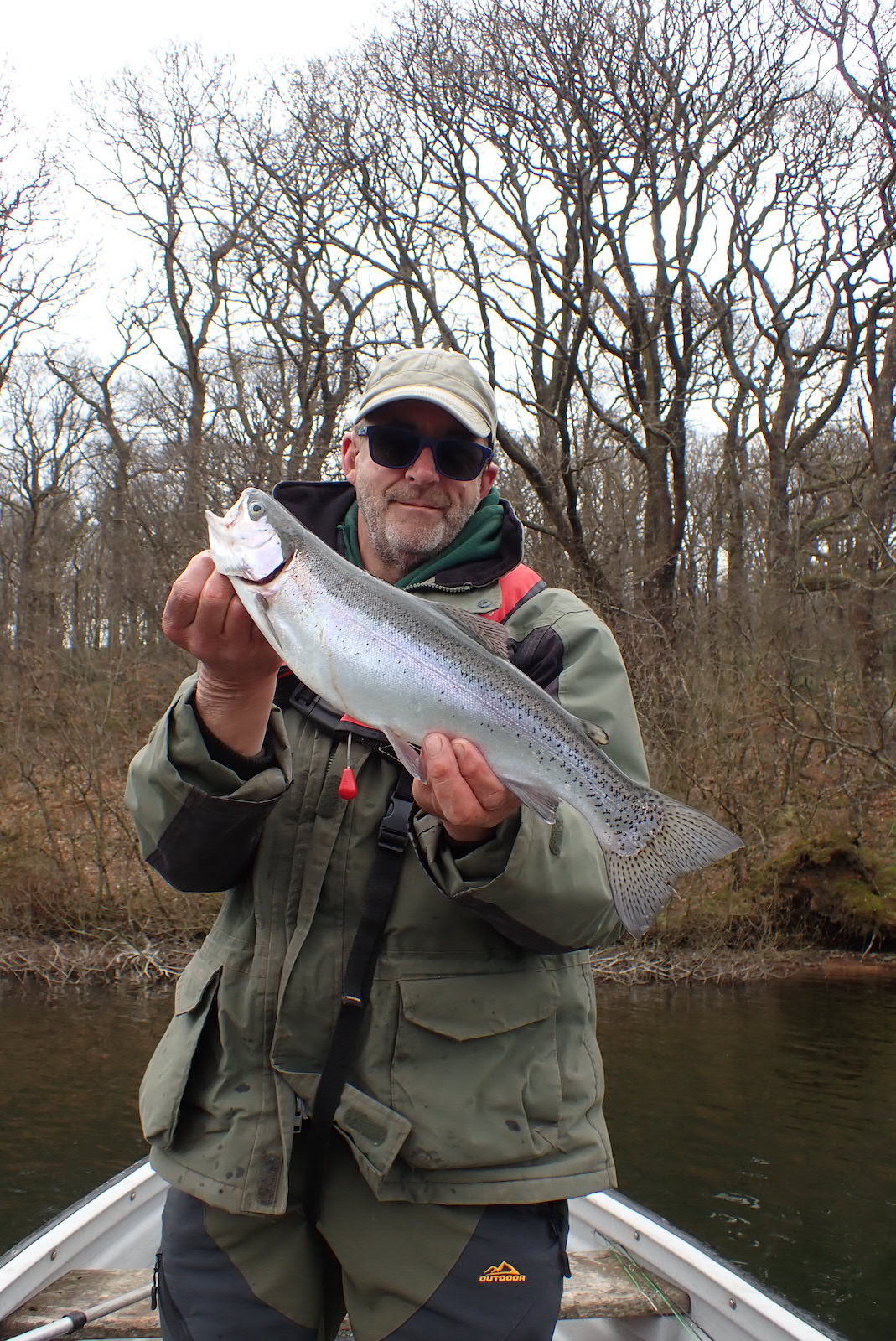
When our catch rate eased we decided to try the opposite bank where the wind was blowing harder. First cast I noted a swirl behind my fly as a trout lunged at the fly. The wind was pushing us rapidly into the bank and as I lifted the rod a huge rainbow appeared behind the lure turning away as I ran out of water. Bruce and I both gasped in awe at its size. One of those would certainly make our day!
With the wind making it very difficult we decided to take a break and return to the calmer bay we had been fishing and take a bit of lunch with the anchor lowered. I grabbed a sandwich and an iced coffee between casts. Bruce set up a nymphing set up with a sight indicator and allowed the set up to drift gently just off the overhanging tree line.

Bruce missed a couple of takes but it was third time lucky when he tightened into a fish that took off with a stunning turn of speed. Bruce hung on and relished the pulsing rod as line was ripped from the reel on a couple of long runs out into the bay. Eventually the fish settled into a closer range tussle a couple of rod lengths from the boat. Each time Bruce encouraged the fish close to the net it would surge off again. It was obviously a good fish that we estimated at around 7lb. It wasn’t until it slid over the rim of the net that we got an idea of its true size. A deep flanked fish in perfect condition with wide and powerful tail. Bruce decided to keep the fish and we were both stunned when the scales told a weight of 9lb 14oz!
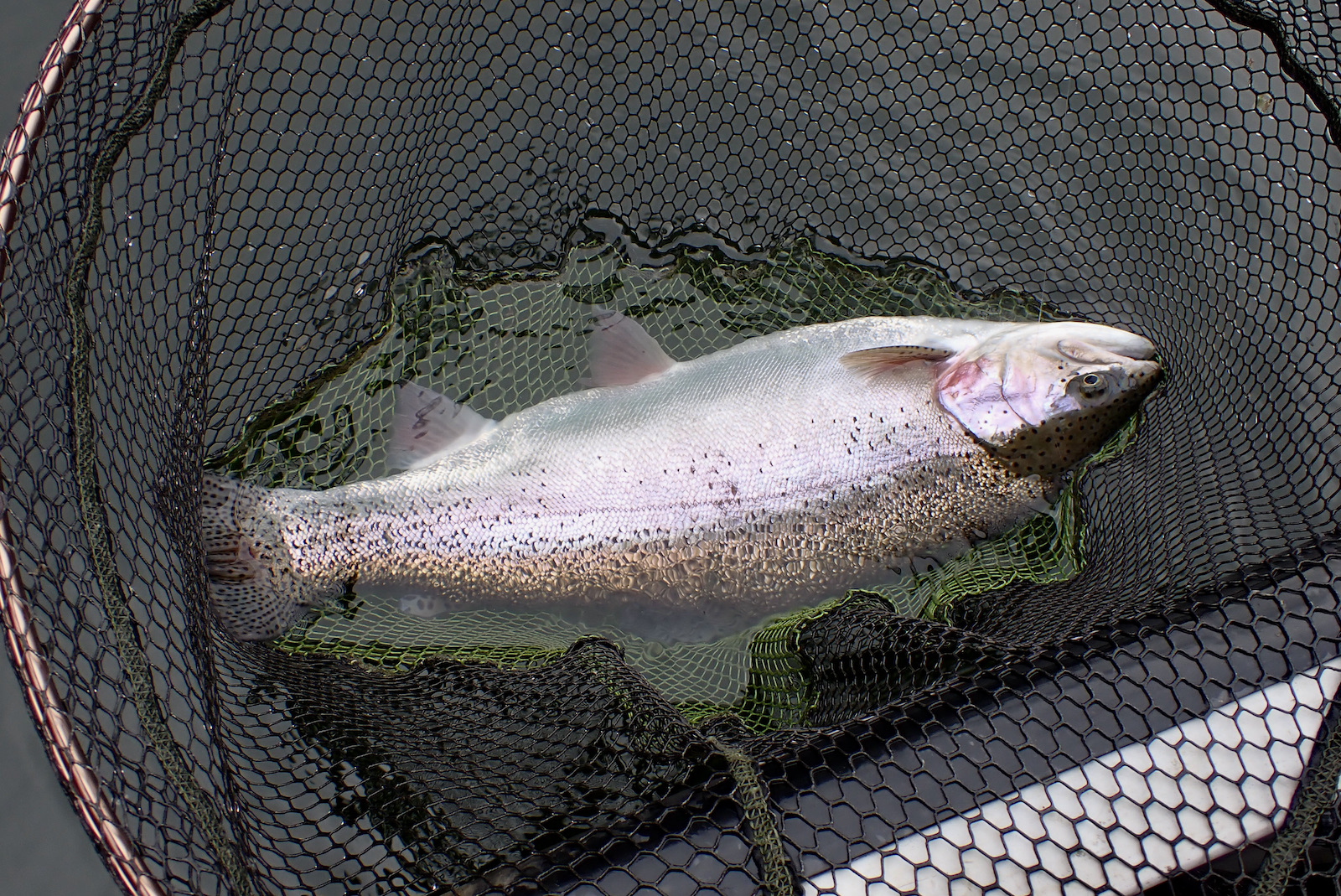
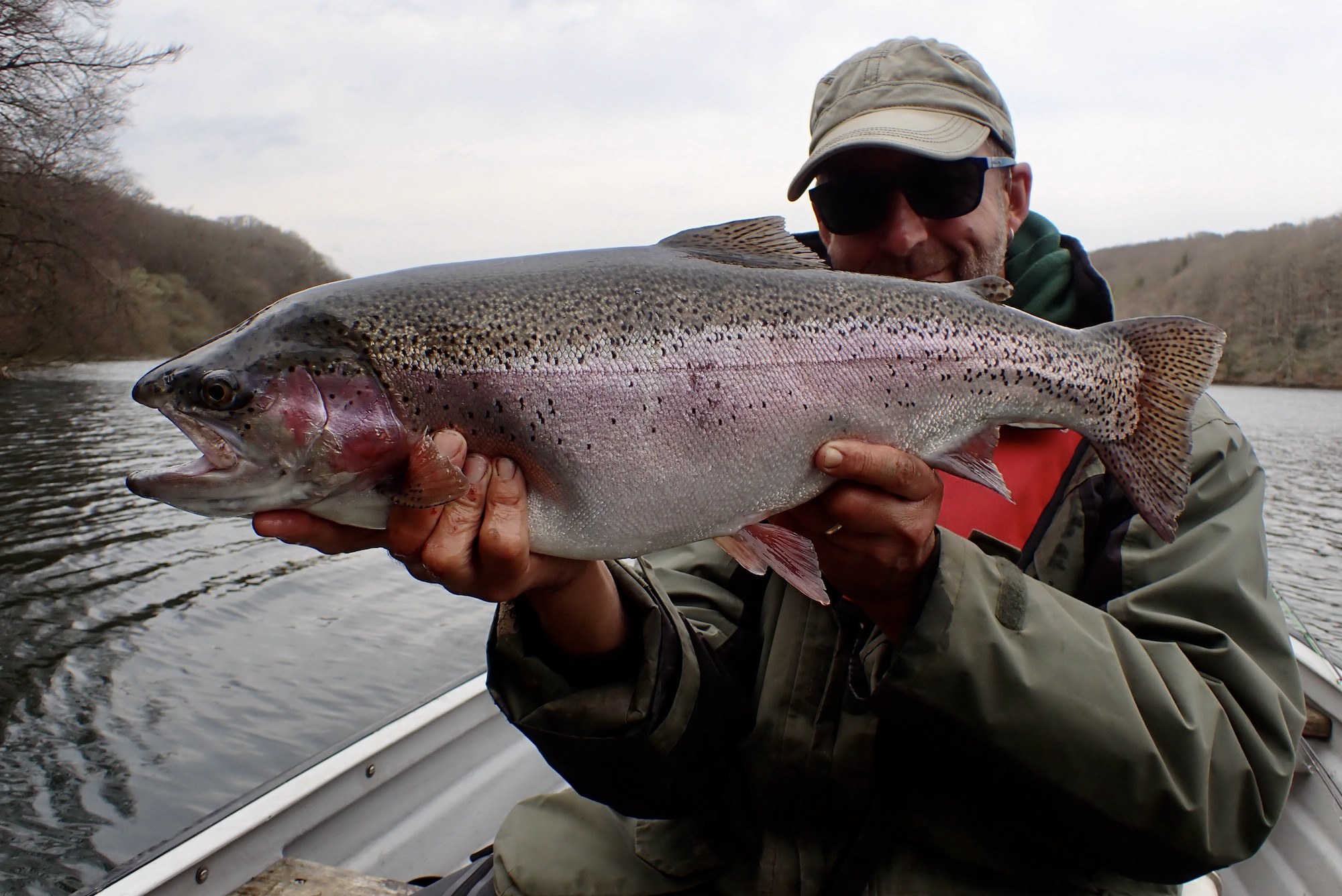
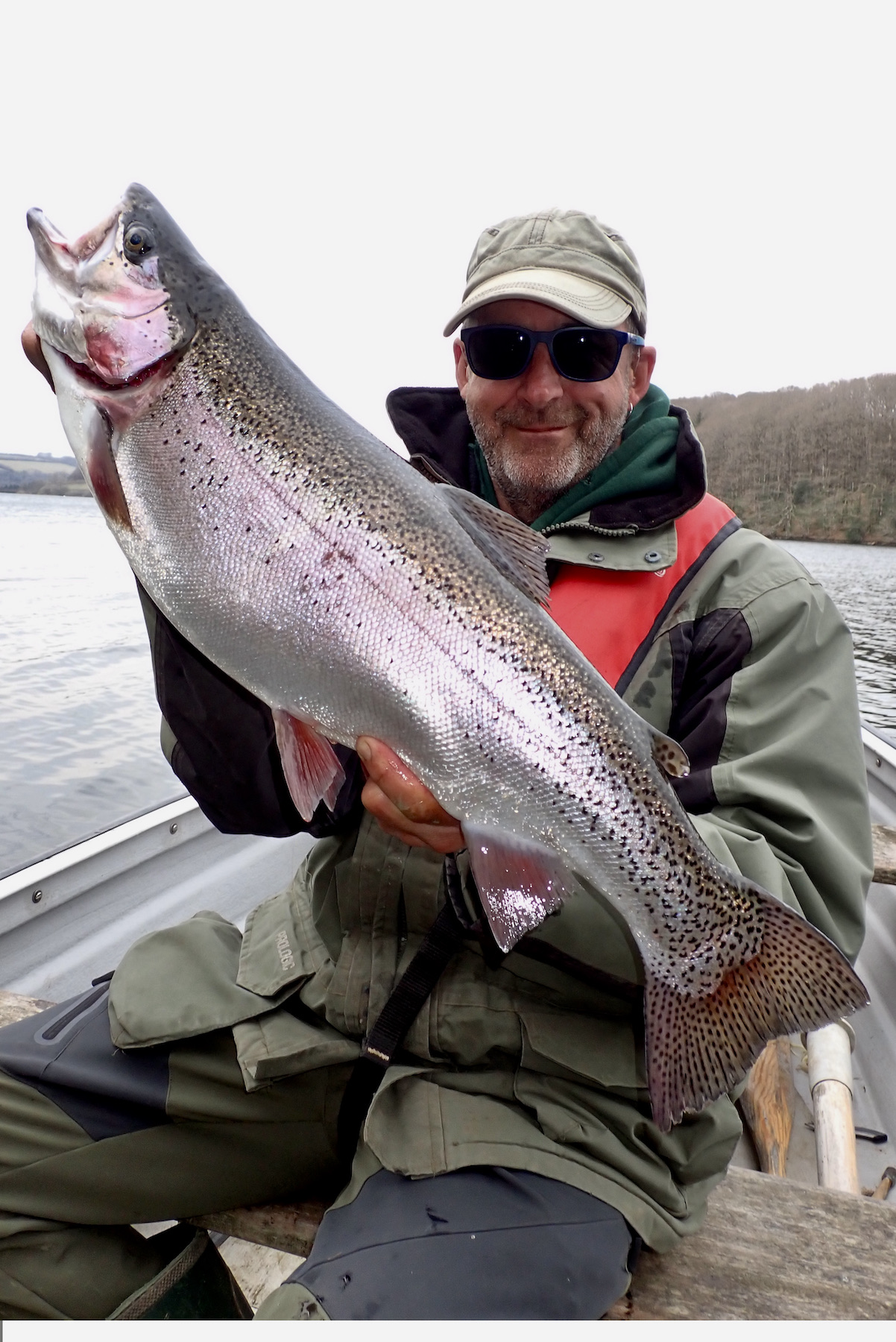
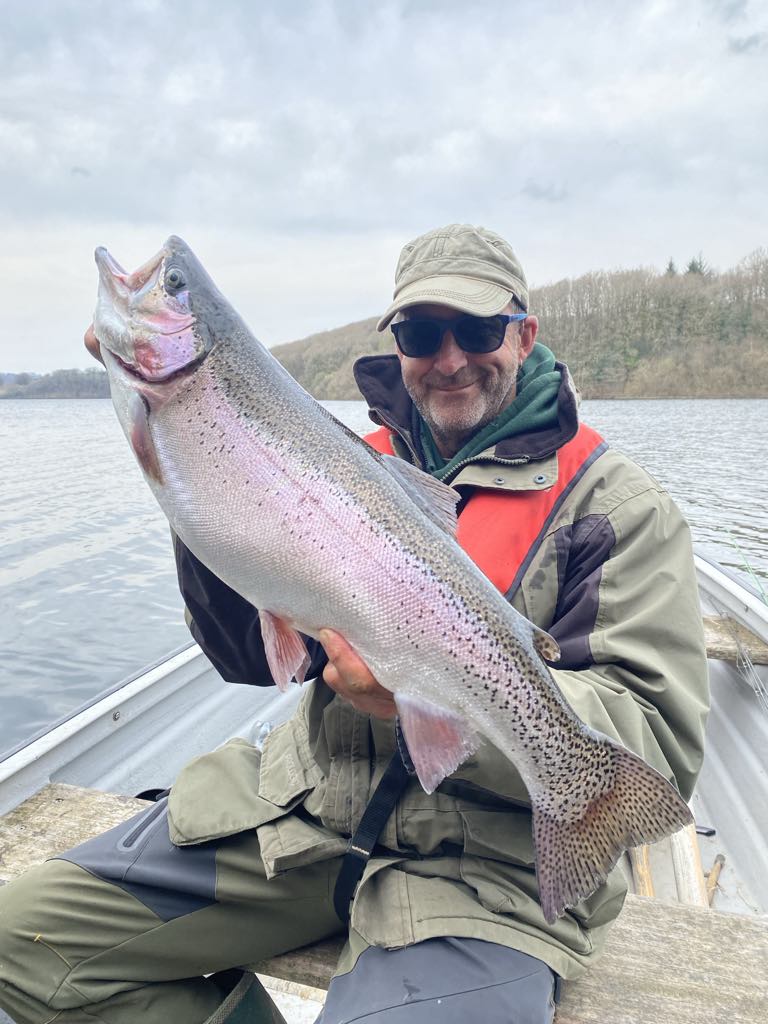
What was most thought provoking was that the fish we had seen earlier appeared much bigger than this one. We caught a few more in the bay and then embarked upon a search back on the far side where we had seen the big fish.
We found that if we positioned the boat carefully thirty yards or so off the bank we could drift into the shoreline where the trout were lurking then start the motor and push back out to drift back in; zig zagging along the bank like this we searched the margin adding trout or missing takes most drifts. I also glimpsed another monster of a rainbow that missed my damsel by an inch as we ran out of water at the end of a drift.
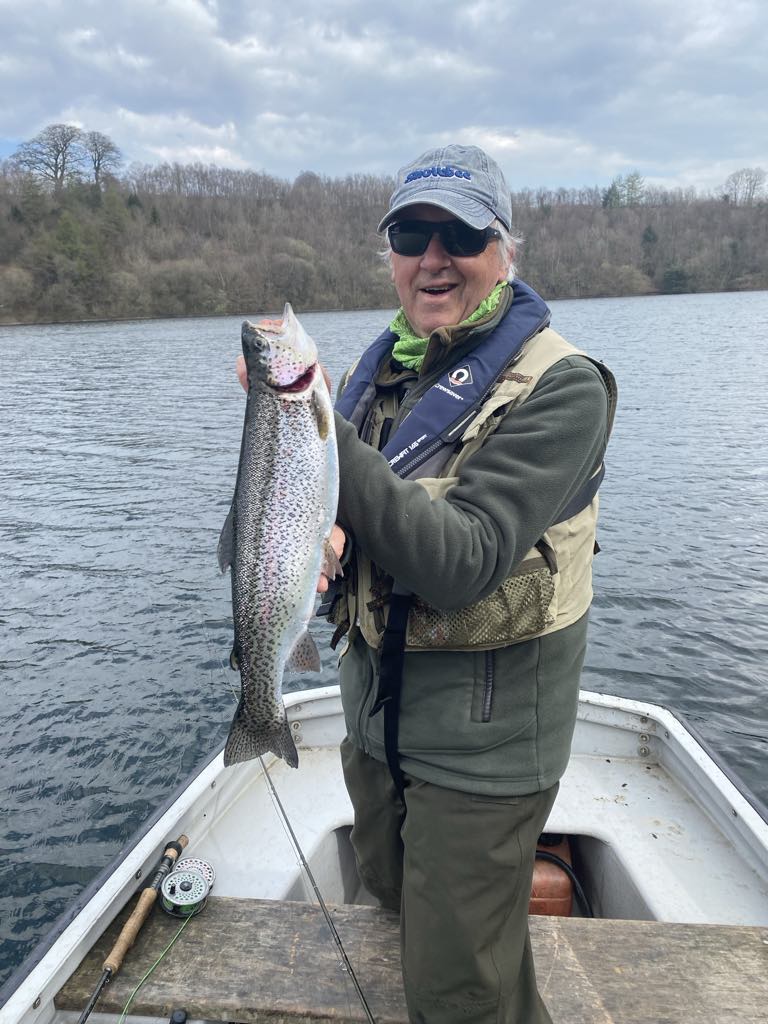

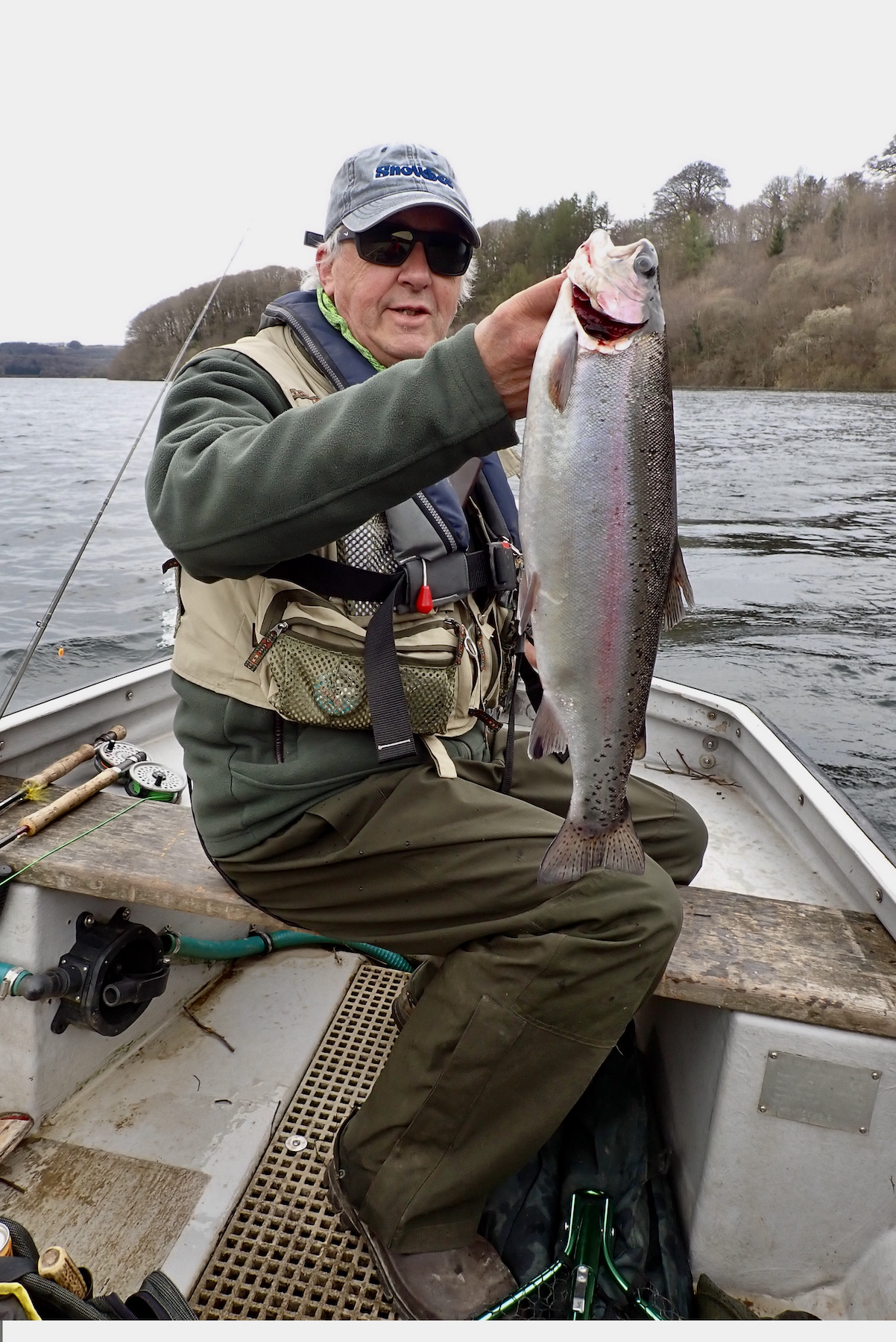
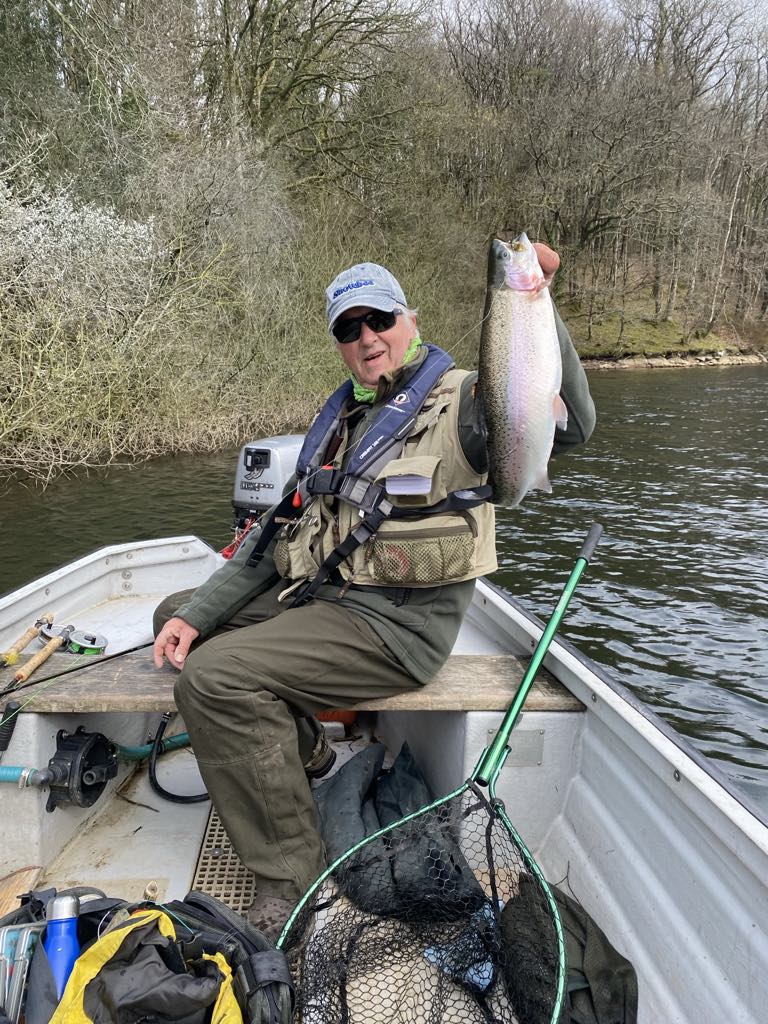
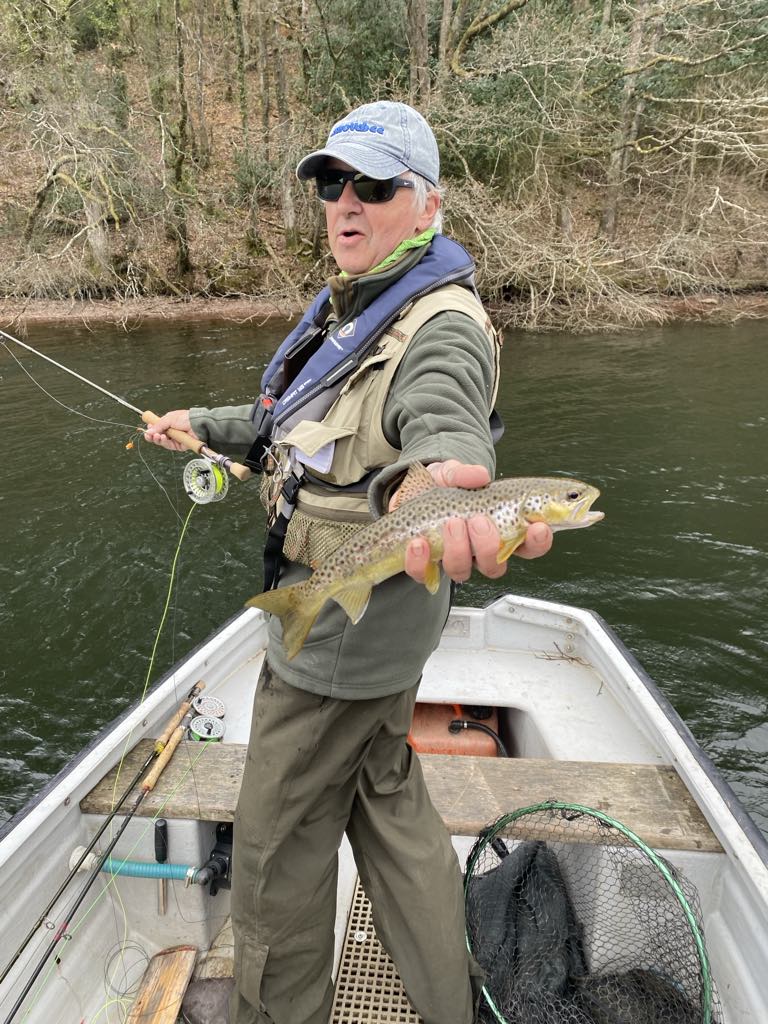
Sport eased for the last hour as rain started to fall. Bruce commented that it had been his best days trout fishing ever and he relished the exciting tug of the trout smashing into the lure. We headed back to the pontoon arms aching slightly, reflecting upon another day of memories made. We ended the day on seven trout each averaging close to 3lb with one solitary wild brown trout. The coming months should bring plenty of great days on this wonderfully wild water. Its stunning rainbows testament to an ambitious stocking program.
In addition to the stocked rainbows there are also some stunning wild brown trout that undoubtedly exceed 10lb! Now that really would be the fish of dreams….
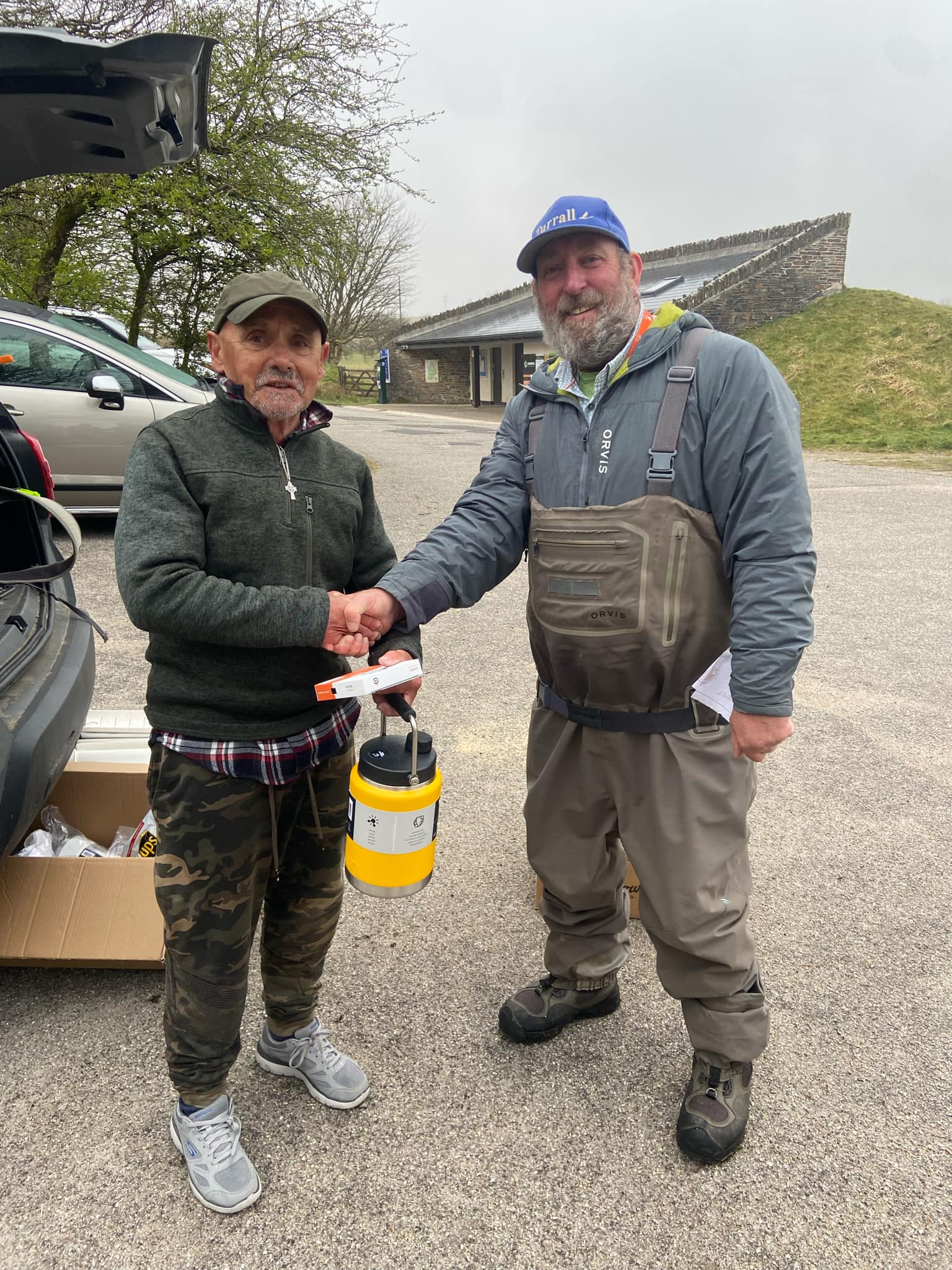
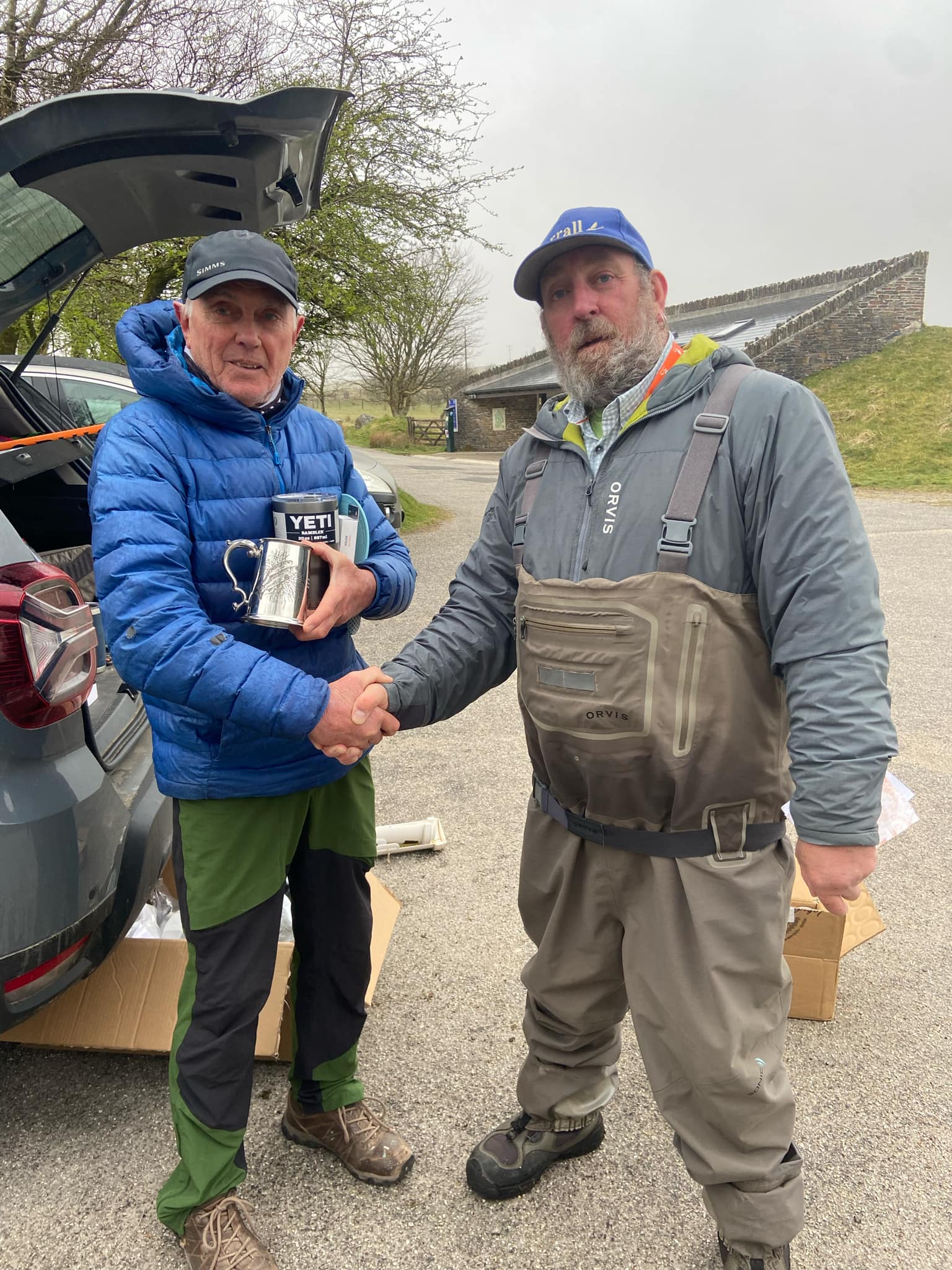
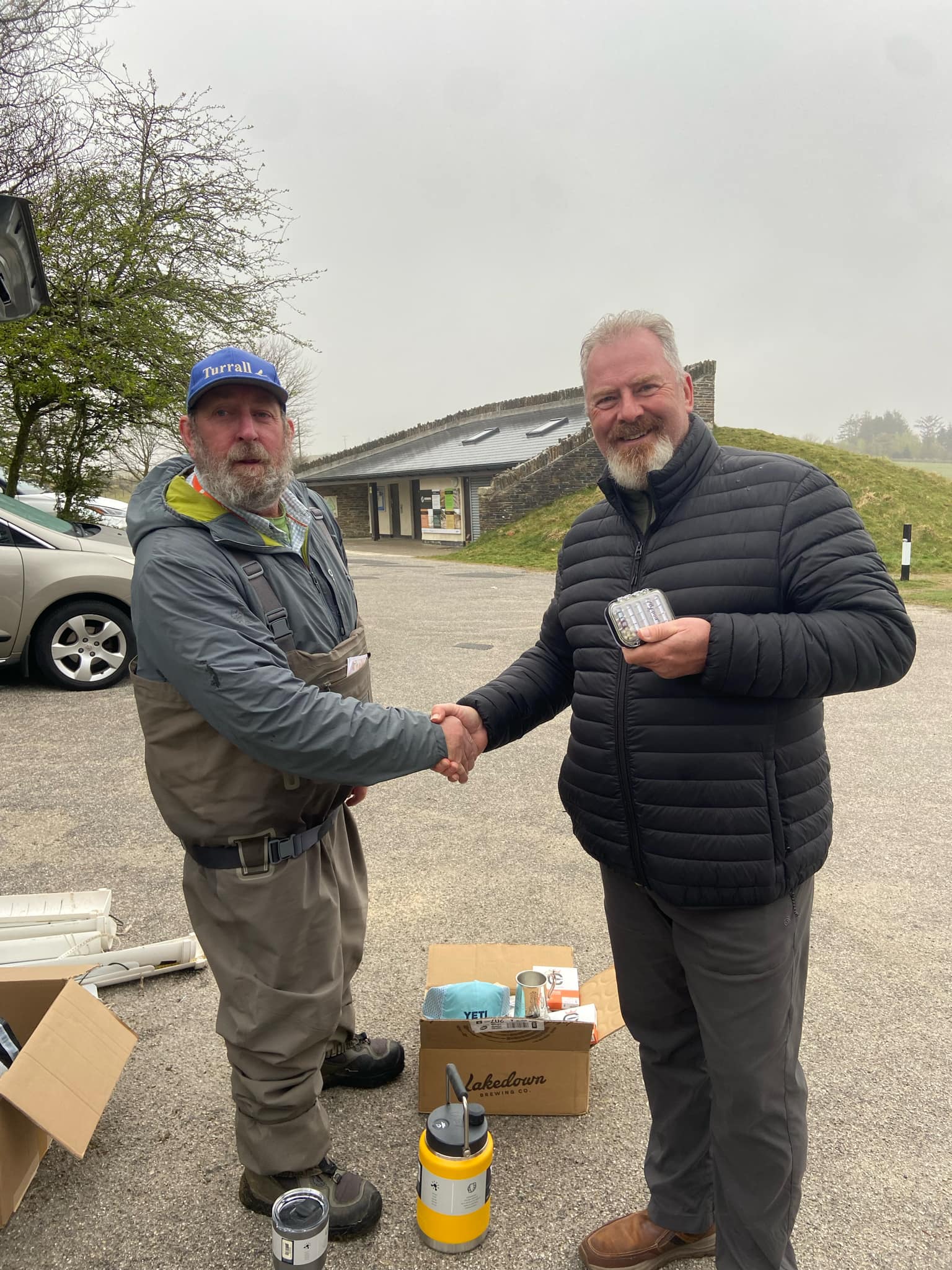
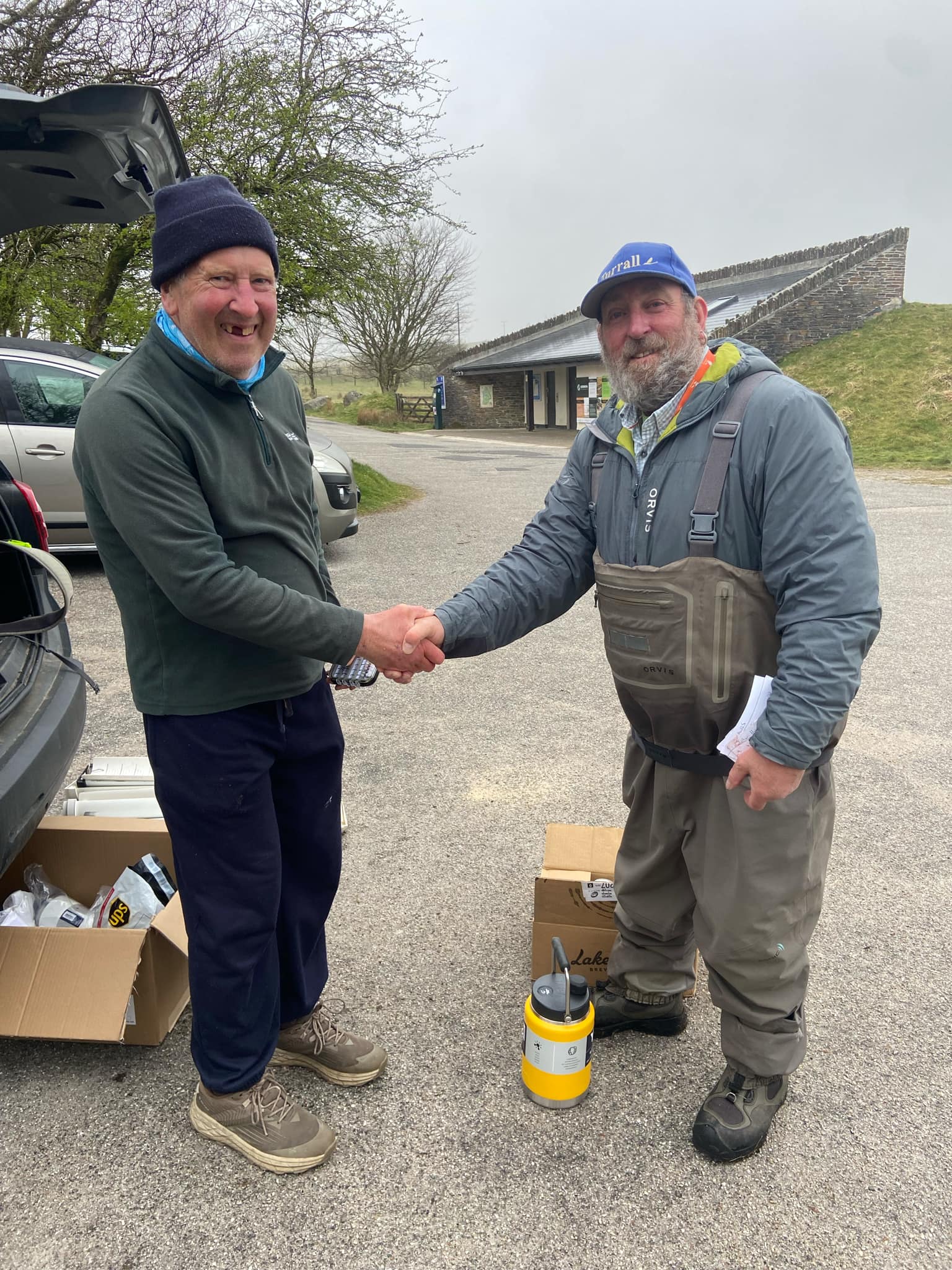
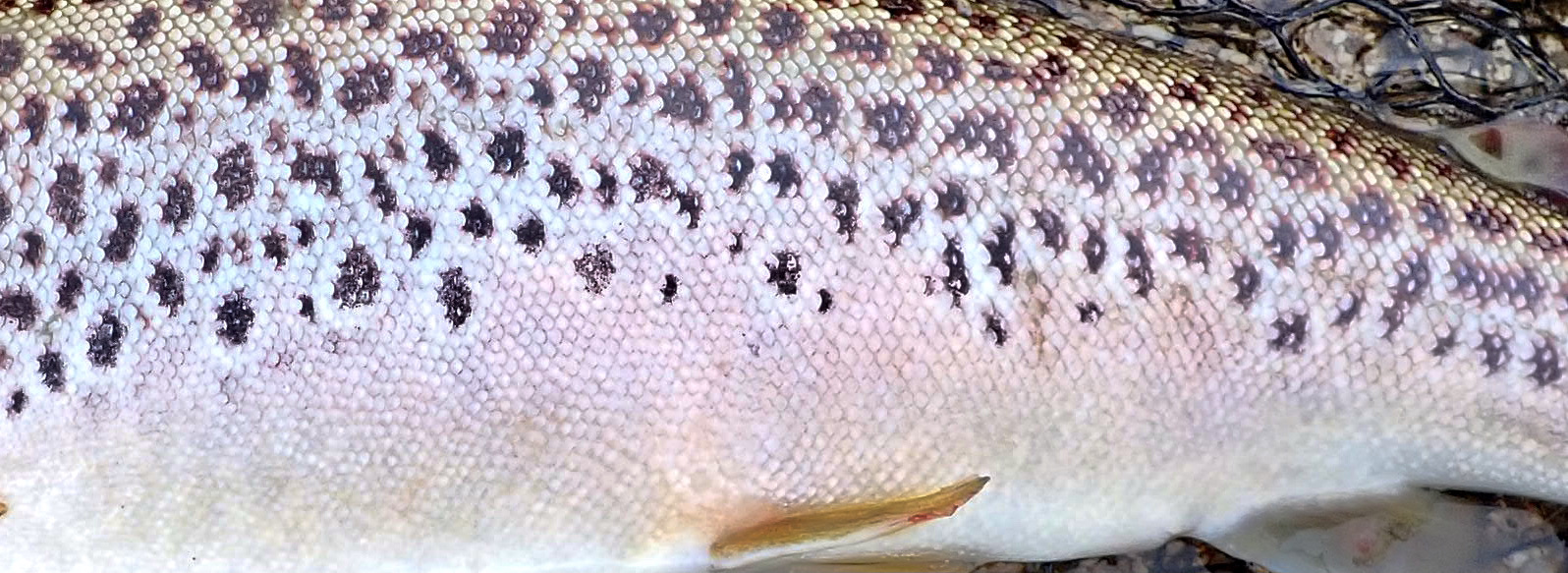
It hardly seems possible that another twelve months have passed since I joined the Fluff Chucker’s at Colliford high on Bodmin Moor. Fortunately I had learnt a valuable lesson that despite the favourable weather forecast it gets cold up there on the Cornish highlands. It seemed relatively mild and with a light breeze I pondered for moment before donning a thick fleece under my fly fishing vest and waders. Familiar faces were gathered around Rodney Wevills car as we collected our measuring gutters and received our goodie pack from sponsors Turral Flies.
We all headed eagerly to the water’s edge with competitors heading to their favoured areas. I had a cunning plan to head to where I had fished before and with a gentle breeze blowing into the bay I felt sure a few fish would be present close in. I had set up with my new Snowbee Floating Line and leader with three flies. A black bead headed tadpole on the point, Black spider on the middle dropper and a black and red Zulu on the top dropper a combination that I would have confidence to fish most days in early spring.

The first hour proved difficult as I searched the water contacting a decent trout after ten minutes that threw the hook after a few seconds and a spectacular somersault!
A short while later the line again tightened and for a second or two I thought I had hooked the bottom; that slowly started to move followed by a glimpse of a thick spotted flank that erupted from the water in a flurry of spray! This was a beauty I thought but elation turned to despair as the hook hold gave way the big brown trout disappearing from whence it had come. Another tale of the one that got away added to life’s toll!
The leader was left tangled requiring a re-tying. This was not a brilliant start, then the wind started to strengthen and I nearly lost my cap the fastening button failed. I pulled my buff up over my cap and soldiered on as the wind picked up. I persisted for a while but no more takes followed and a move seemed a good idea. I walked a half a mile or so to an area I had caught from on my last two visits.
First cast and I hooked a trout that came detached after a brief leap from the lake. Fifty yards further along the bank and I hooked a brown trout of 36cm. Two casts later a beauty of 42.5 cm was safely in the net. Things were starting to come right and I fished on now with renewed confidence.
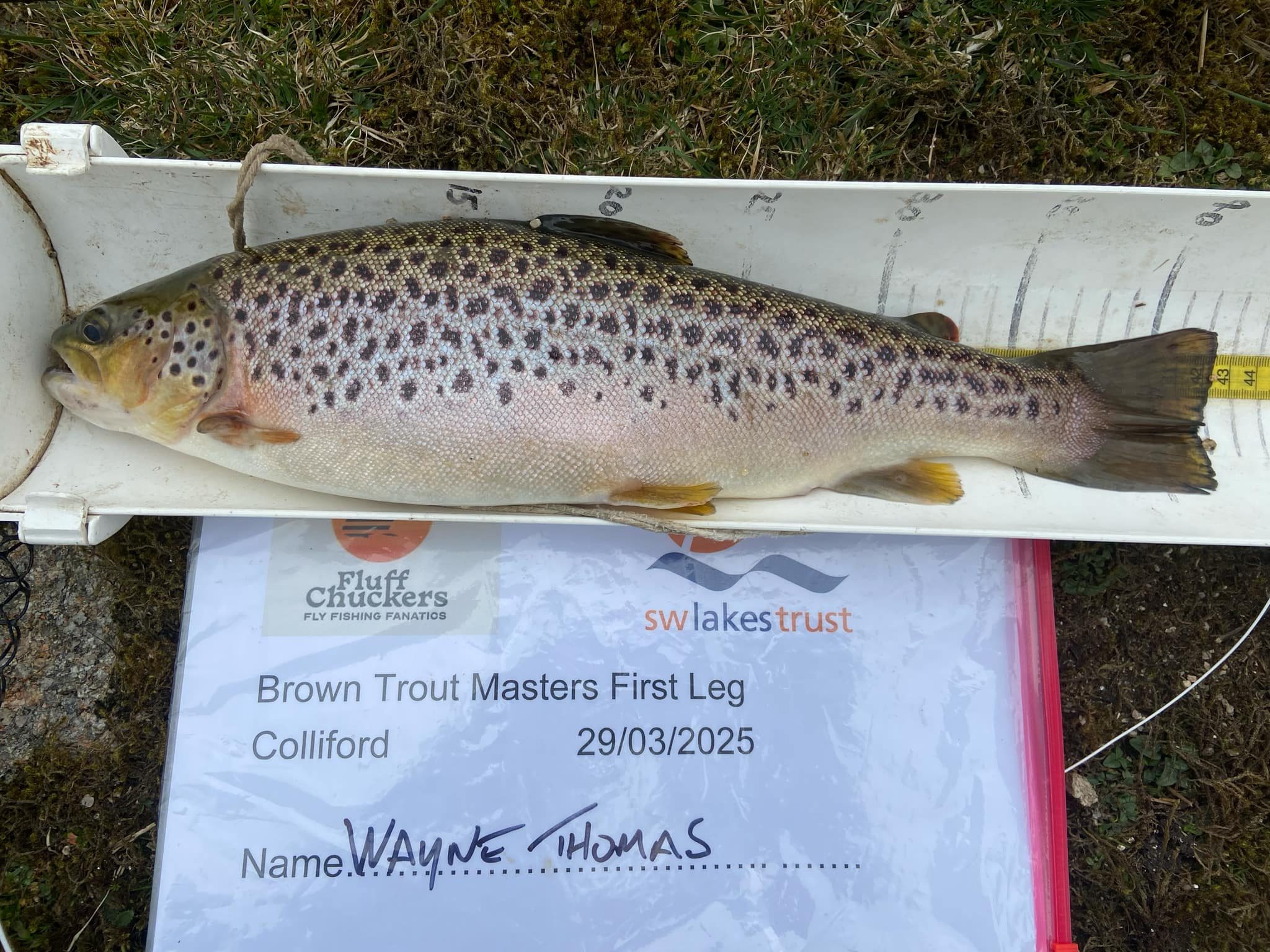
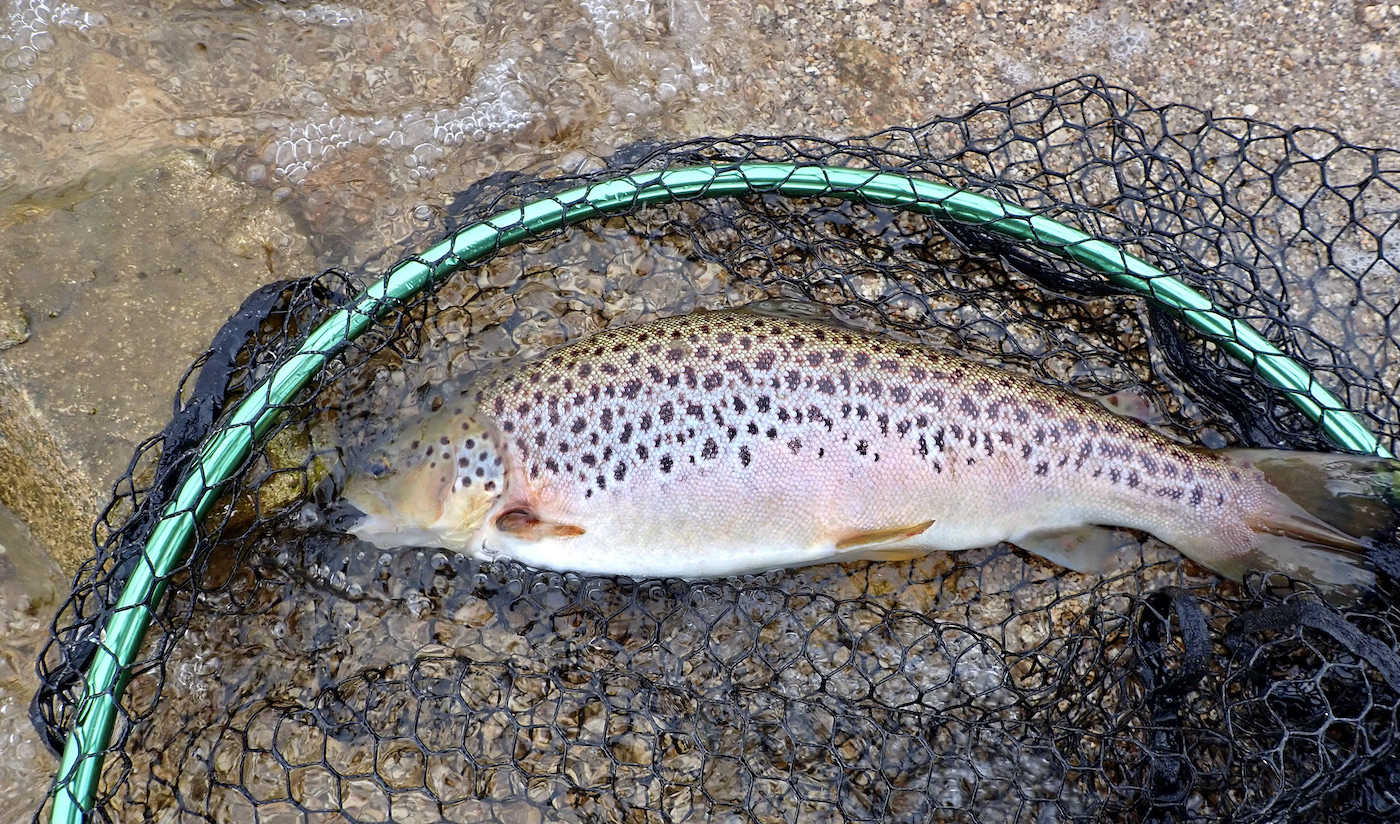
The wind was by now strong and bitter cold with the sun hiding behind grey clouds making it a rather bleak and inhospitable environment.
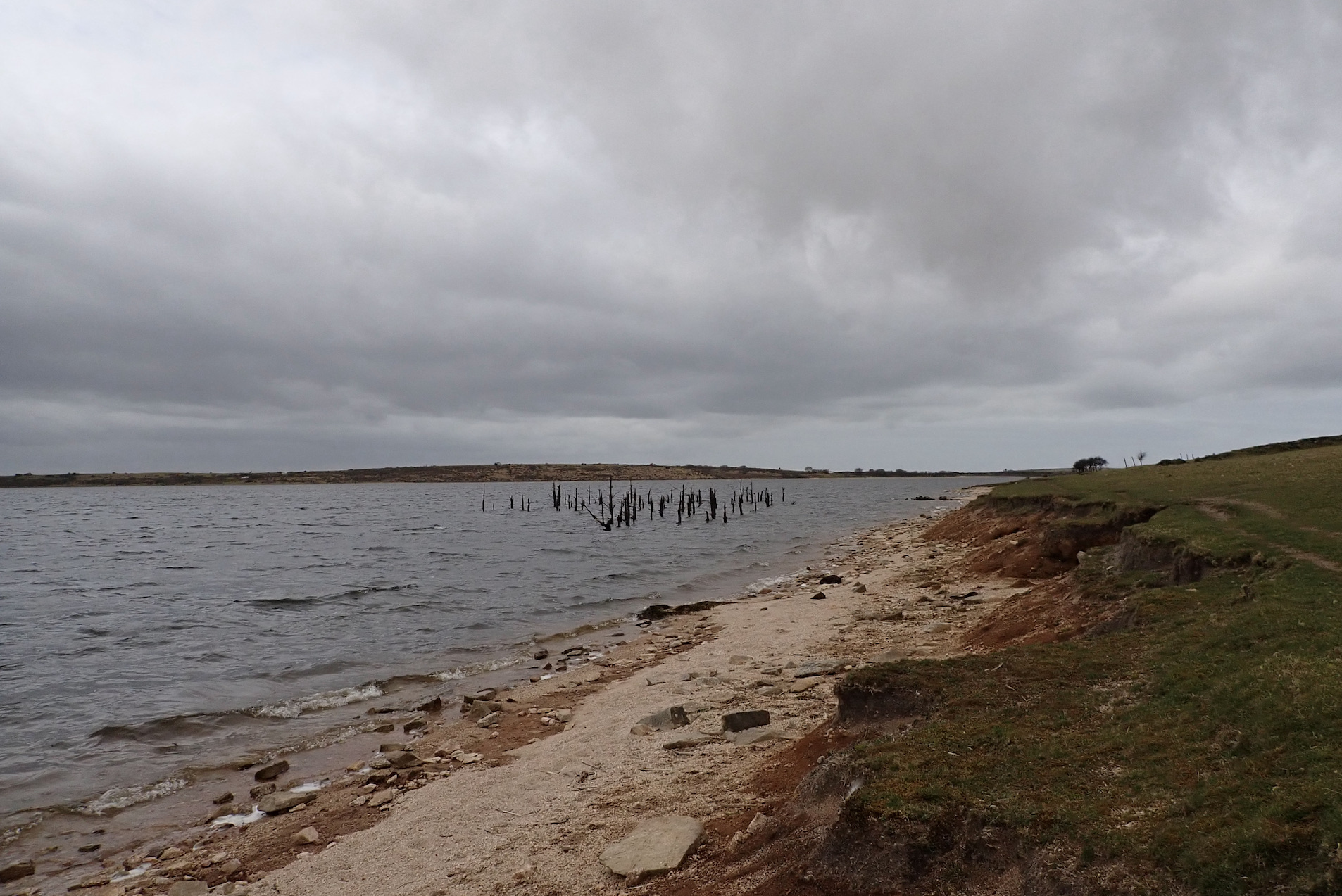
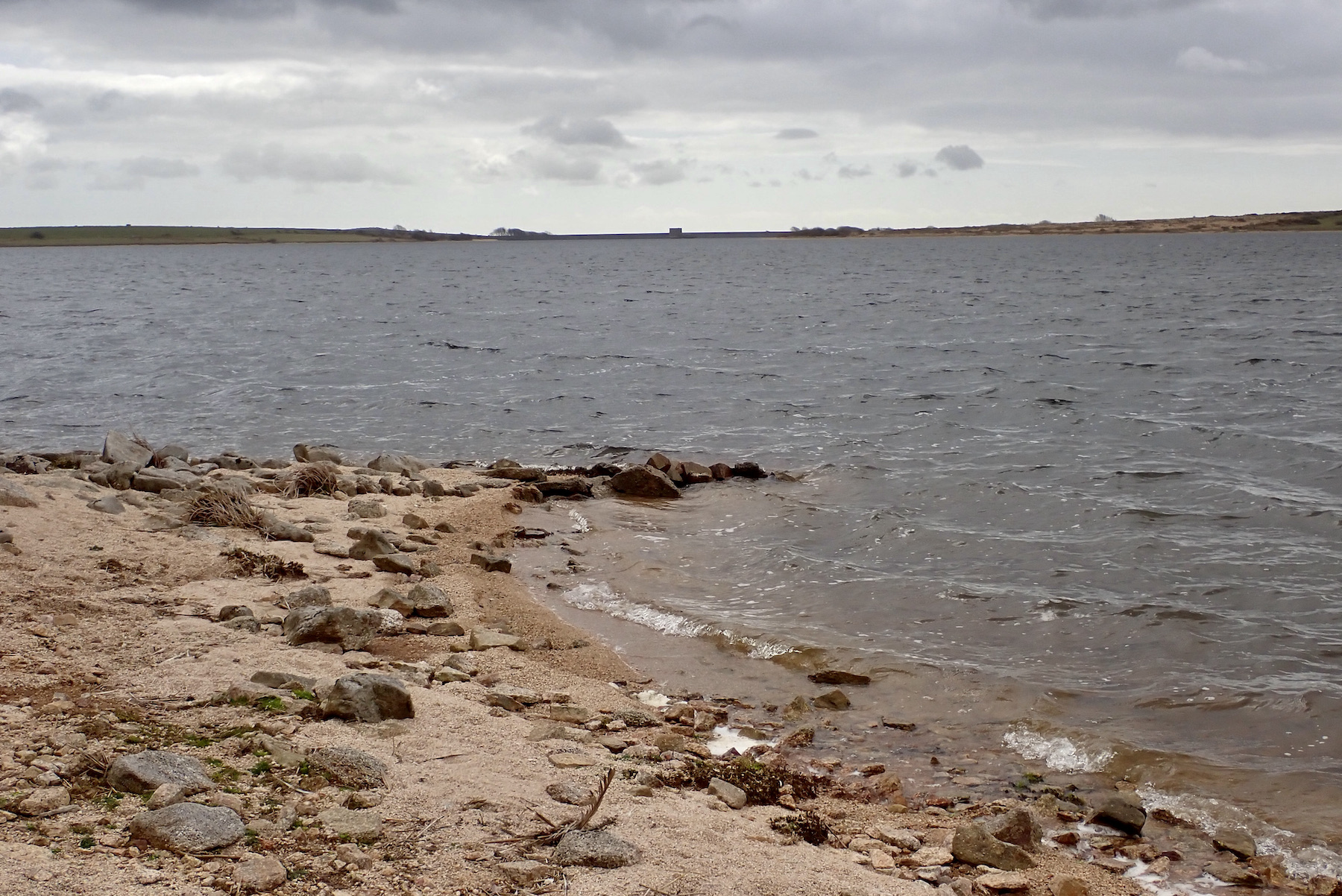
I added another small brown before deciding to head back to where I had started the day adding another two trout to end the day with five trout. In truth I wasn’t to disappointed to reel in at 5.00pm and leave the cold water behind for a while.
Back at the end of competition meet up Rodney worked out the results and I listened as tales of the day were told. The cold wind had resulted in widespread chilling to the bone, slip and trips, bloodied fingers from stray hooks and plenty of tales of escaping trout. All agreed through chattering teeth that it had been a great day and that the next event is eagerly awaited.
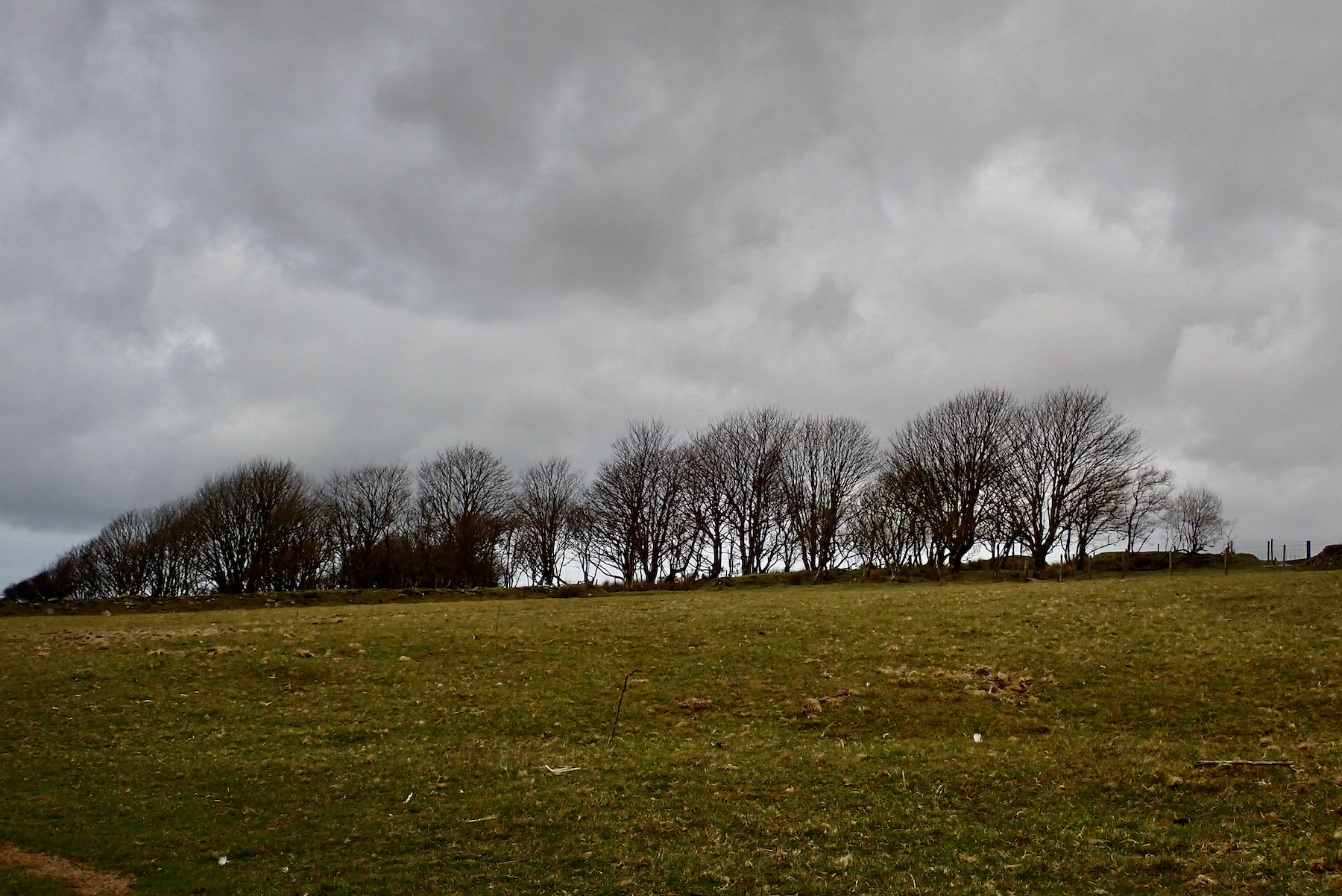
I was surprised how low the reservoir is so early in the season. This gives more open bank to fish but is perhaps concerning for the summer ahead.
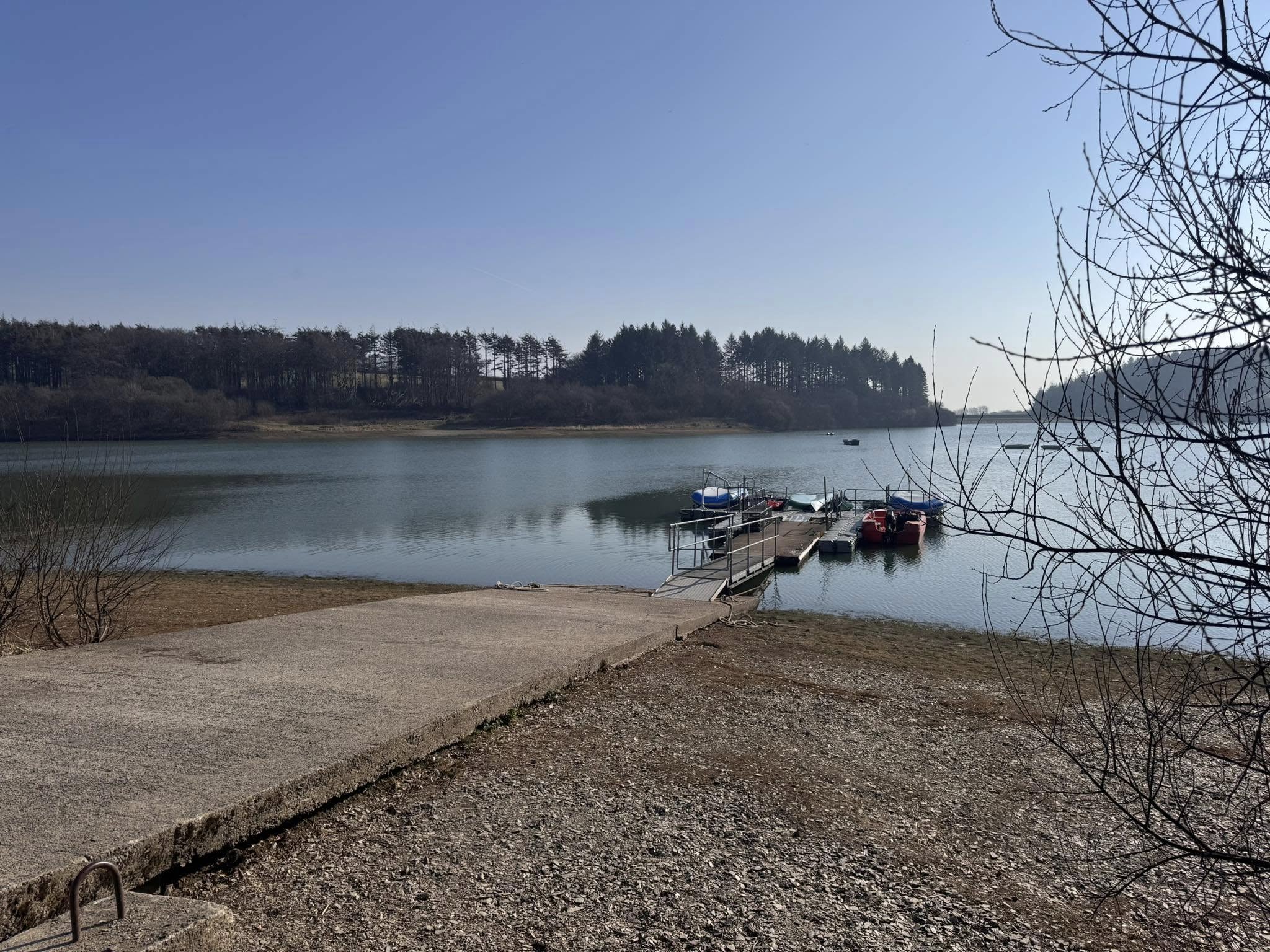
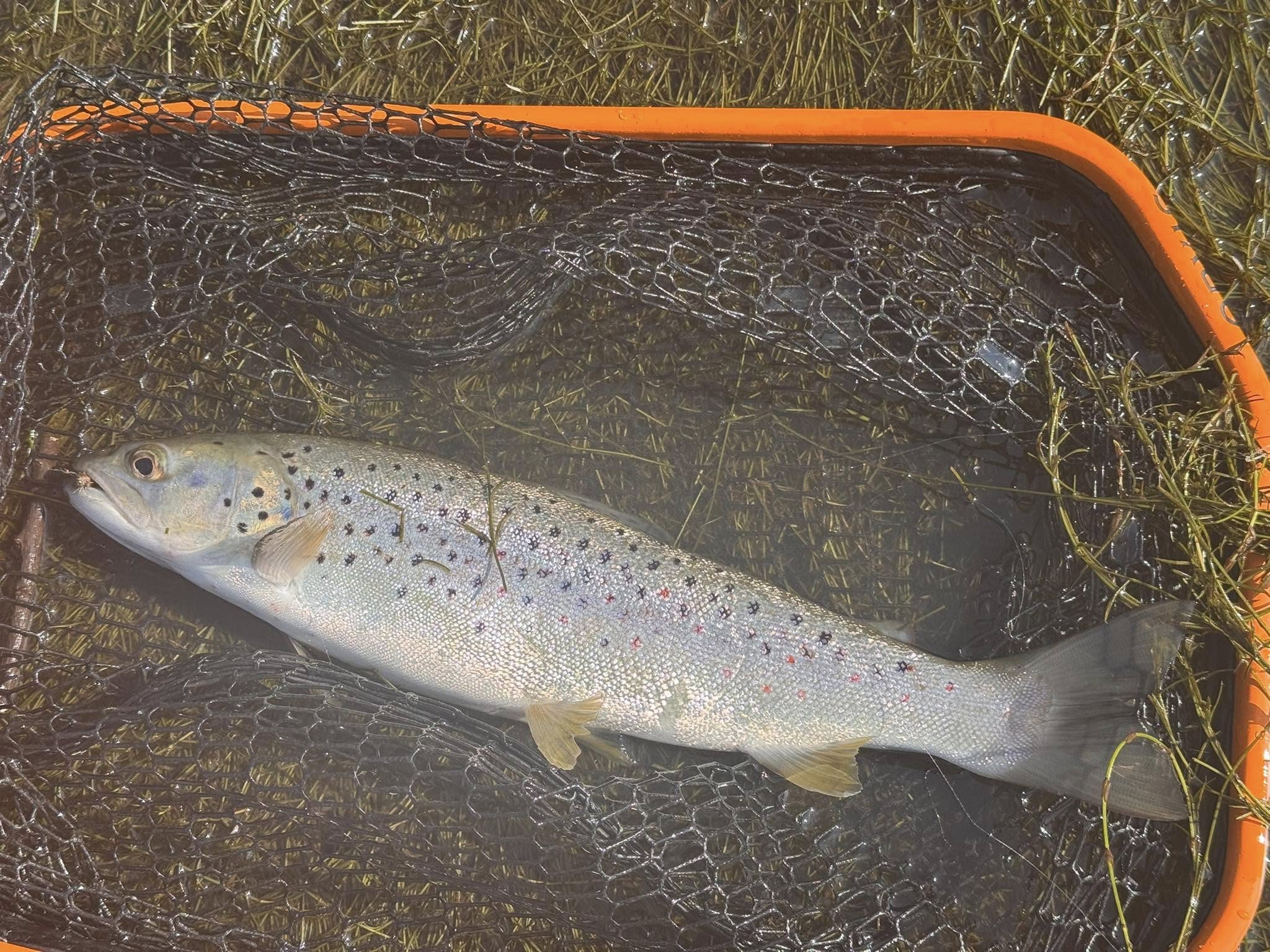
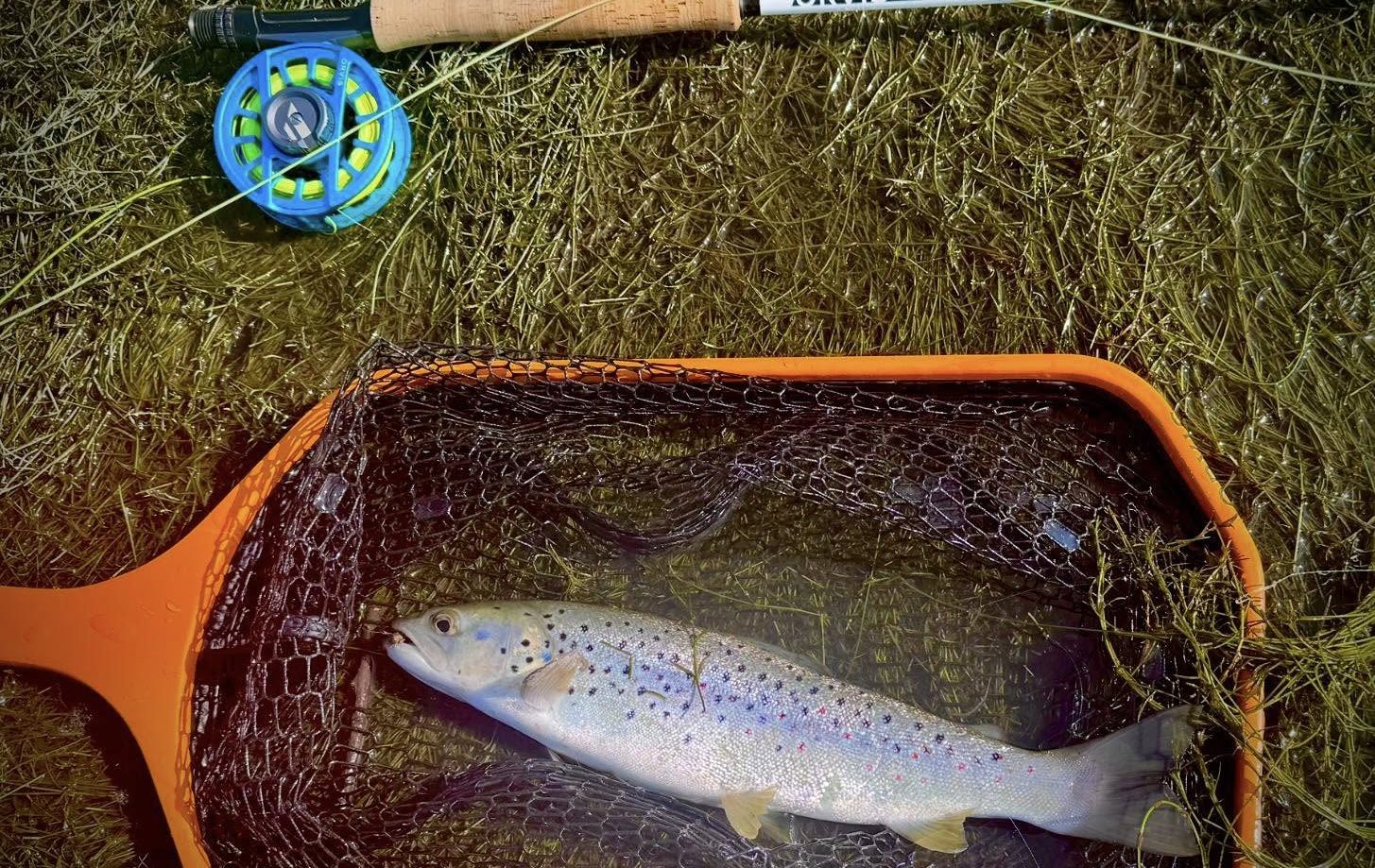
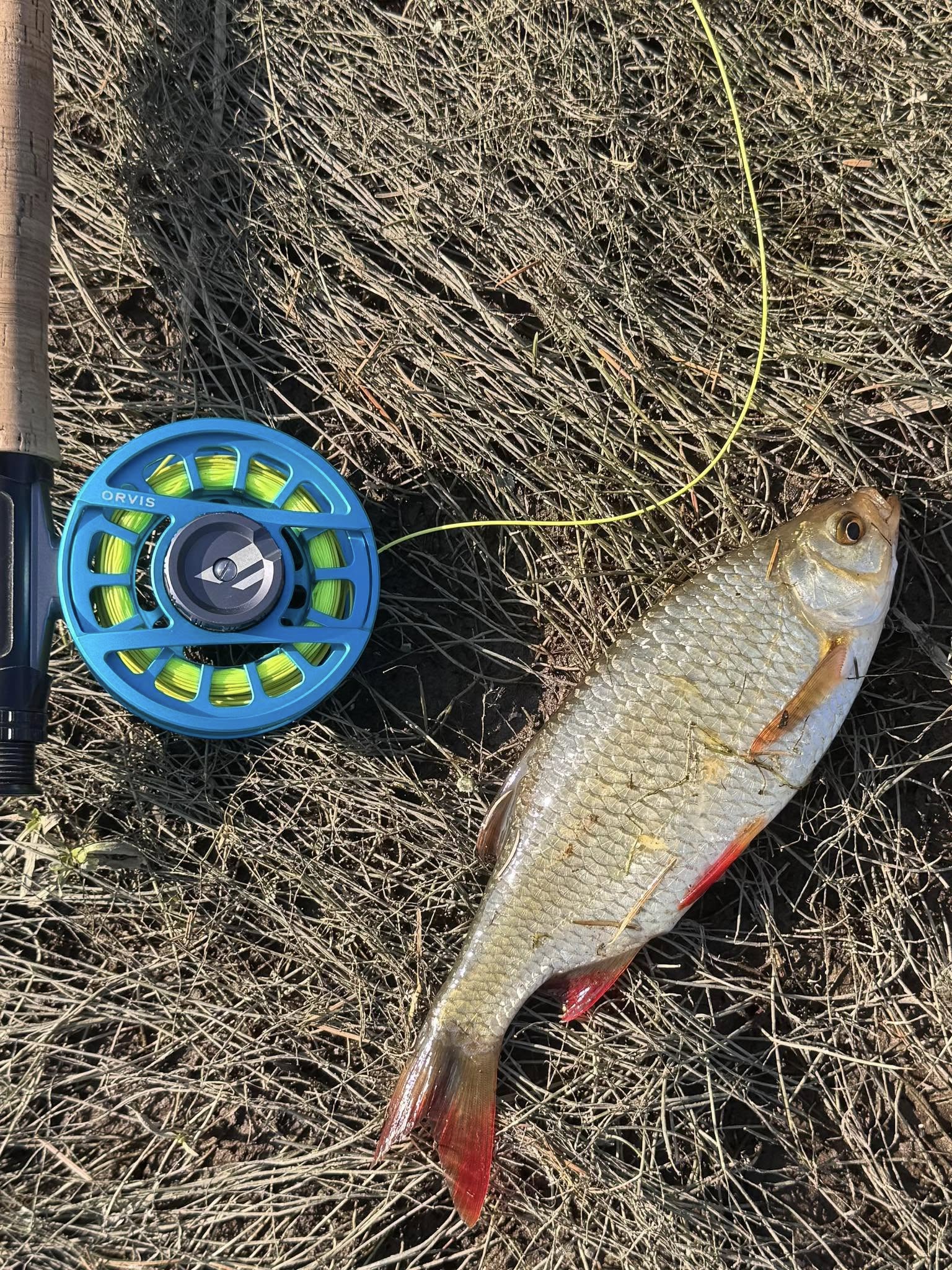
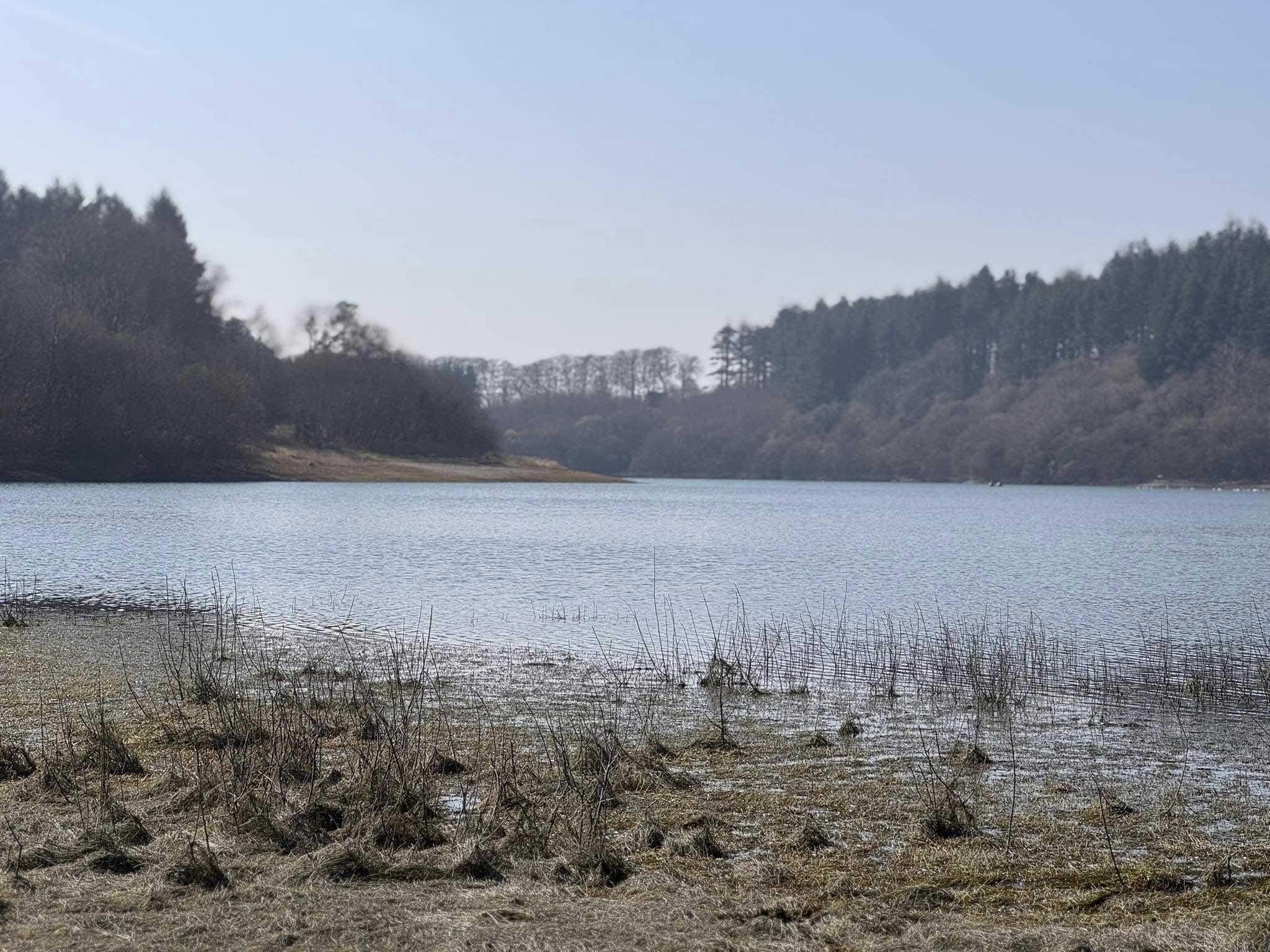
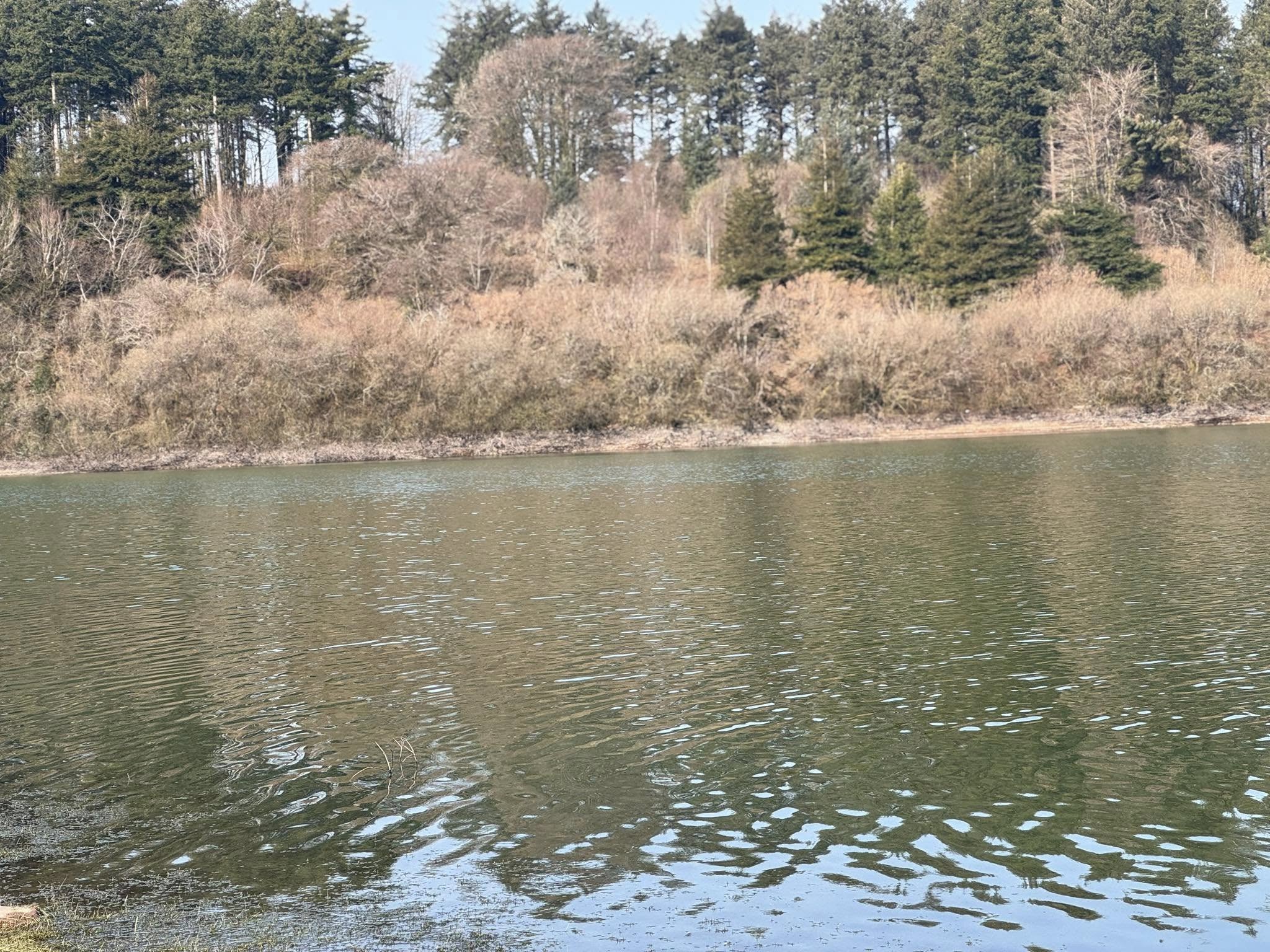
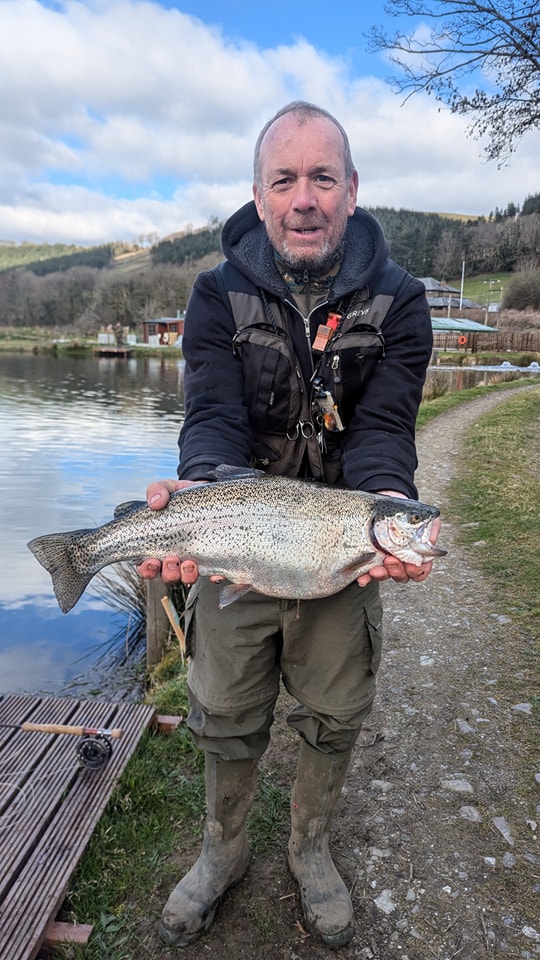
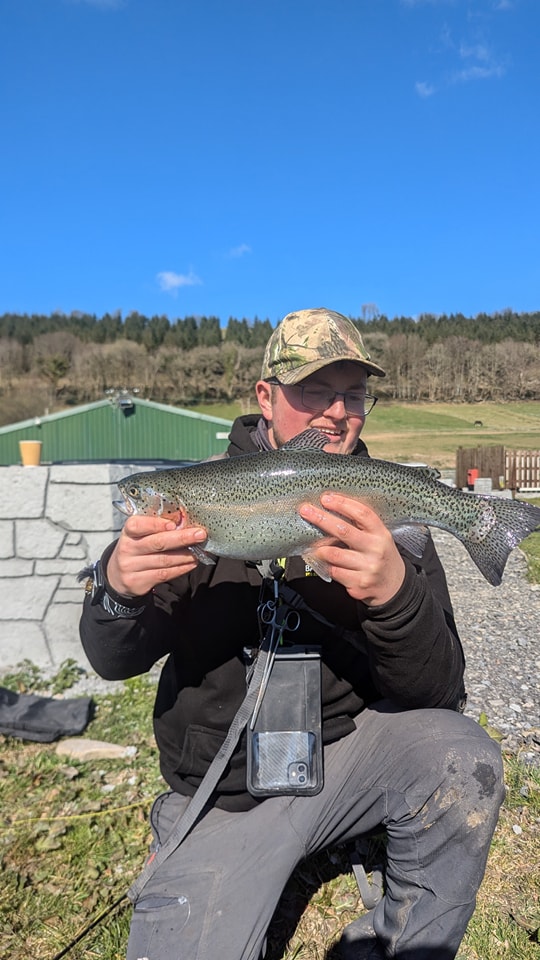






The 2025 trout fishing season got underway on rivers across North Devon on March 15th and with rivers in prime condition it was good to see that several anglers had enjoyed success as I glanced through my social media accounts.
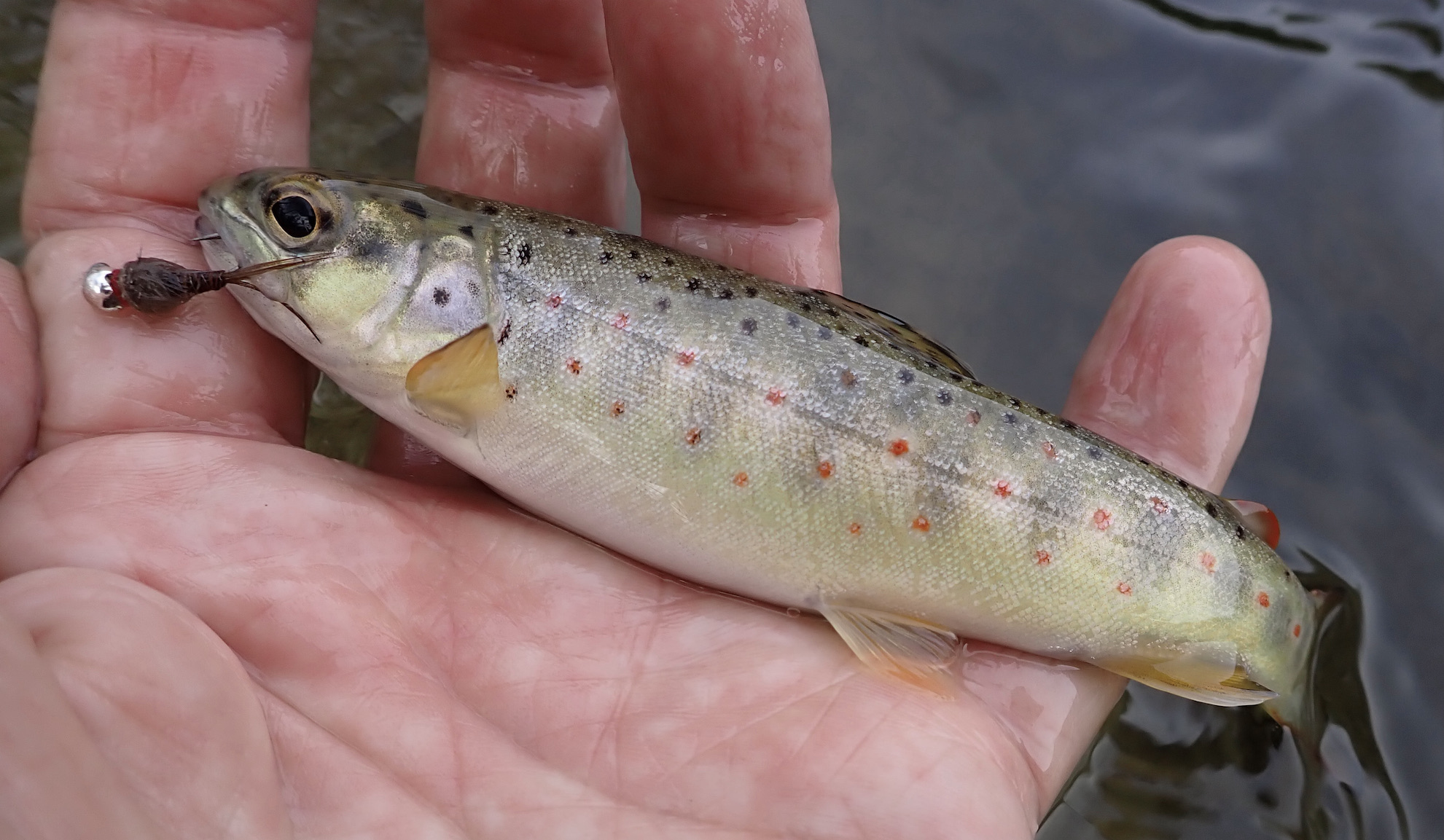
Whilst I would have enjoyed a day on the river I was privileged to have been asked to be guest speaker at the Taw Fishing Club’s AGM at the Fox & Hounds Hotel at Eggesford.
The Taw fishing club was established in 1912 and is a flourishing club of predominantly wild brown trout devotees. The AGM signals significant change with long standing and hard-working Chairman Professor Gordon Murray standing down after several years of sterling service. In his passionate closing speech Gordon gave his thoughts on the past present and future of the club emphasising the need for younger anglers to gradually replace the aging dynamic of the club. The club is at present in a very healthy and robust state with five miles of excellent trout fishing.
Conservation of the river and its eco system were key throughout the AGM and as I attend numerous such meetings across Devon I realise just how big a part anglers play in helping to maintain vital habitats across the region. There was also conversation about how we need to work with other interested parties to protect our rivers. Surfers Against Sewage and Wild Swimming Groups have certainly done a great deal to ensure that rivers are now higher on the political agenda and we should give them credit for their success where we have sometimes failed to get the message across.
My own talk was delivered to an attentive and polite audience with a degree of trepidation for following Gordon Murray a well-respected and eloquent speaker was a little daunting. My bullet point notes are included below :-
Notes for talk
After a moment of silence I was relieved when the membership embarked upon a lengthy discussion stimulated by my rambling delivery. I sincerely hope some of the ideas generated will sow seeds for future generations to immerse themselves in this wonderful pastime.

At the Arundell Arms opening day was celebrated in style with a gathering of keen anglers enjoying conversation, complimentary coffee and bacon rolls before a traditional toasting of the river. Several beautiful wild brown trout were tempted by anglers despite the cold North East wind.

Rainbow Trout Waters Opening Weekend – March 2025
The new season is now firmly under way at the South West Lakes Trust Rainbow trout fisheries, opening on 1 March (with prior preview days for season ticket holders). Brown Trout fisheries are due to open on 15 March. Where available, boats are now on the water, and should be pre-booked (online or via the telephone). The weather was perfect for the start of the season, with blue skies, a gentle breeze and some warmth in the air. All of the lakes are now at full capacity.
Fishing:
Kennick – Rods averaged over 3.7 fish per angler during the opening sessions, with fish generally located off The Lawns, The Narrows, Clampitts Bay, East Wall and Bracken Point. The fish were well down in the water column, with sinking or sink-tip lines locating fish, with a slow figure-of-eight retrieve. A selection of lure patterns (Green Boobies, Goldhead Blobs, Cats Whiskers, Black Tadpoles) as well as some nymphs (Goldhead Montana, Damsel, Red Montana) and the occasional Buzzer all caught fish. Most fish averaged around 2lb, with Darren Penfold catching the best fish of the weekend, at 3lb.
Siblyback – The season opened on excellent form – anglers averaged 5.95 fish per rod, with fish mainly located along the North Bank, Two Meadows, West Bank and Stocky Bay. While some fish were caught on Montana and Damsel Nymphs, most were caught on a variety of lure patterns (Orange FAB, Kennick Killer, Snake, Black and Green Fritz, Orange Blob and Humungous) fished on Intermediate or Sink-tip lines (at between three and four metres depth) with a slow retrieve. Ethan Price caught the largest fish, at 3lb.
Burrator – Here the season opened with a flying start, with anglers averaging 4.6 fish per rod, mainly from Longstone, Pig’s Trough, Lowery Point, Back Bay and Bennetts. Intermediate or floating lines with a long leader (at about one metre depth) with a fast retrieve proved to be the most successful method, with fish taking Nomads, Blue Flash Damsels, Red Diawl Bachs, Cormorants and Orange Fritz lures. Most fish averaged around 2lb, with Ian Foxley catching the best fish, at 56cm, or 3lb 14oz.
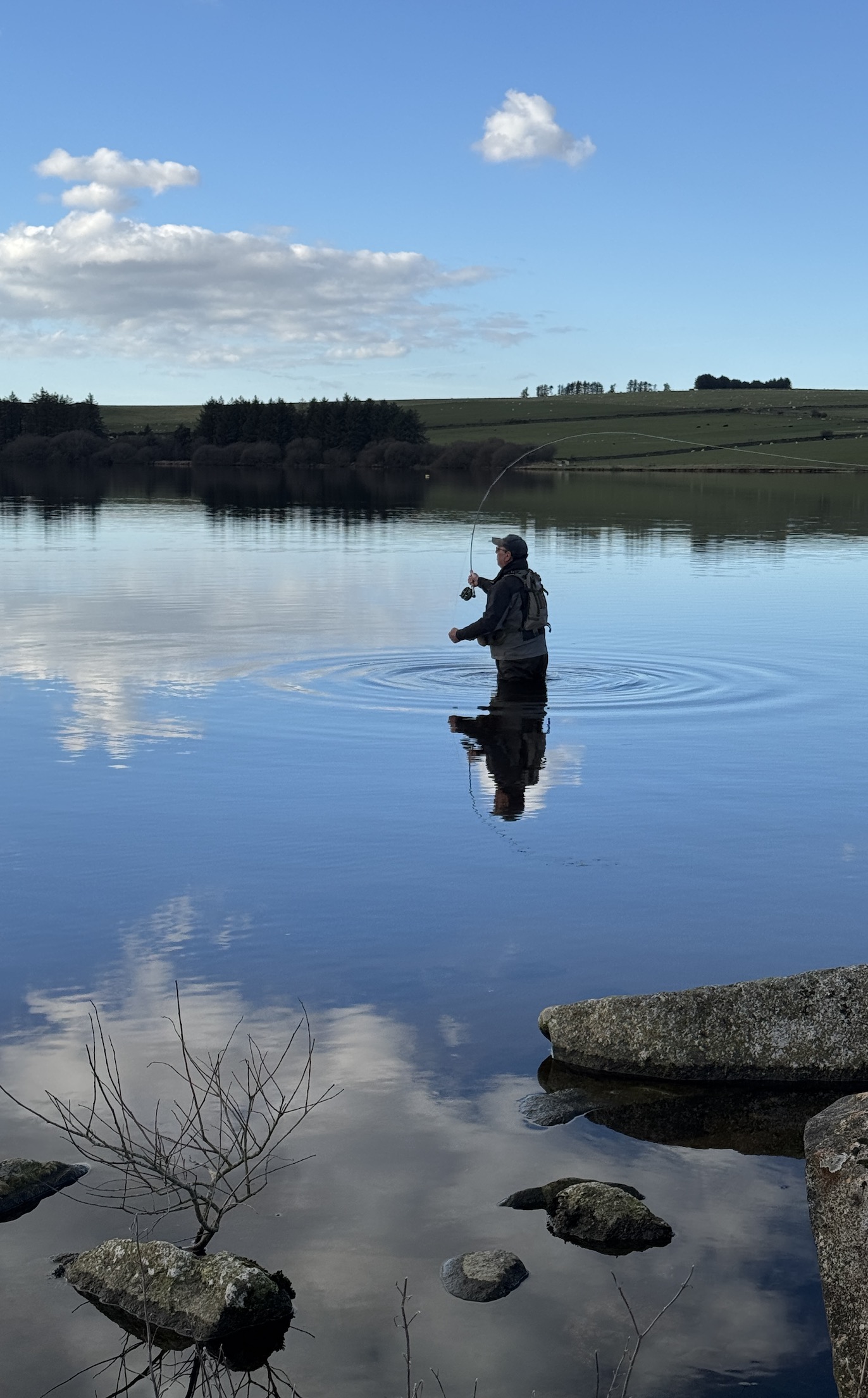
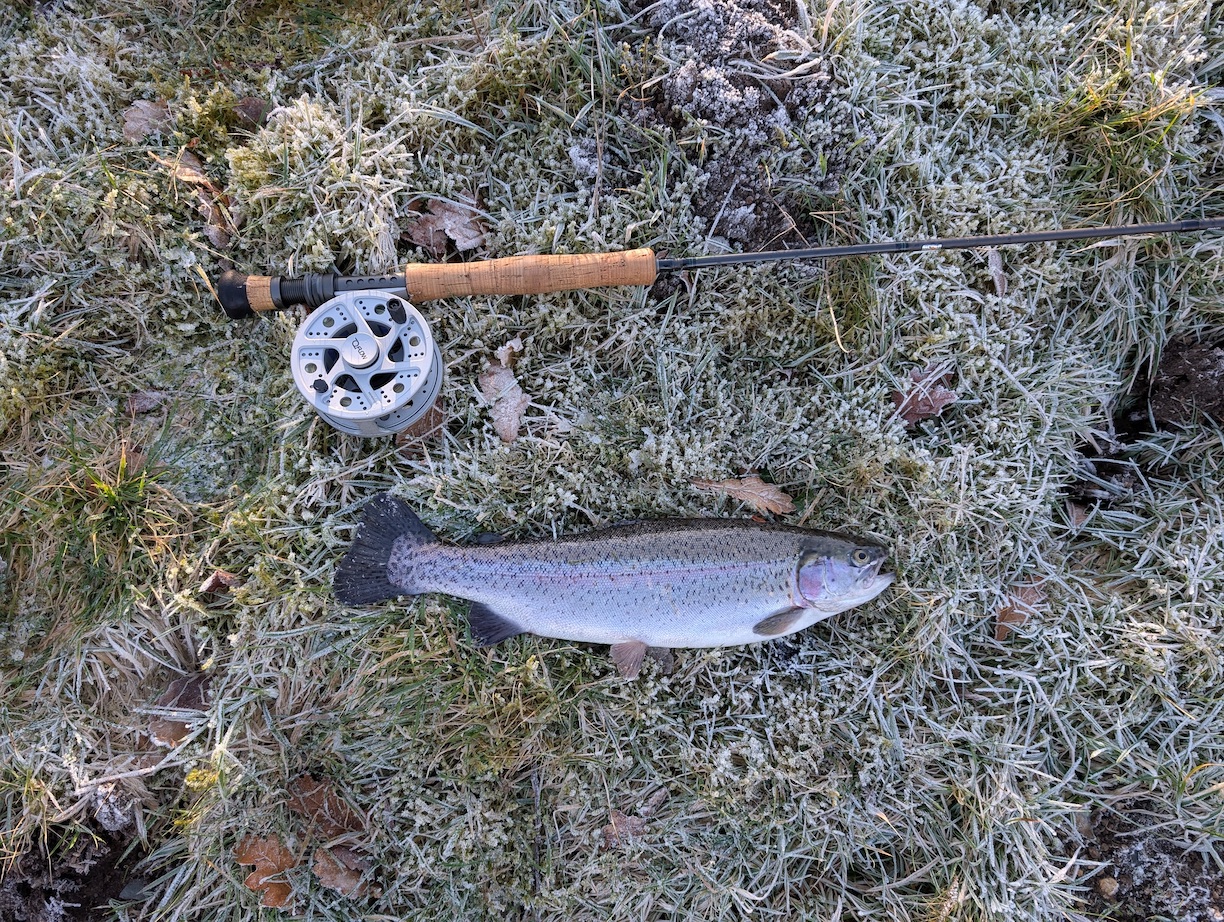

Stithians – Here the fishing was slower, with anglers averaging 1.1 fish per rod over the opening weekend. Fish were well spread out around the fishery, notably at Yellowort, Goonlaze, Ray’s Beach, Hollis and the deeper water by the dam. Most feeding fish were around two metres down, and were mainly caught on Intermediate or Sink-tip lines, with a slow retrieve. Successful flies included Black and Peacock Spiders, Hares Ears, Montanas and Damsel nymphs, as well as Orange Blobs, Cormorants and Tequila FABs. Simon Peters managed a couple of fish at 1lb 8oz casting into the wind off Deep Bank.
Another successful Fly Fair was held at Roadford Lake on 23 February, with fly-tying demonstrations, casting lessons, and trout cookery demonstrations. Charles Jardine opened the event, which also included a variety of tackle and fly-tying suppliers, as well as the chance to meet local clubs and talk fishing with old friends, and some bargains to be had on the Kennick Club used-tackle stand.
Please see the Trust’s website (www.swlakestrust.org.uk/trout-fishing) for more information on buying tickets, boat availability and booking, and forthcoming events.
Chris Hall (March 2025)
A NEW SEASON UNDERWAY AT WONDERFULL WIMBLEBALL
The Exmoor landscape glistened with frost as the sun climbed in the clear sky. I negotiated the icy roads on my way to Wimbleball on the last day of metrological winter.
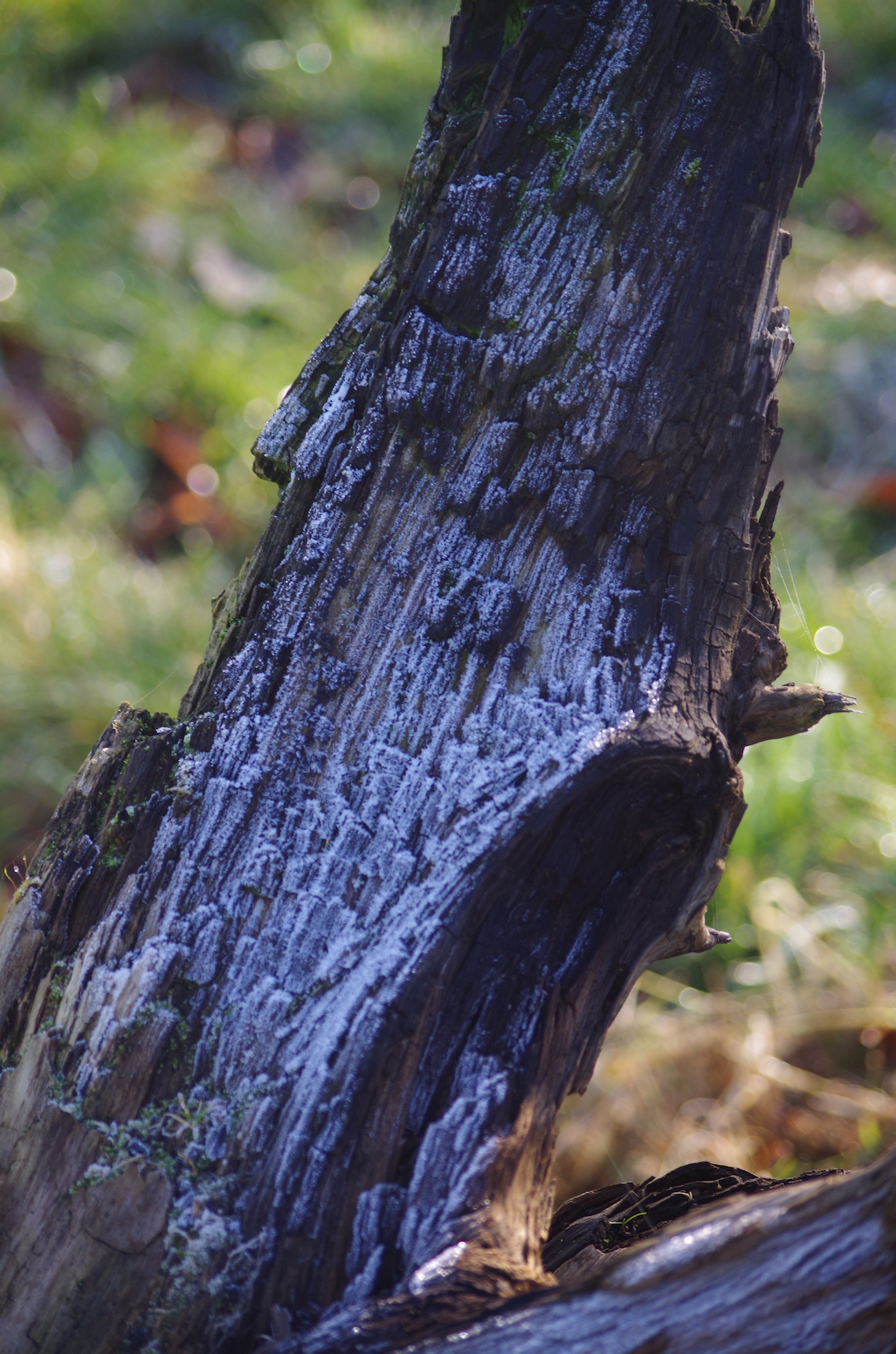
A veil of white mist hid the reservoir from view as I approached with not a breath of wind.
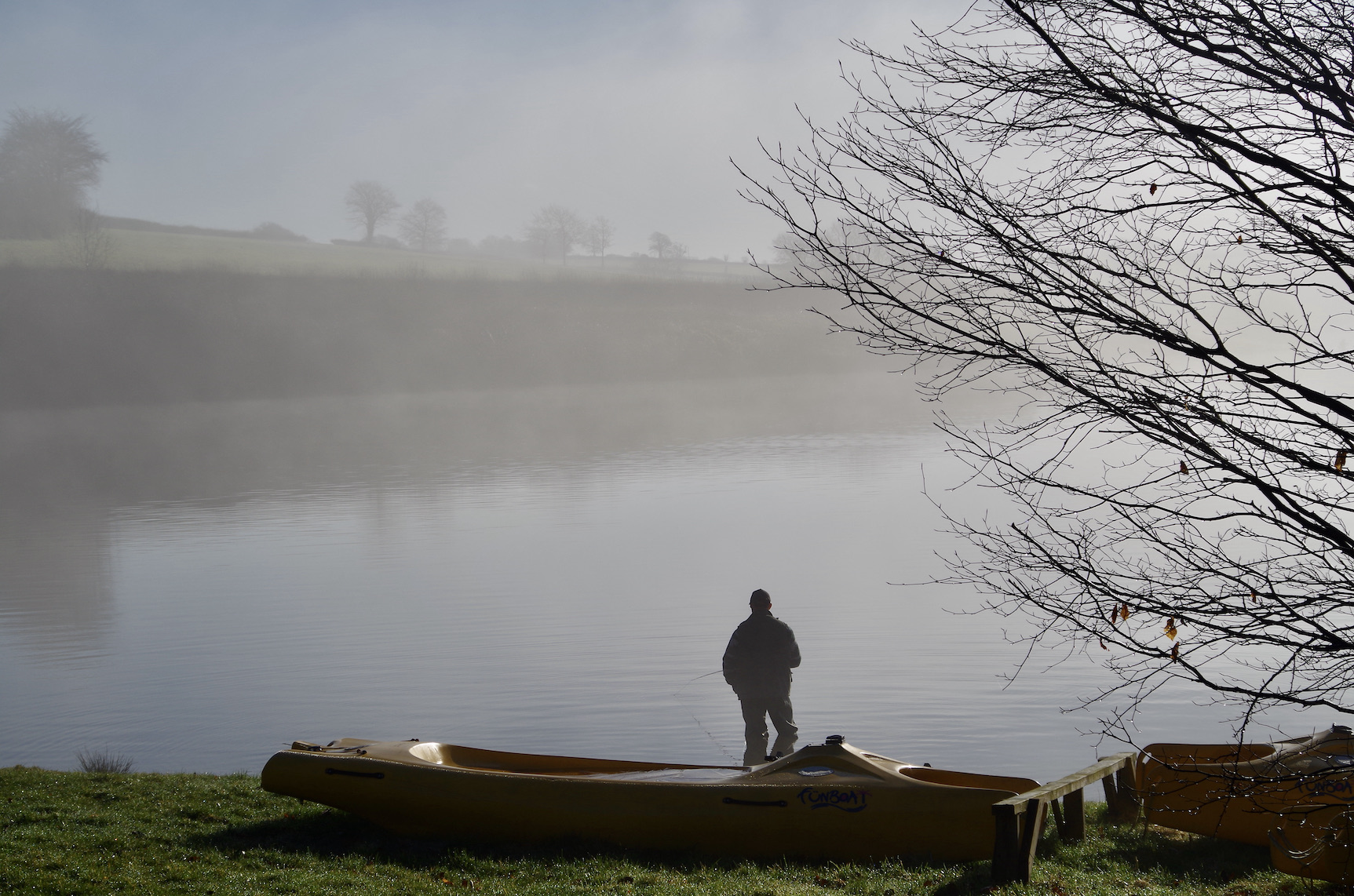
Several anglers were already at the water’s edge and had enjoyed early success. I was meeting with my good friend Jeff Pearce who had assisted with the launching of several boats offering advice based on the previous days opening.

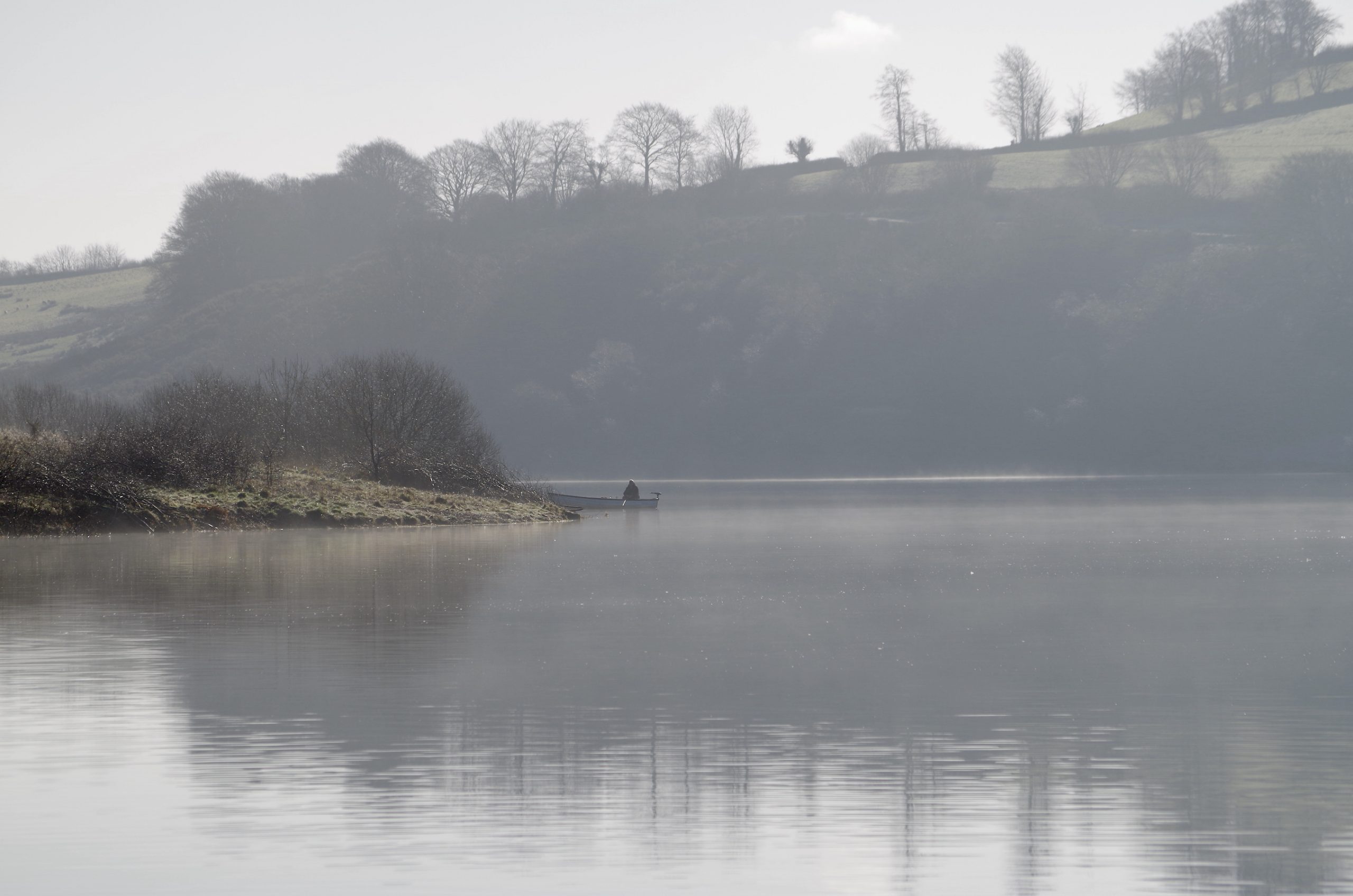
I had already set up my Snowbee Diamond 2 Fly Rod #7 4-Piece – 10′, in combination with a 7wt, Intermediate line with black lure on the point and small diawl bach on a dropper. This was my go to set up early season and I was to use this throughout the day. I had a few casts in the boat bay whilst Jeff continued to assist arriving anglers with the boats.
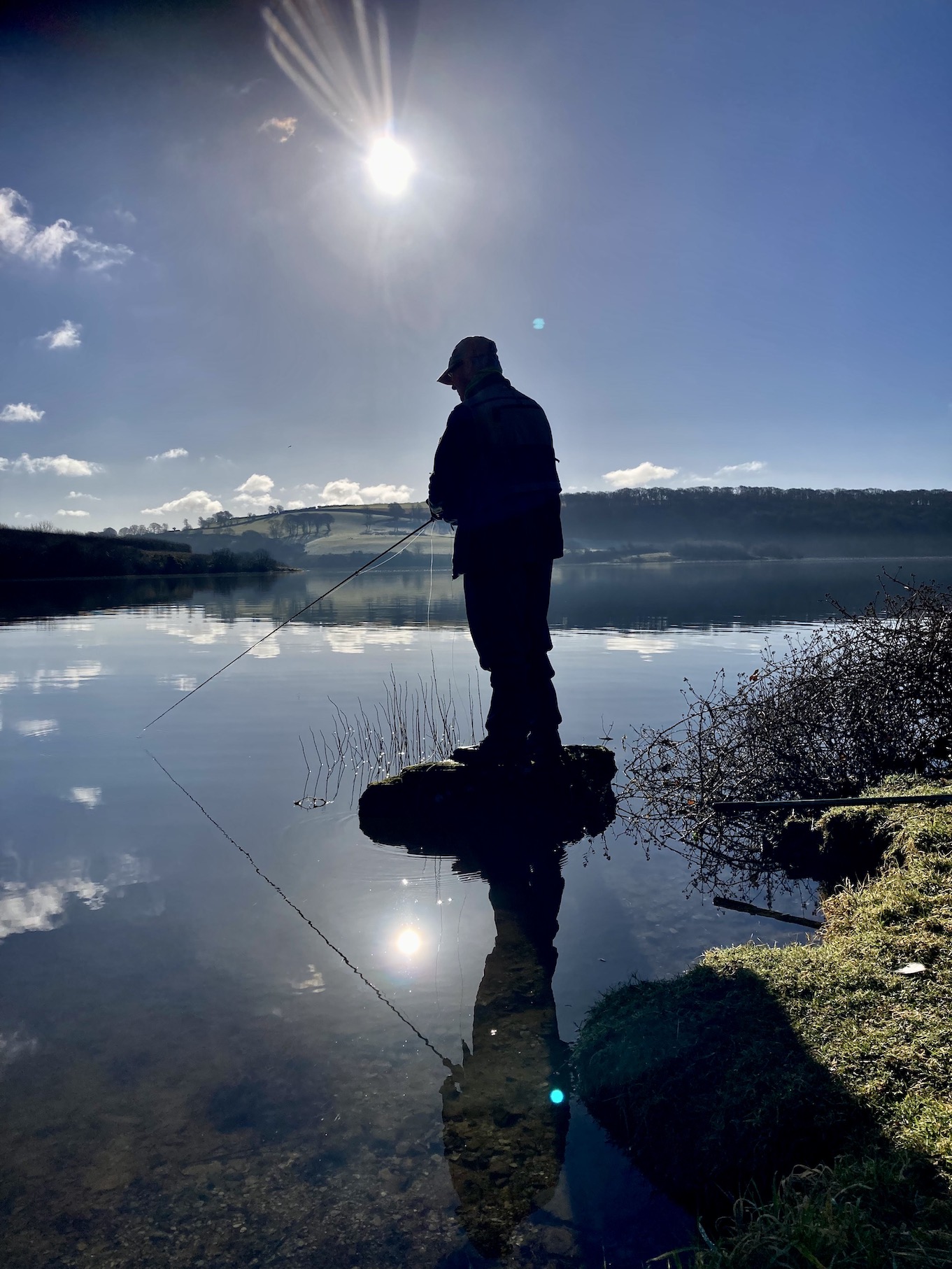
The mist was lifting quickly as late winter sunshine quickly warmed the air. The lake was mirror calm only the departing boats rippling the waters. I captured a few images of the scene and poured a coffee. It was good to be back at this jewel in the crown of West Country Fly Fishing.
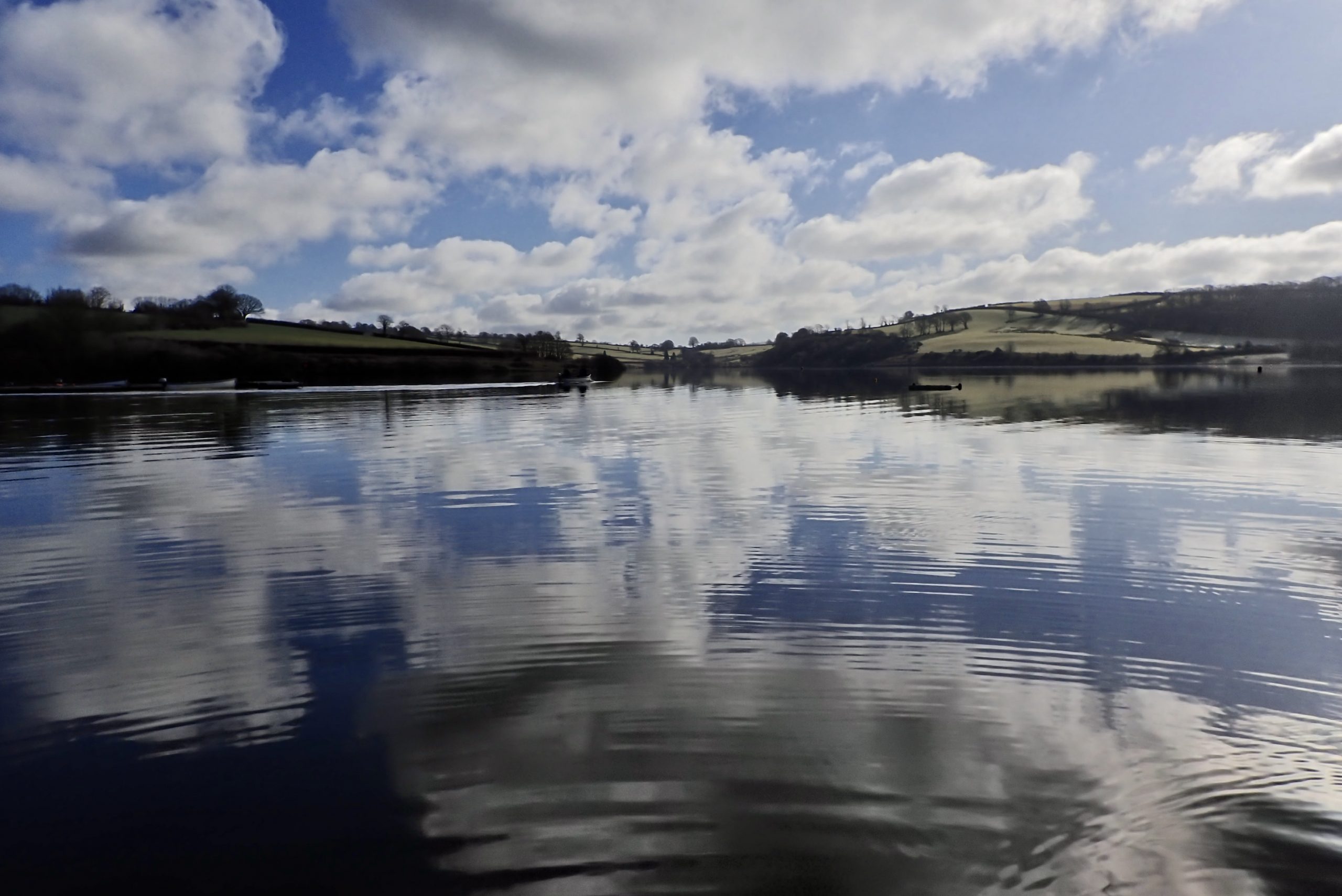
This was day two of a new season and anglers the previous day had enjoyed most success fishing from the bank. The most successful flies were undoubtedly black and green perpetuated by the fact that most anglers choose this pattern early season.
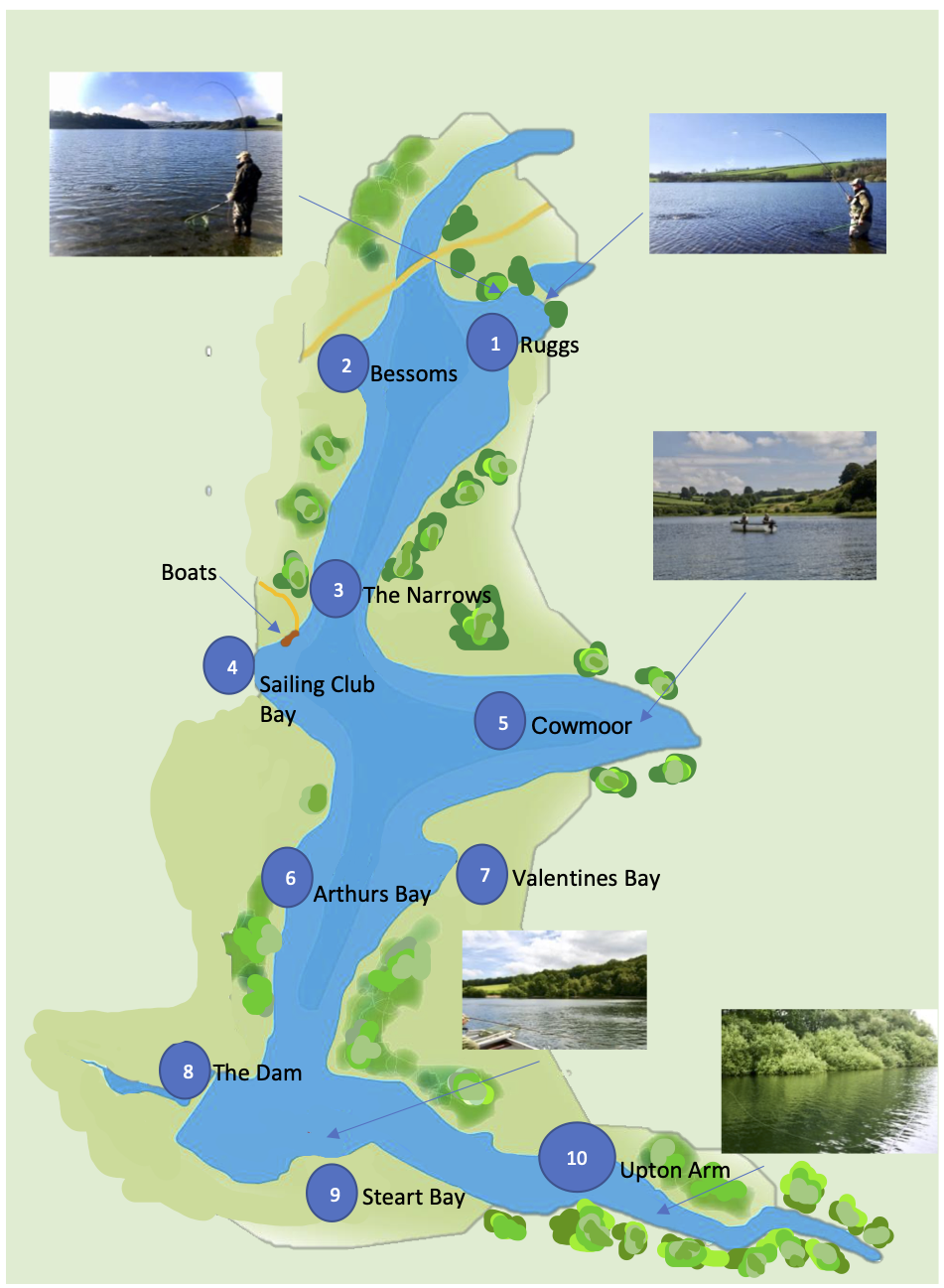
Jeff and I had a cunning plan to utilise our boat to move around beaching the boat at promising areas and fish from the bank. Our first point of call was Bessom’s an area that gives access to reasonably deep water. I was full of optimism and belief but the first hour passed without any connection to the lakes residents.
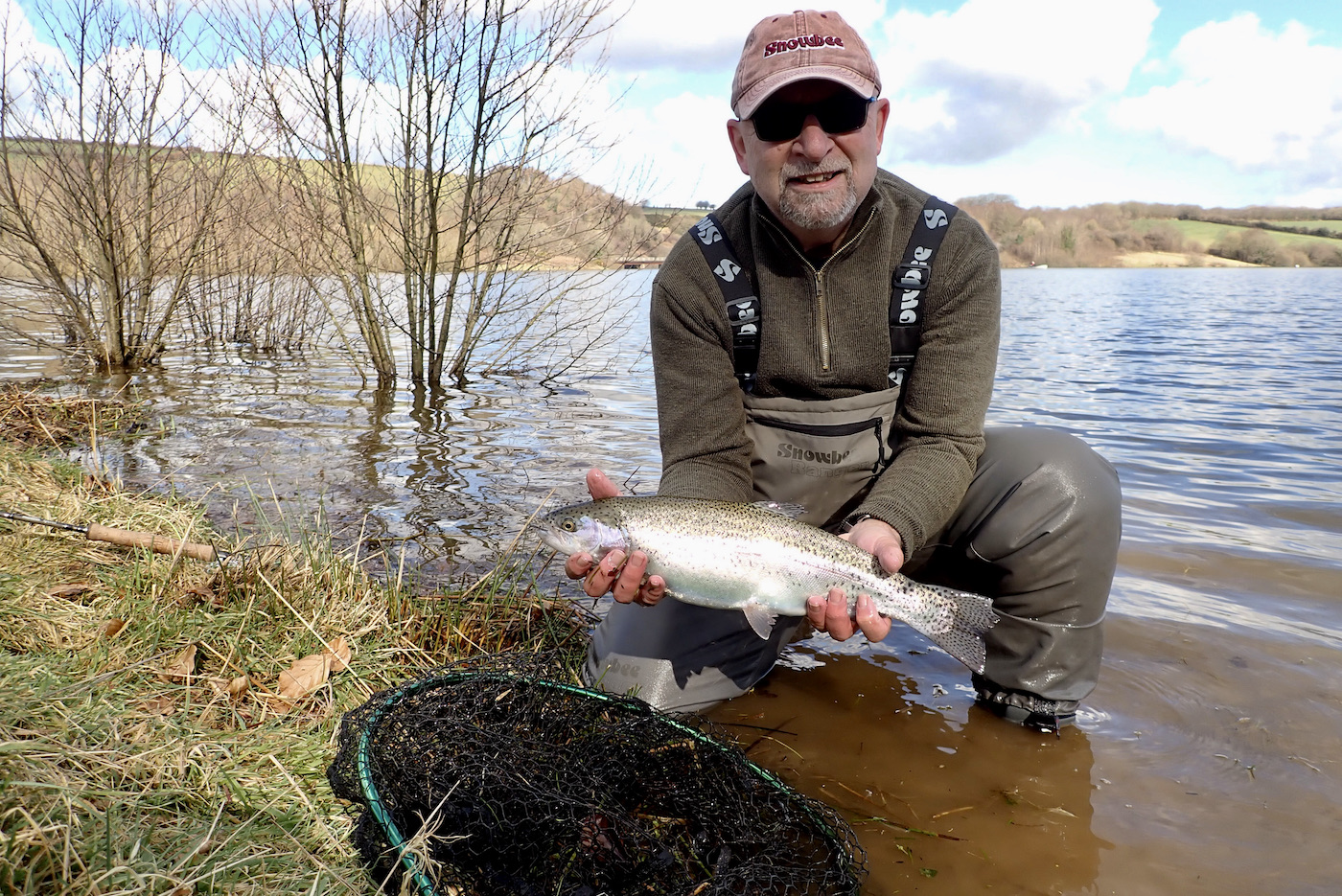
Jeff was first to connect tempting a typical hard fighting rainbow on a black booby fished deep and slow. Despite lack of success I persisted casting out and working my lure back slowly inch at a time with the occasional speedy twitch and pause.
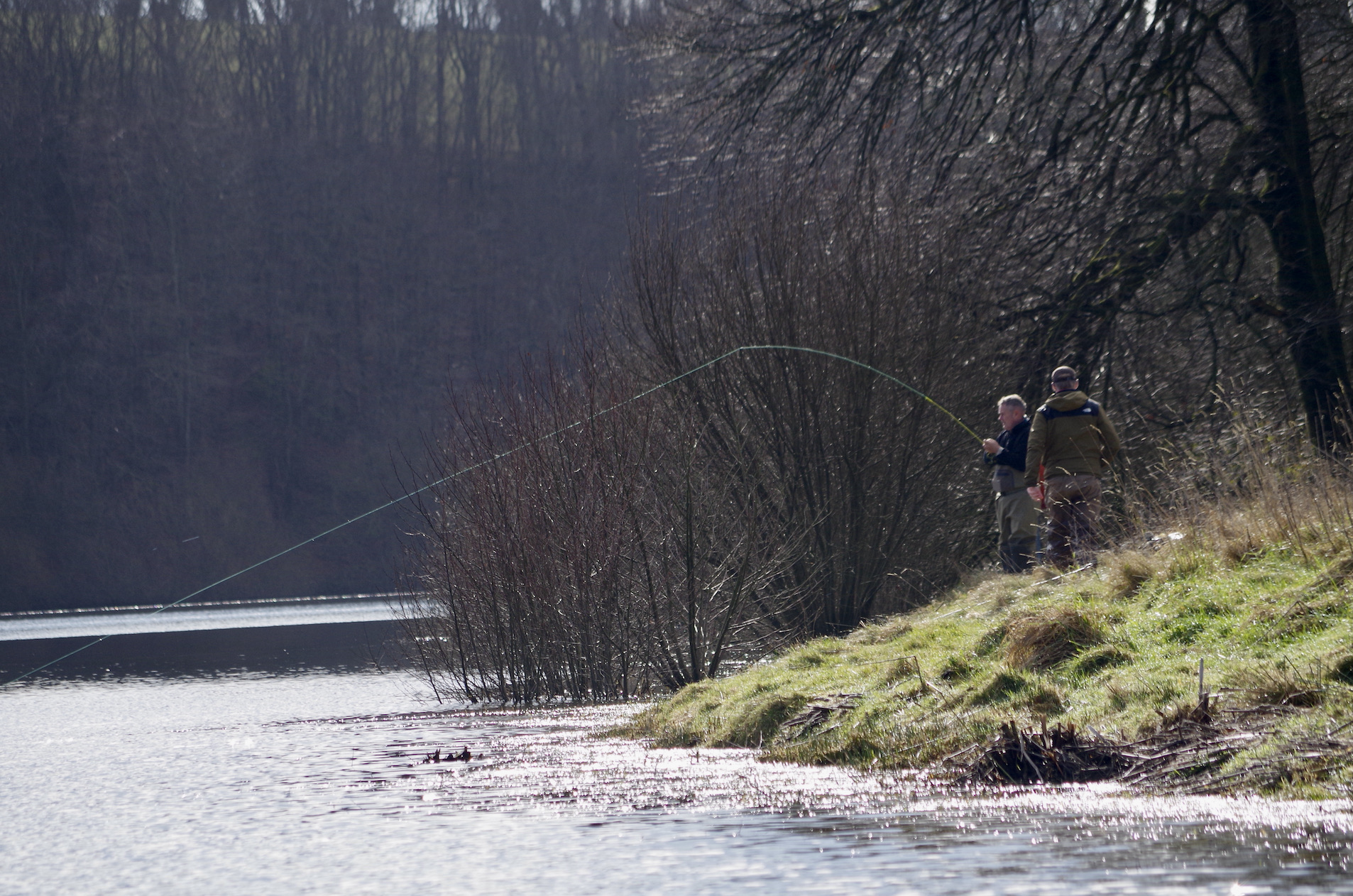
Persistence and belief generally pay off and suddenly the line zipped tight and I enjoyed the delectable throbbing of life transmitted through the line the rod absorbing the feisty rainbows attempts to shed the hook.
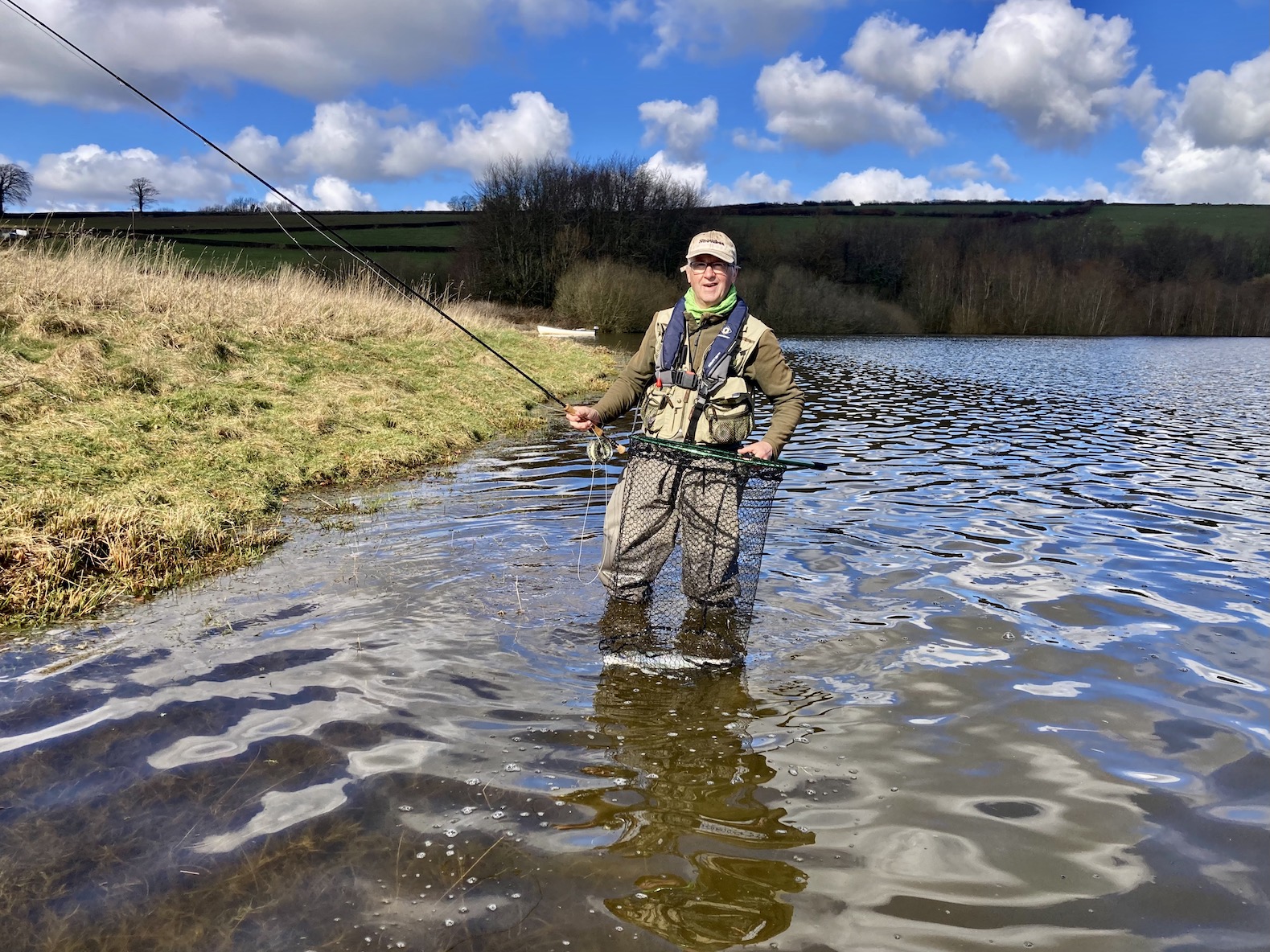
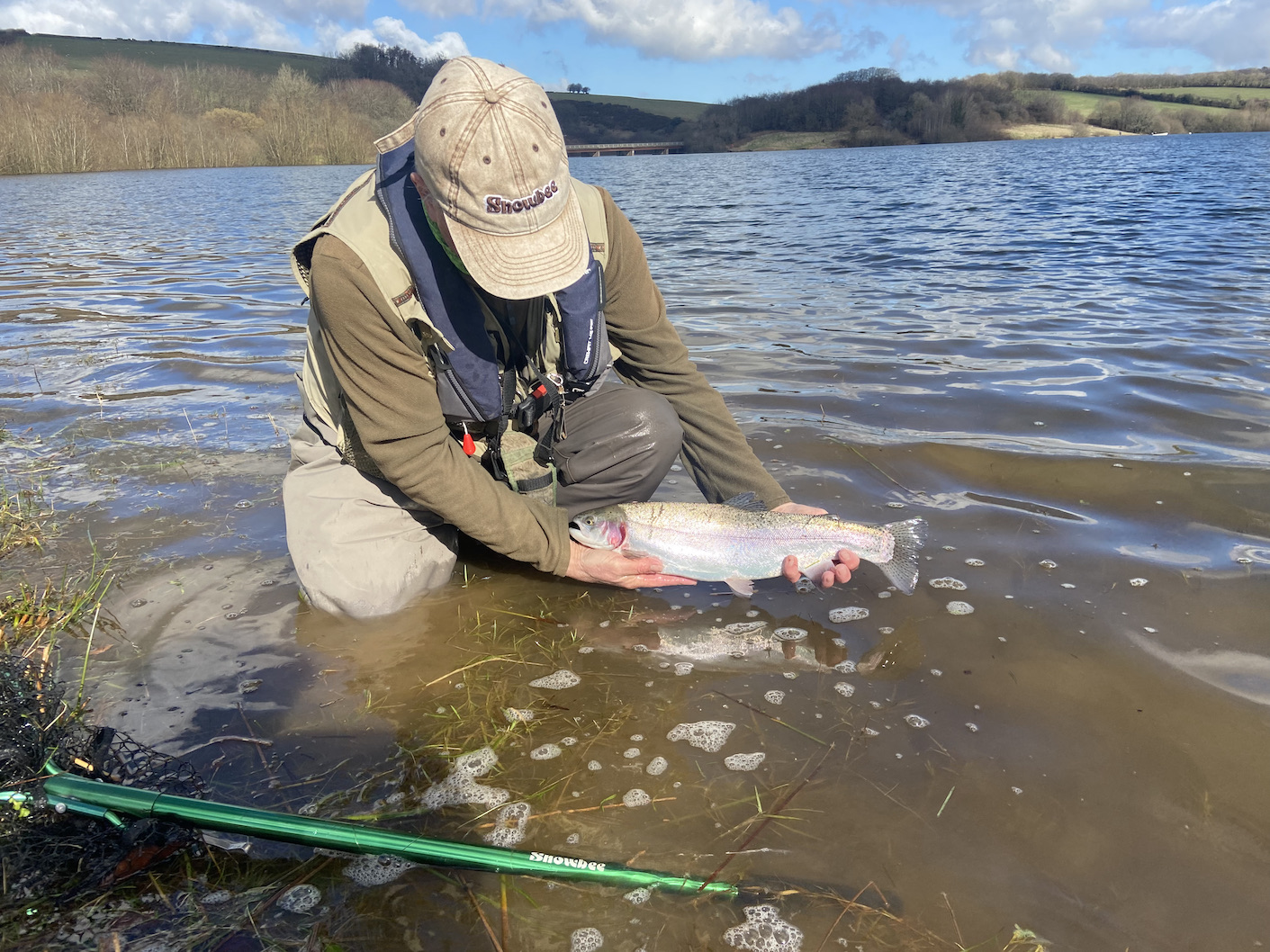
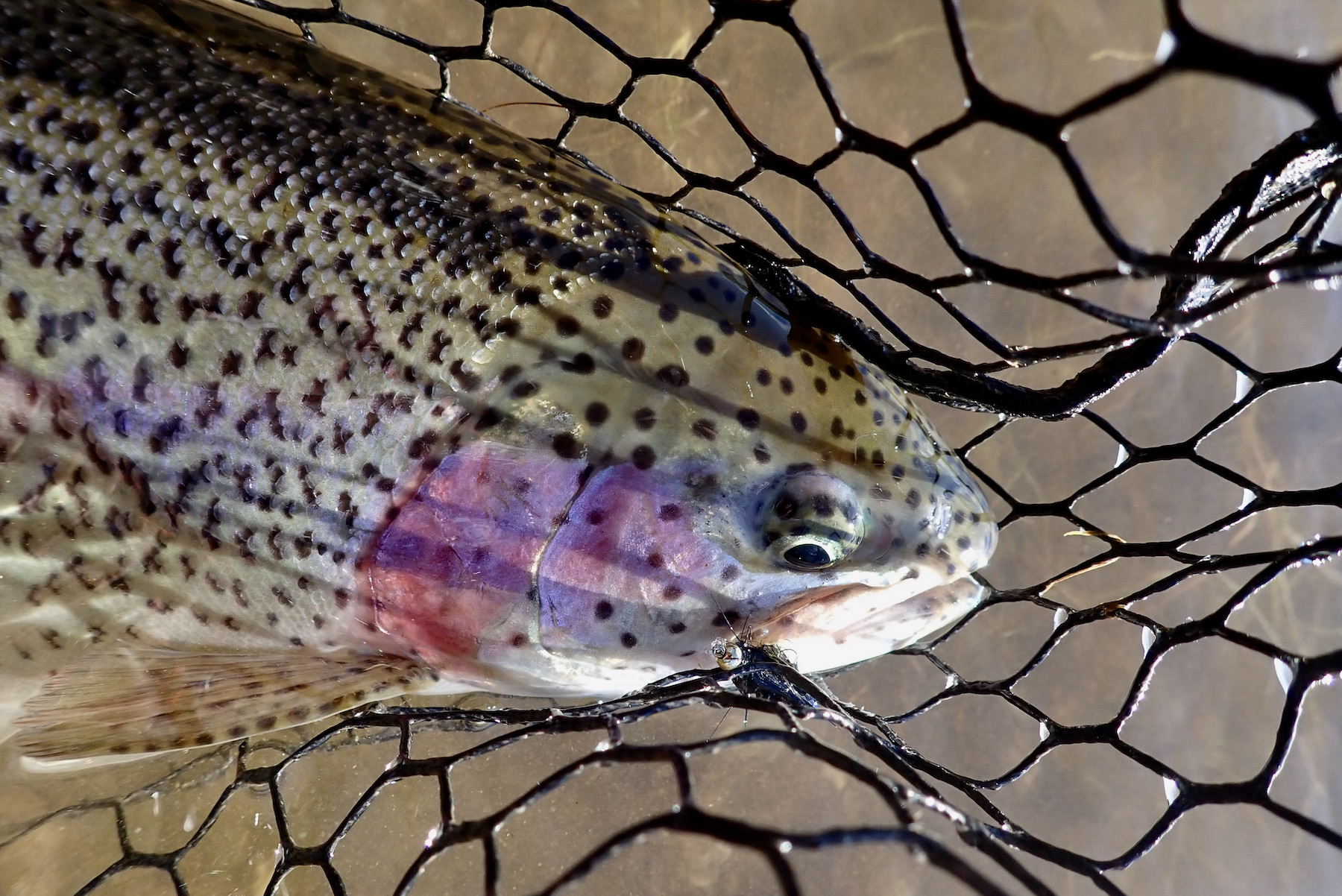
We spent another hour or so catching another six rainbows the best around 3lb 8oz. Whilst we could have stayed and caught steadily we decided upon a change of scenery moving to Cowmoor and an area of bank that has been cleared to allow easier access and plenty of room for the back cast.
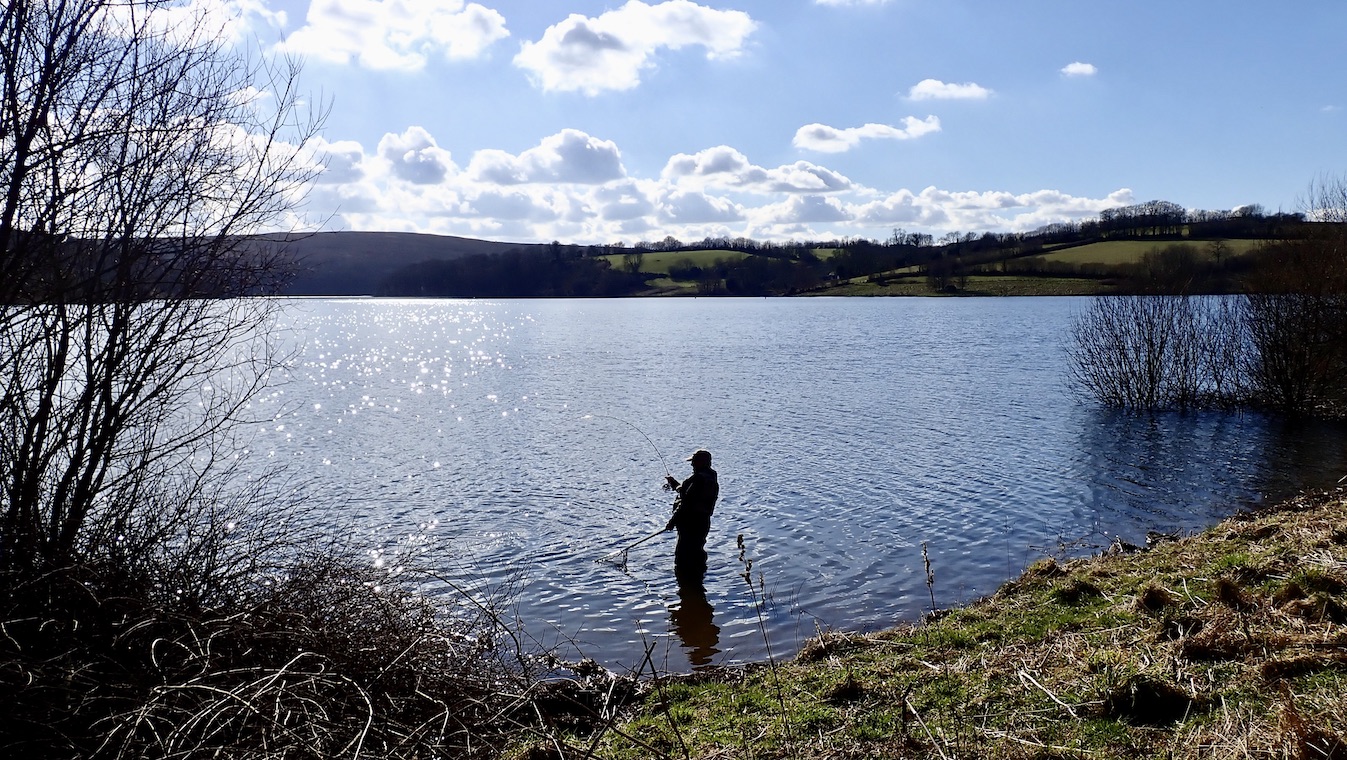
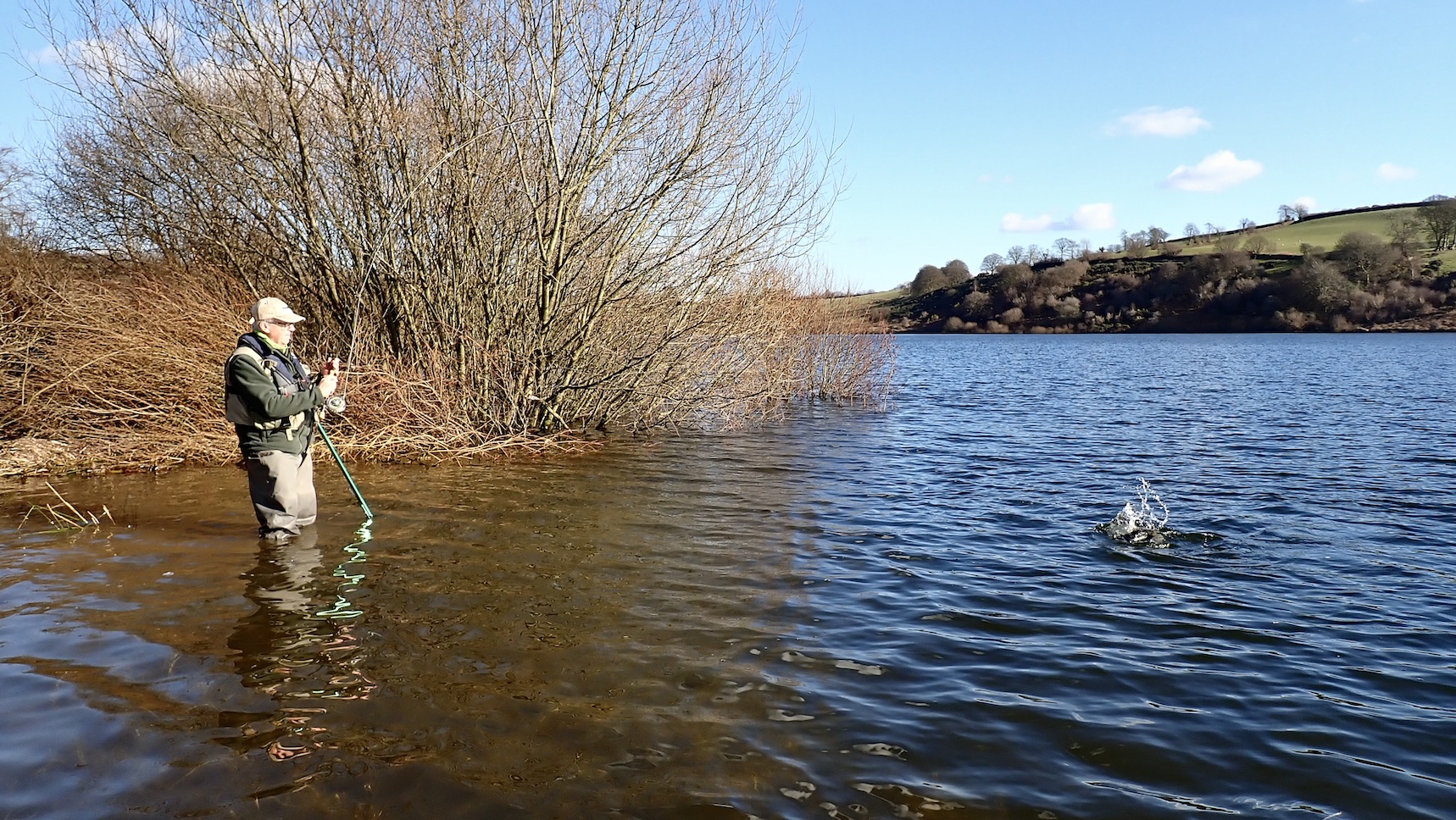
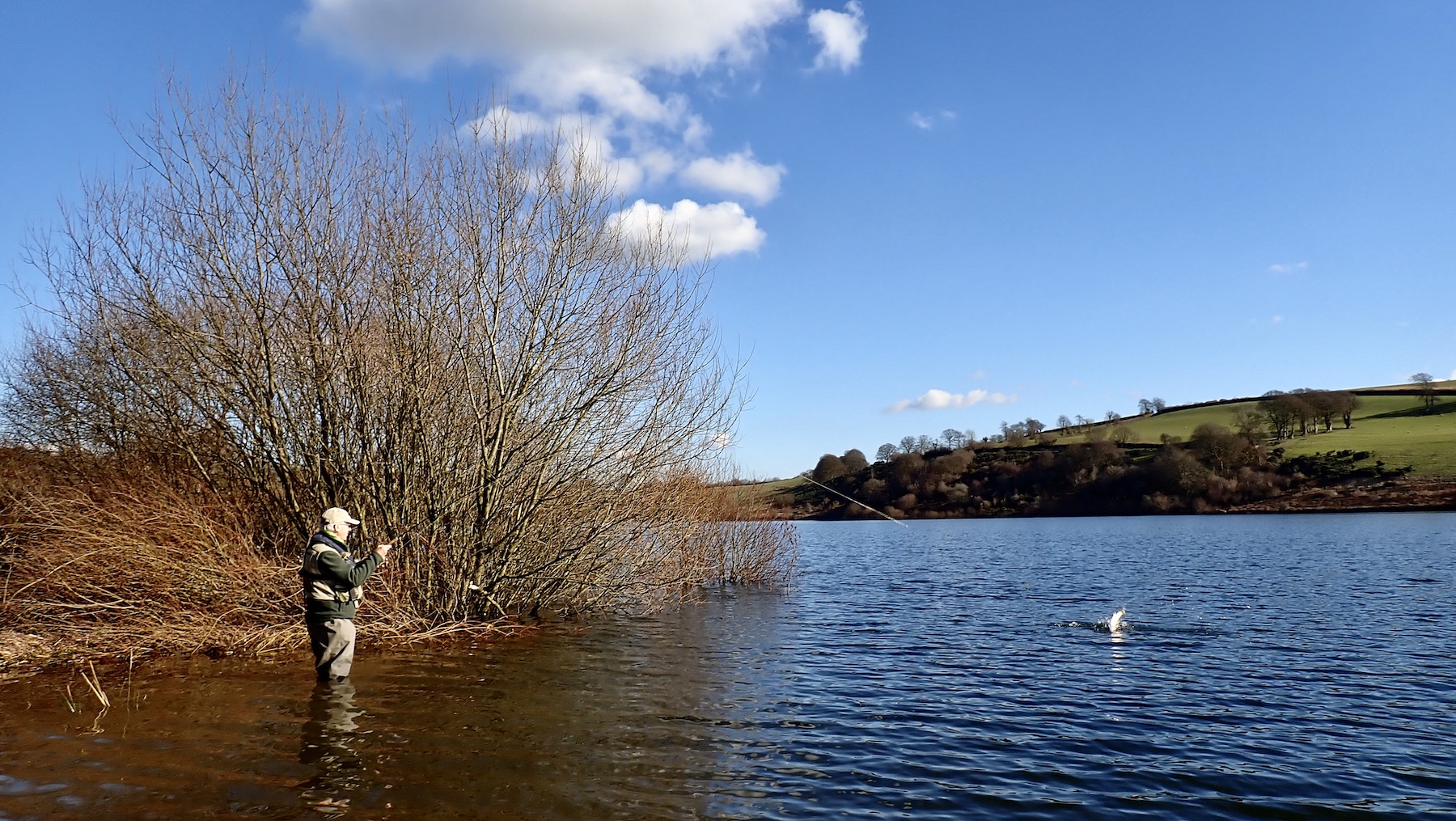
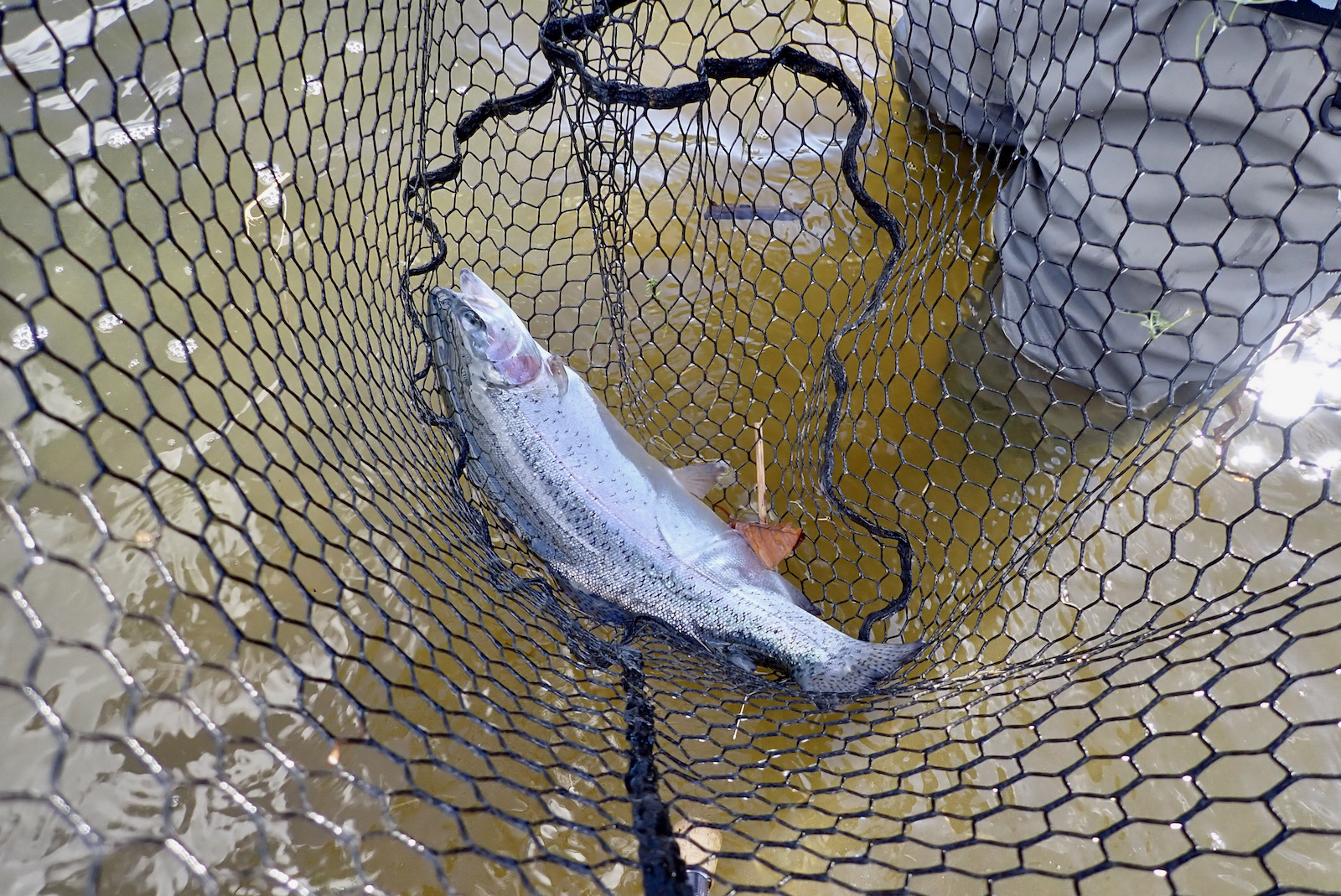
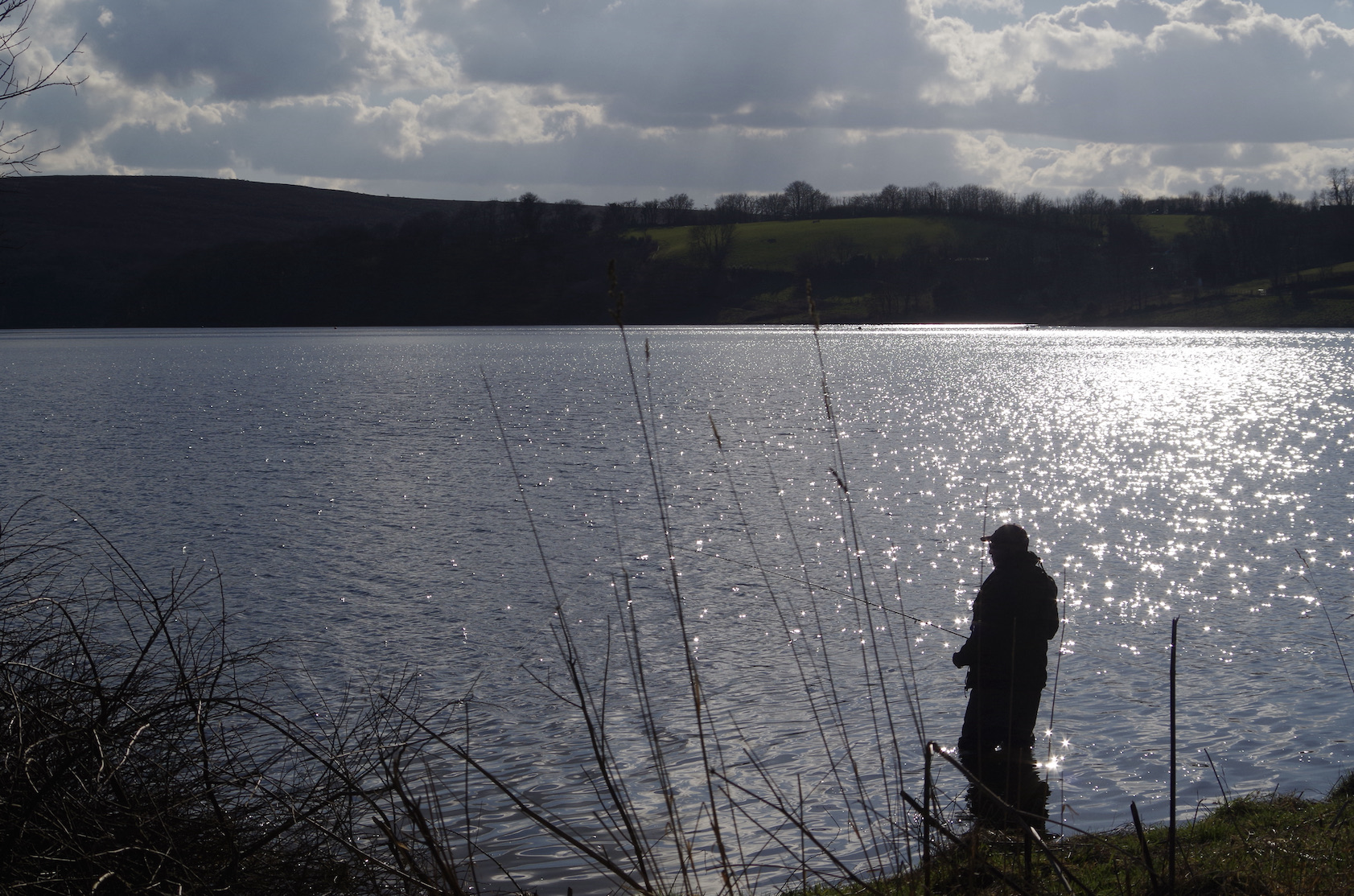
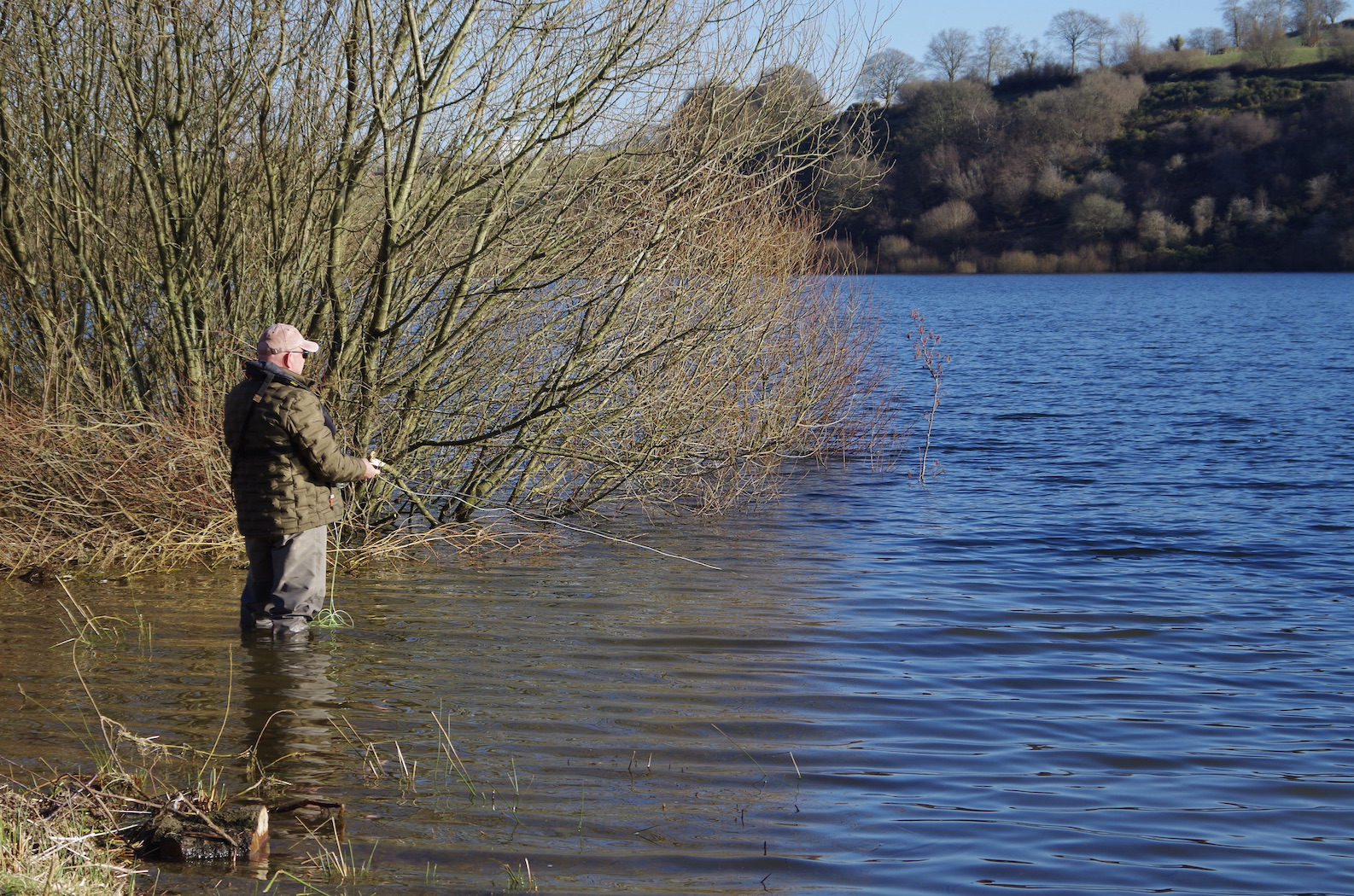
It didn’t take long before the rods were bending and reels singing as rainbows hit our lures treating us to acrobatic antics as the fish leapt cartwheeling on our lines end. Jeff had by now changed over to a similar set up to me and tempted fish on a regular basis. We ended the day on fourteen trout averaging 2lb 8oz the best probably 3lb 8oz. Jeff lost what felt like a big fish of which many have been stocked the best topping 10lb.
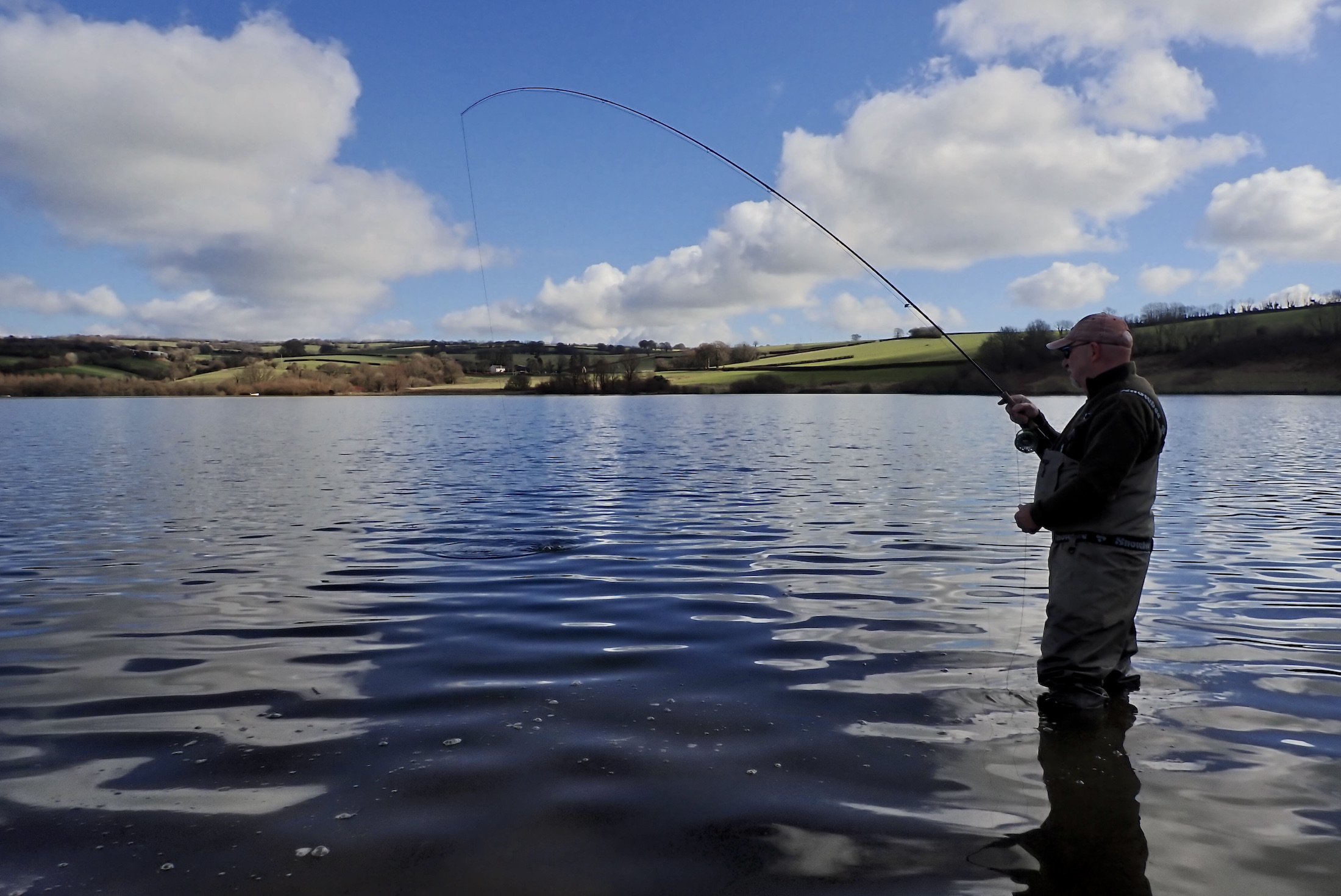
The day will be remembered for the warmth of the sun the beautiful scenery, good company and of course those hard fighting full tailed Wimbleball rainbows. In many ways it was another perfect day that ended all too soon.
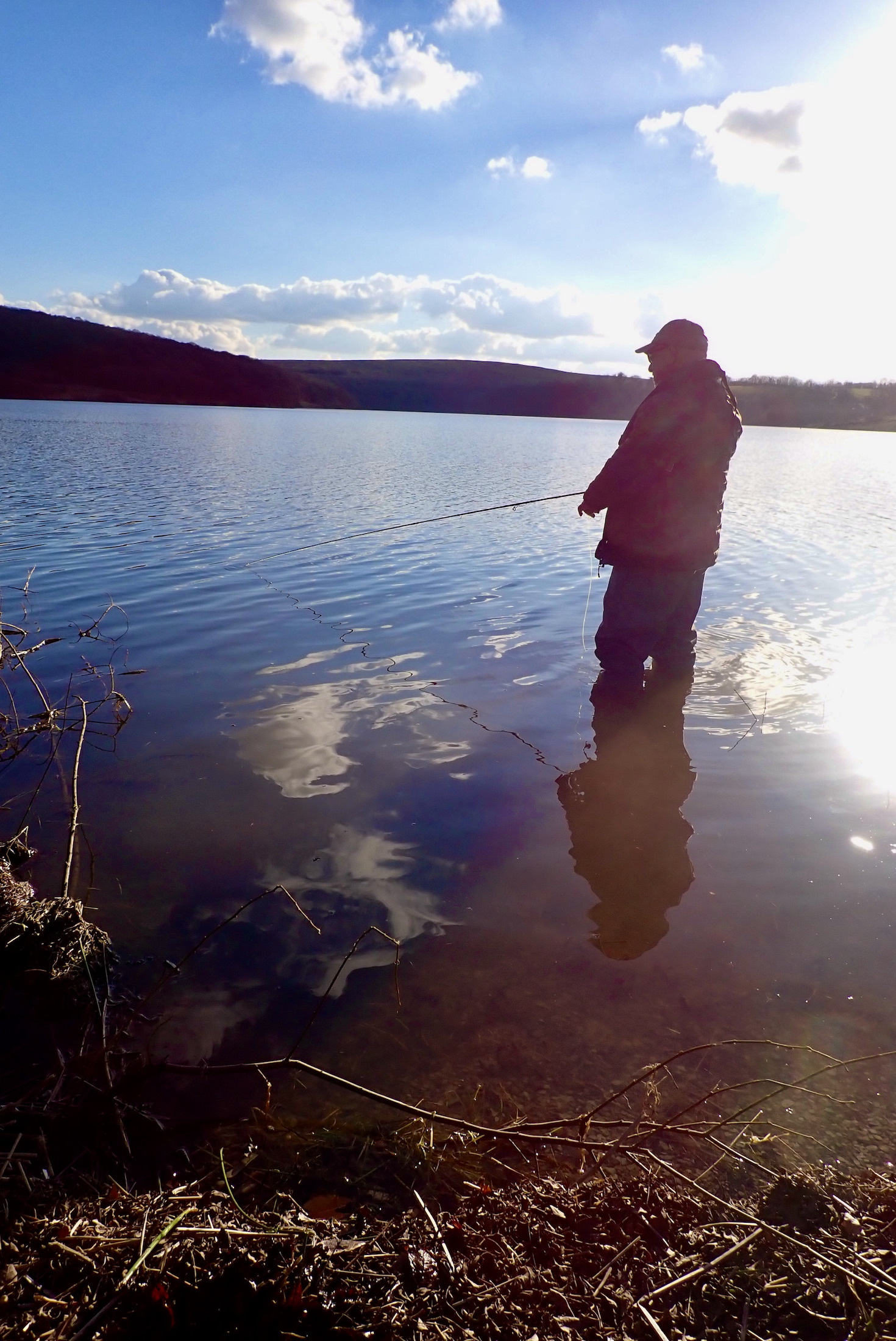
Opening Day Report from Wimbleball Fishery.
Seven boats and twenty-nine bank anglers attended opening day on Thursday. Some great catches were had, pictured was Simon Peters, from the bank at Cow Moor the fish were cruising the bank, you’d get 1 or 2 quick succession then it would go quiet for a while, ended up with 15 fish between two anglers, including pictured one around 5lb.
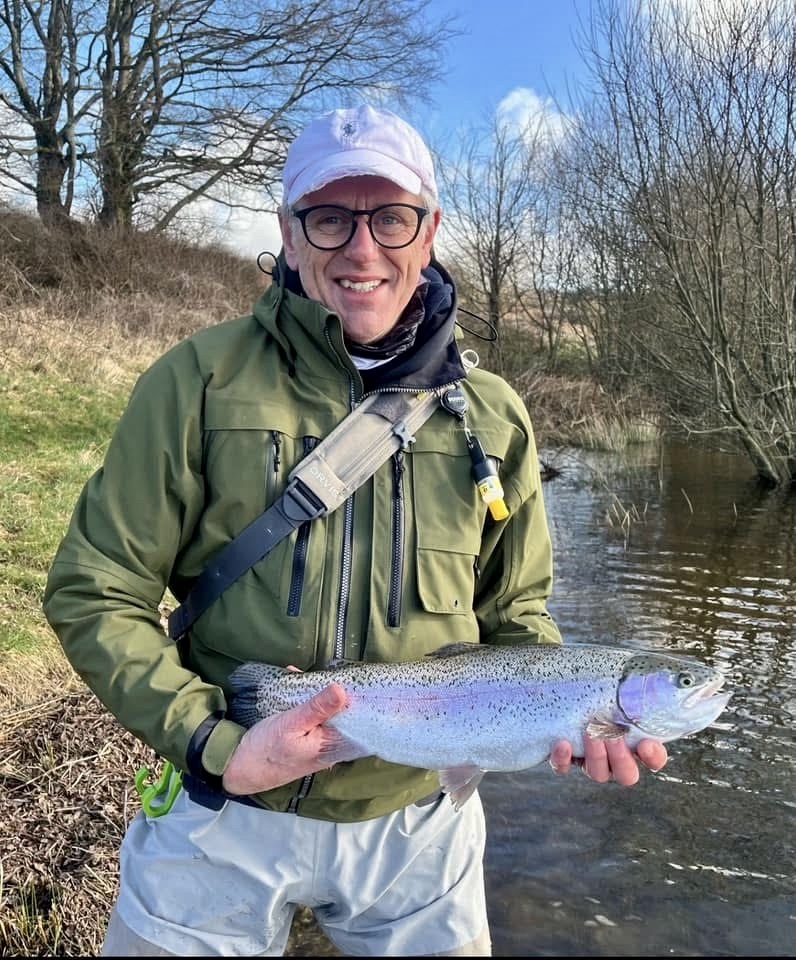
Peter Duckett had 3 right off from by the flagpole.
Anthony Cartwright had a great day on Friday fishing the bank from Ruggs, catching 16 fish on a mixture of floating lines with lures to shooting heads and boobies. Picture of decent fish in margin by rod, not far off 10lb.
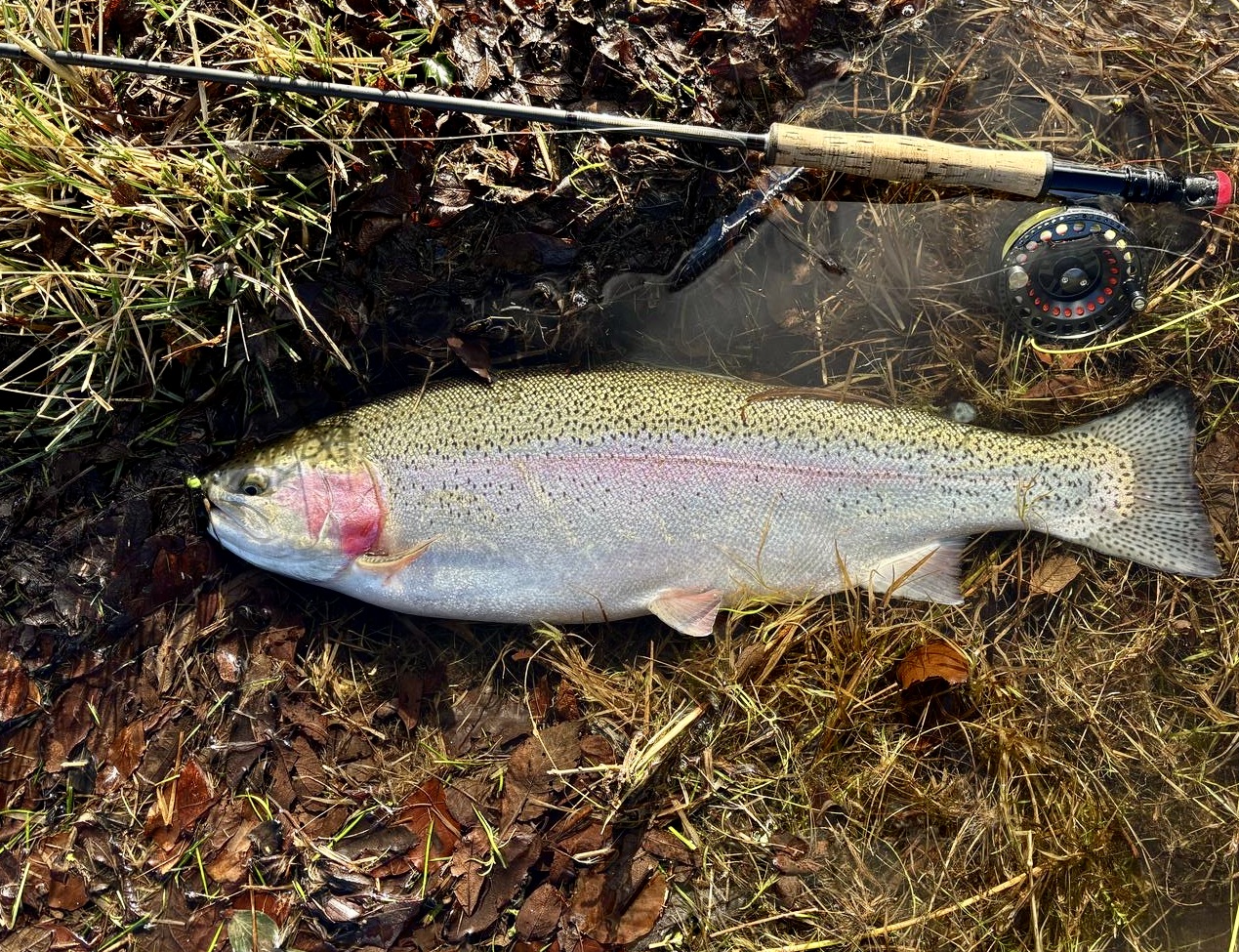
Kieron Jenkins with the best of a 21 fish total from the boat saturday, with most fish coming from Bessoms with some lovely overwintered fish from around the Pontoon.
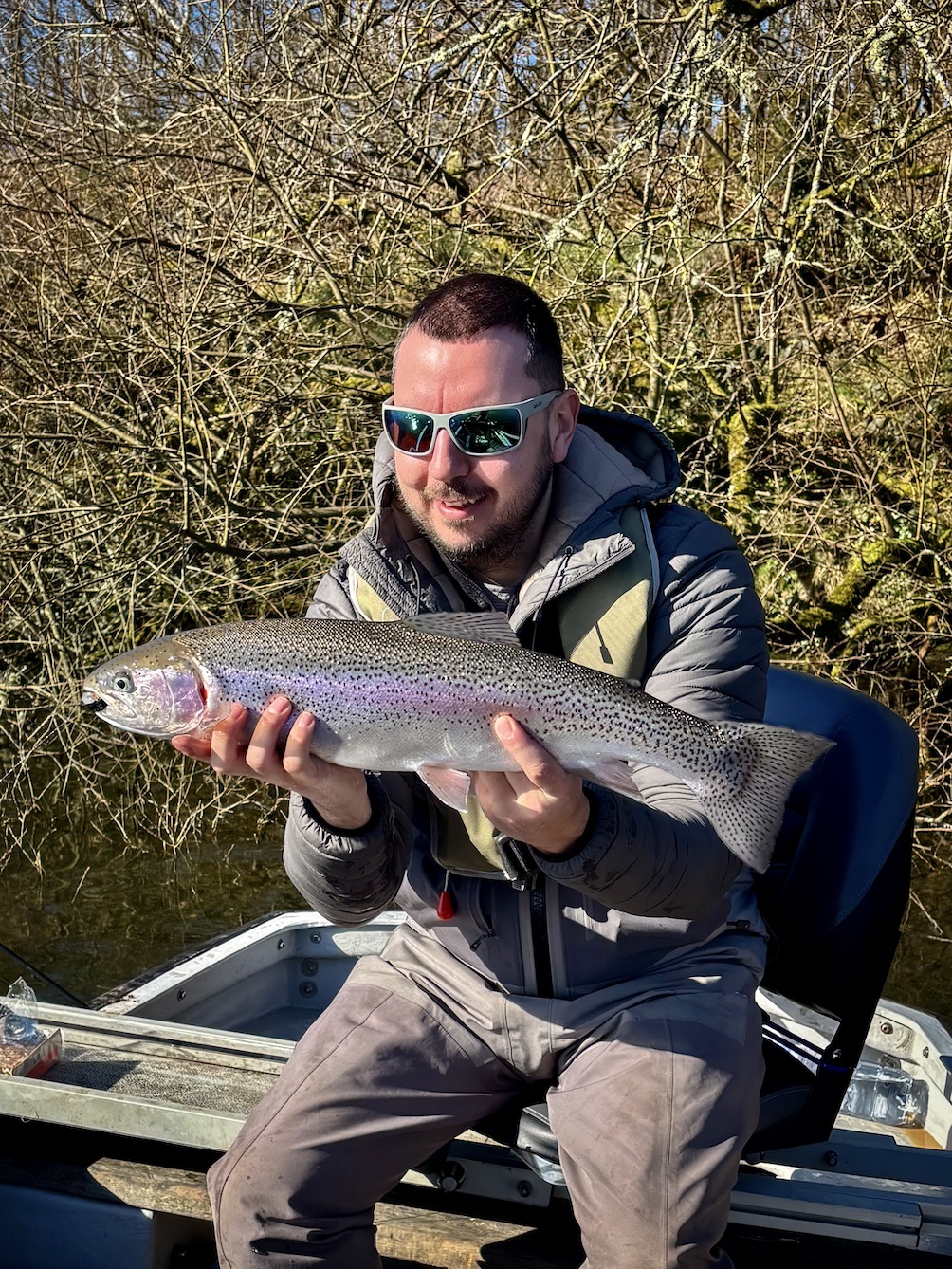
Best method was fishing di7 and two boobies (pink and black) slowly at depth. Plenty of positive vibes from anglers, bank seemed to outfish the boats weather was so different from previous seasons and the cold temperatures with bright sunshine put the fish down a bit but some still caught on floating lines and diawl bachs! Get those online returns in, as at the end of the month Wimbleball admin will pick a random catch return for a free take 2 fish then catch and release ticket.
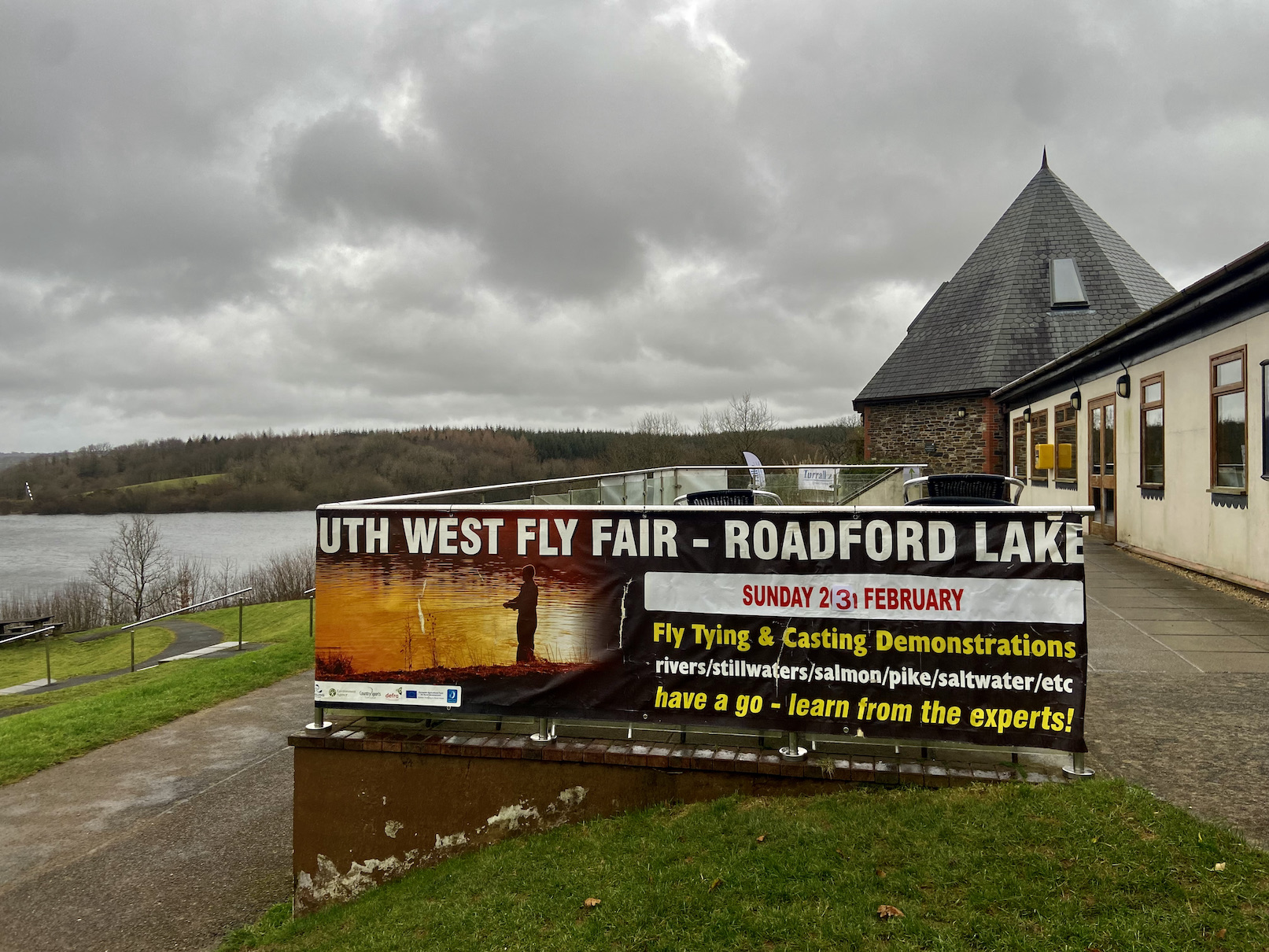
The South West Fly Fair hosted by South West Lakes Trust and held at Roadford Lake has become a popular fixture in the West Country angling calendar and is seen by many as the curtain raiser to the season ahead. I have been attending the event for many years and always enjoy the opportunity to catch up with familiar faces and forge further connections within the fly fishing community. The main sponsors for this year’s event were once again Turrall, Chevron Hackles and Snowbee.
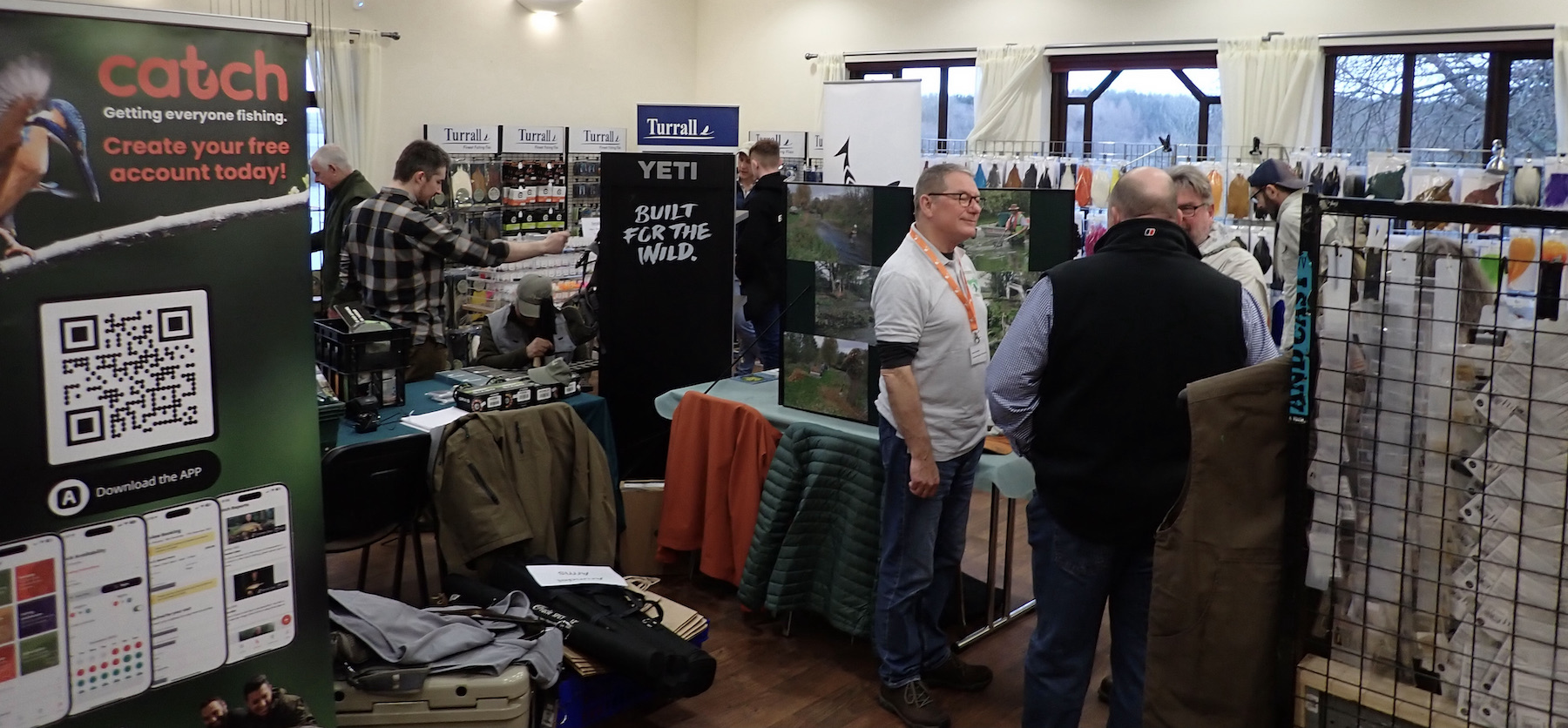
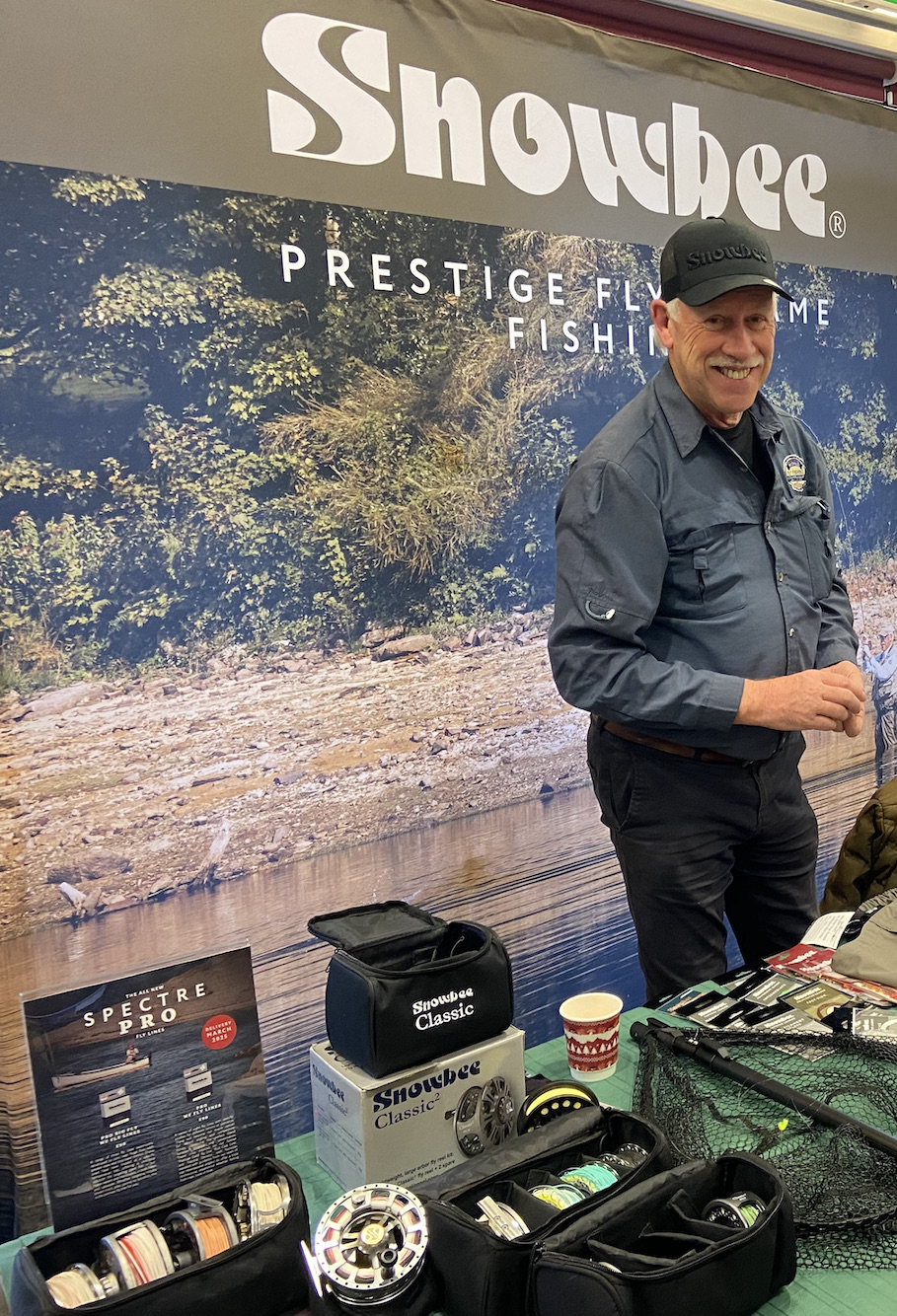
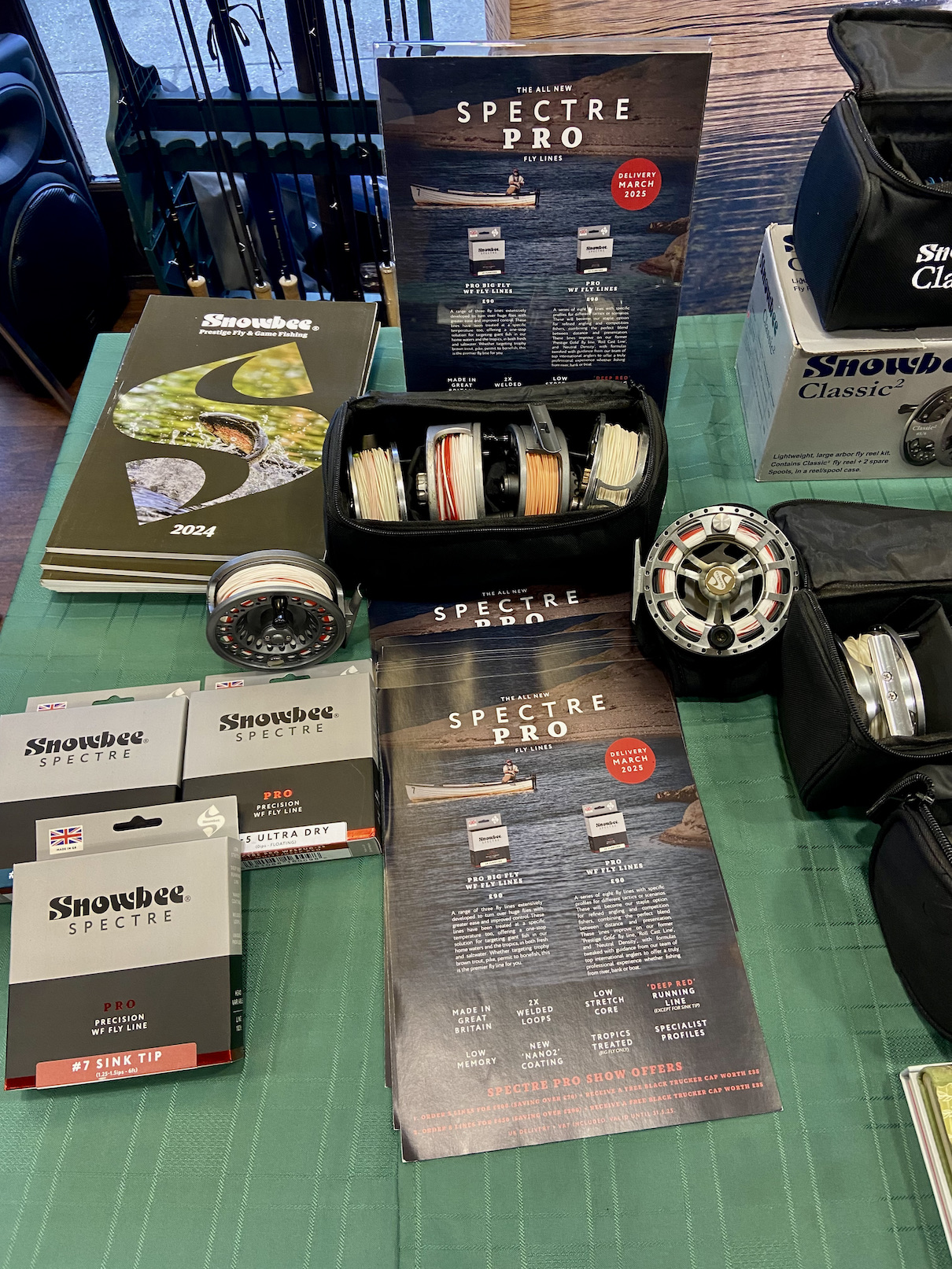

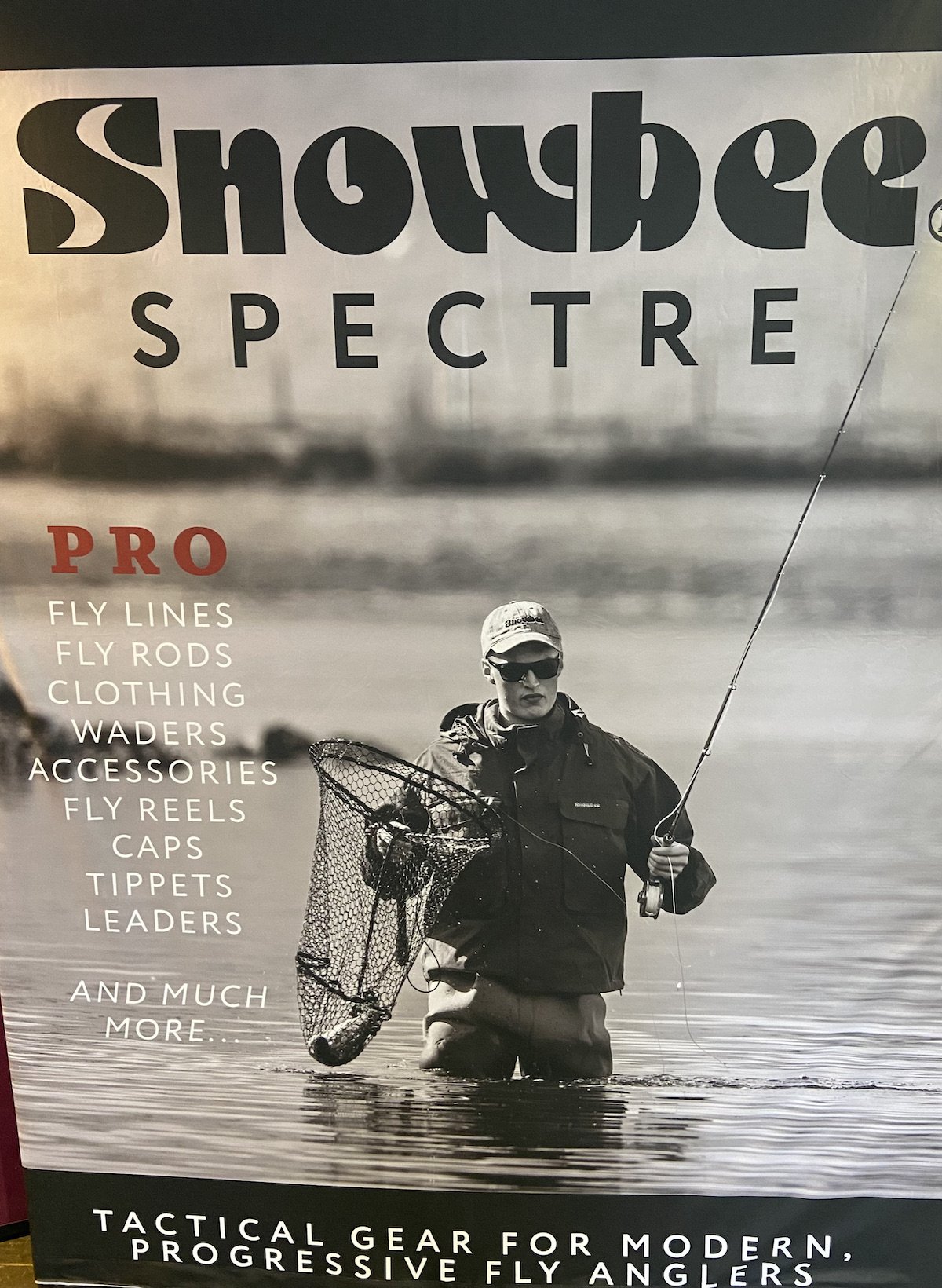
Gale force winds and heavy rain failed to dampen enthusiasm as keen fly fishers gathered around the many stalls within the spacious conference rooms. There was an impressive array of tackle, clothing and fly tying equipment on display along with representation from local angling clubs, associations and the hospitality sector. As always river conservation was high on the agenda with a real passion for the preservation of our rivers and wildlife within.
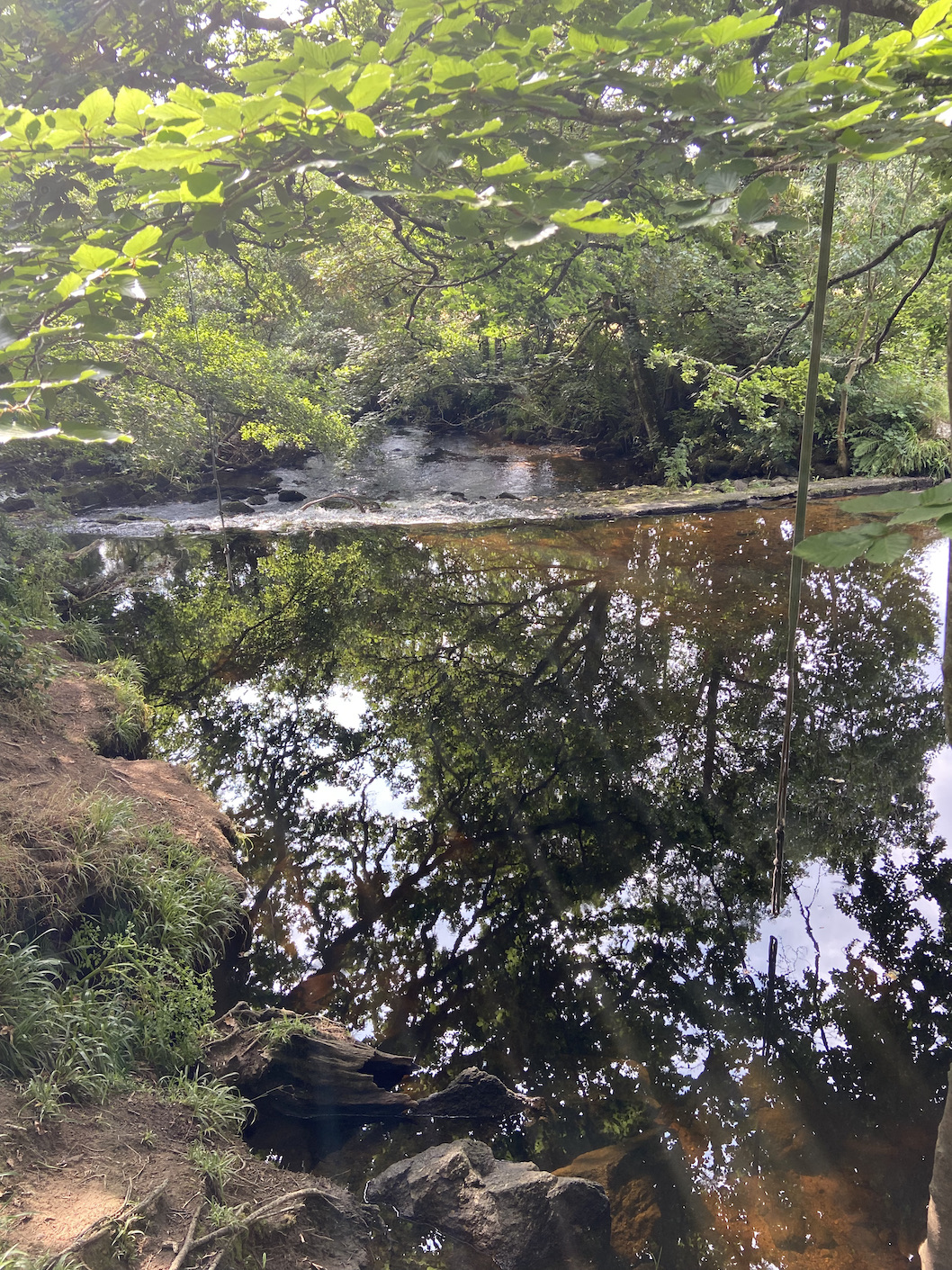
The River Teign Restoration Project that brings a story of salmon decline and the efforts to restore the river to its former glory was of particular interest to myself and I look forward to reading all about it in ‘The Teign Book’ written by local angler Neil Yeandle. The book now sits on my desk ready to read over the coming weeks. Glancing through its pages I can already see that it is an evocative story of catastrophic decline and sterling work to restore habitat that brings hope for the future.
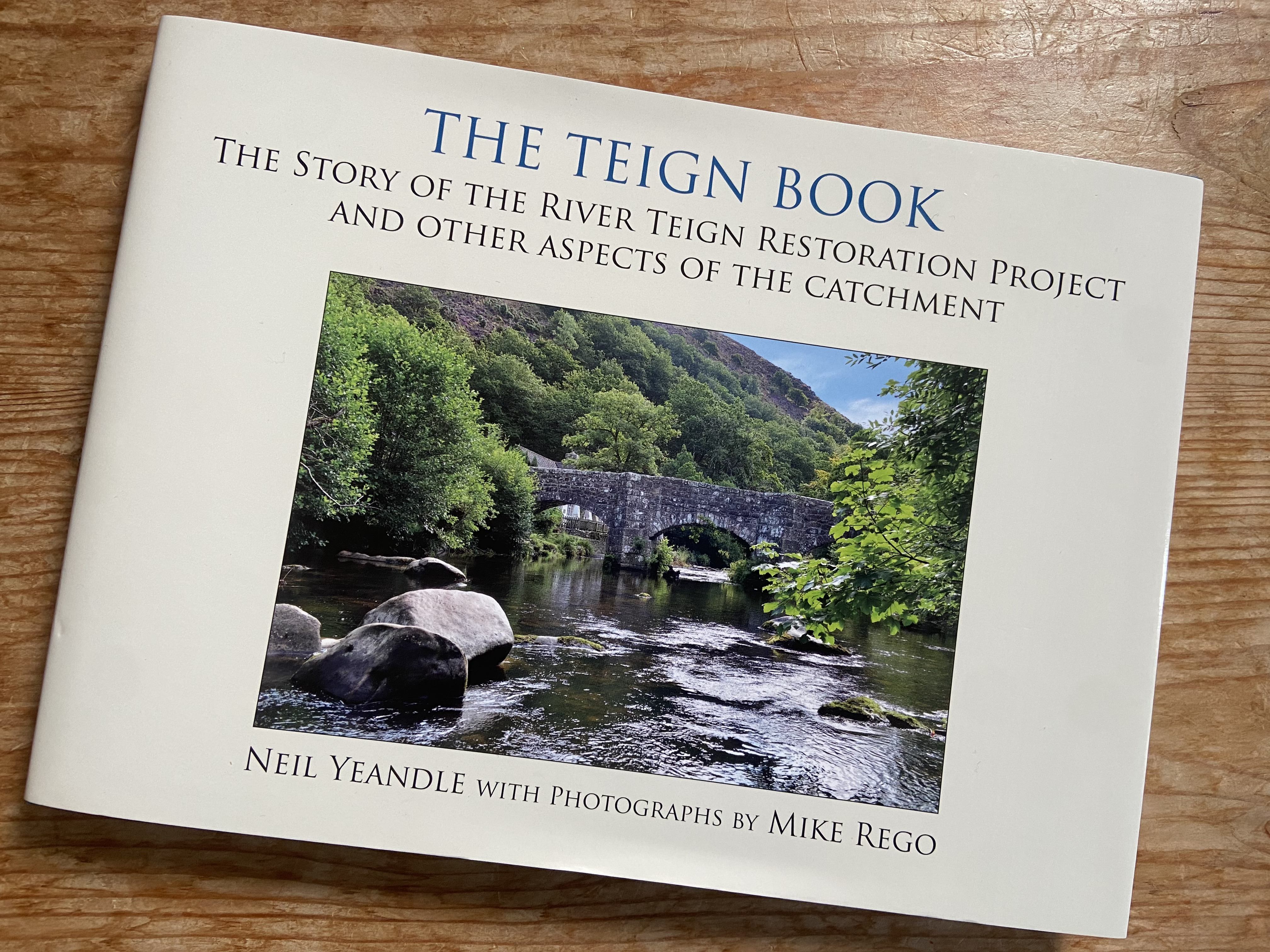
Former head of angling at South West lakes Trust Ashley Bunning was present with South West Waters Invasive species team highlighting the threats posed to our environment and native species. https://www.southwestwater.co.uk/about-us/latest-news/tackling-invasive-non-native-species-to-help-protect-our-wetlands
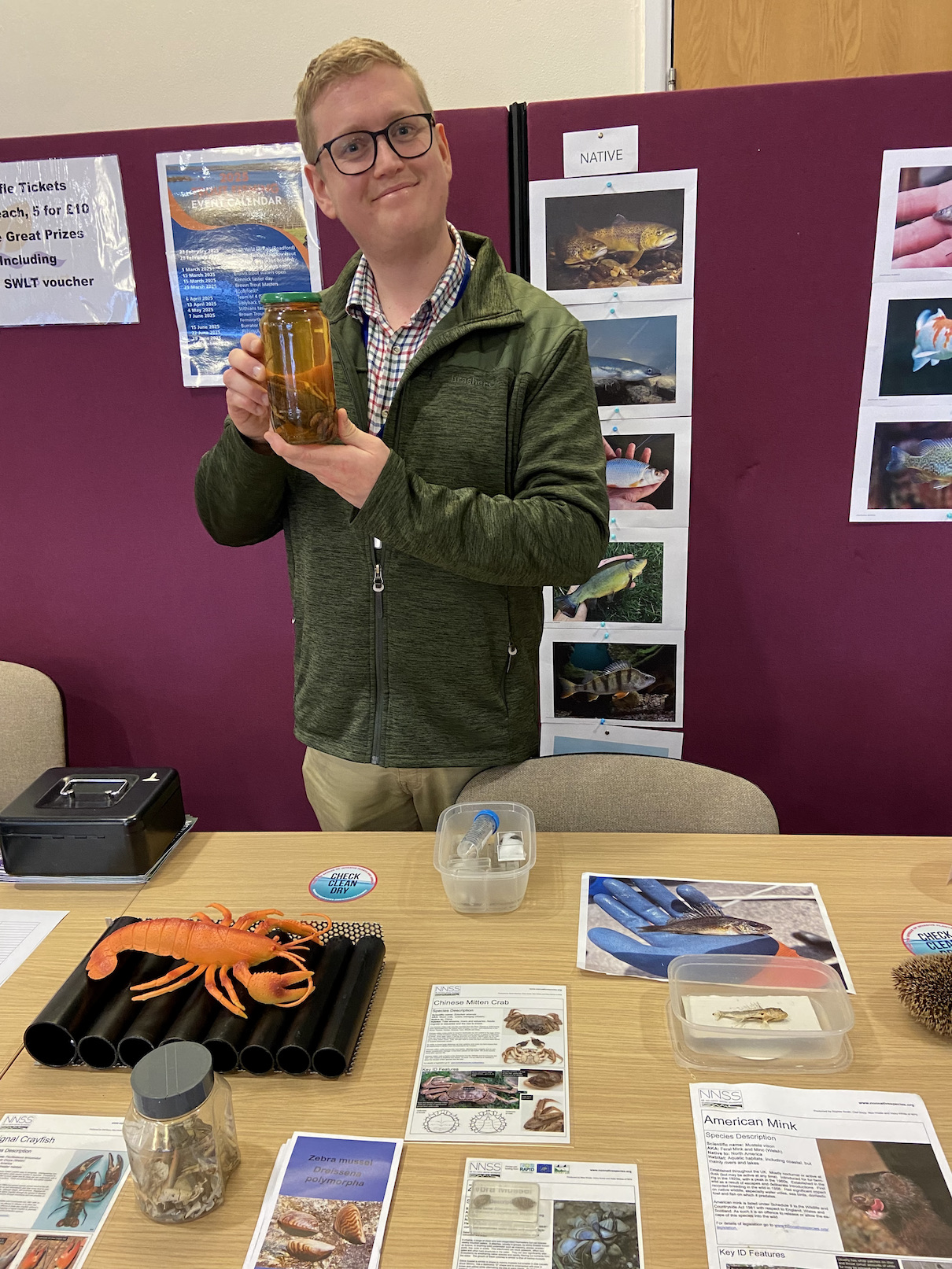
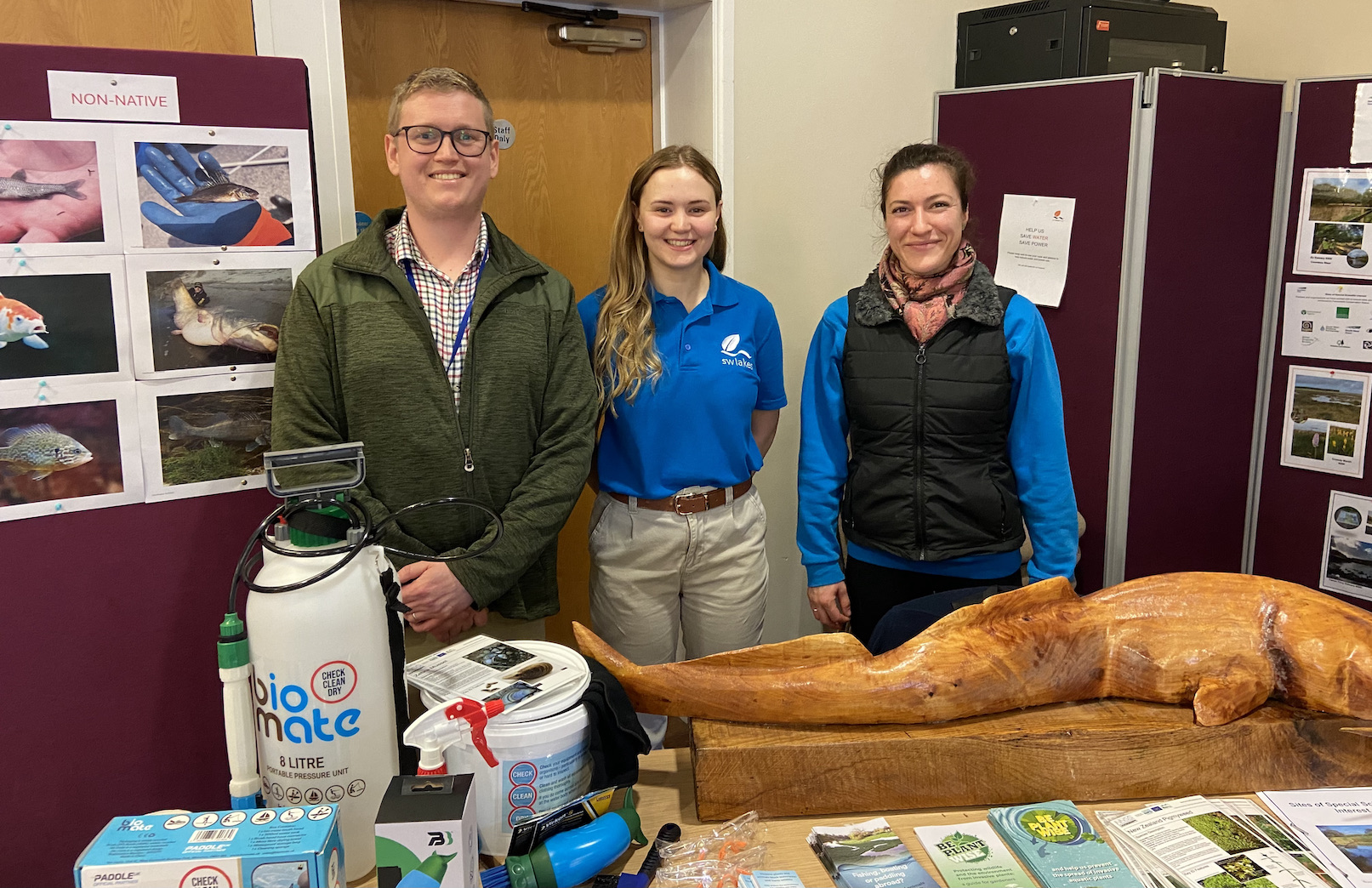
Talking with various organisations it would seem that 2025 is set to be a busy year for the regions anglers with plenty of events planned.
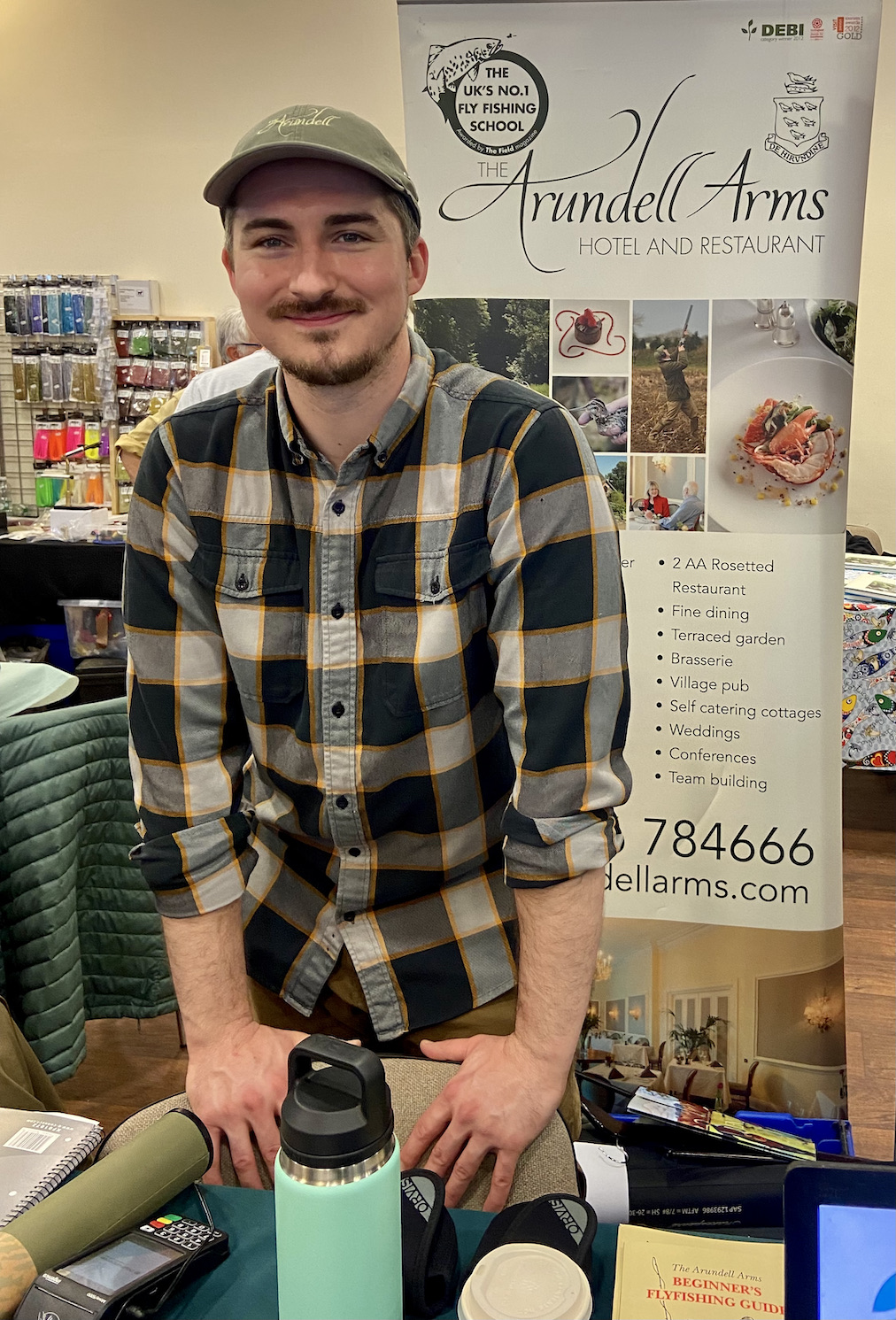
The Arundell Arms is set to host several events over the coming months starting on March 5th with a grayling day and showing of Jack Perks acclaimed film ‘Britain’s Hidden Fishes’. This Country Hotel steeped in angling history since 1932 has a sound future with the vastly experienced David Pilkington working with new fishing guide James Christoforou.

Leon Fisher is the new head of fishing at South West Lakes Trust and welcomed well respected angler and long-time supporter of the show Charles Jardine to open proceedings. Shortly after Charles took to the wet and windy outdoors to demonstrate the art of fly casting. Charles as always wielded his fly rod with deceptive ease to propel the fly line into the gale force gusts whilst casting valuable advice to the anglers sheltering in the porch area.
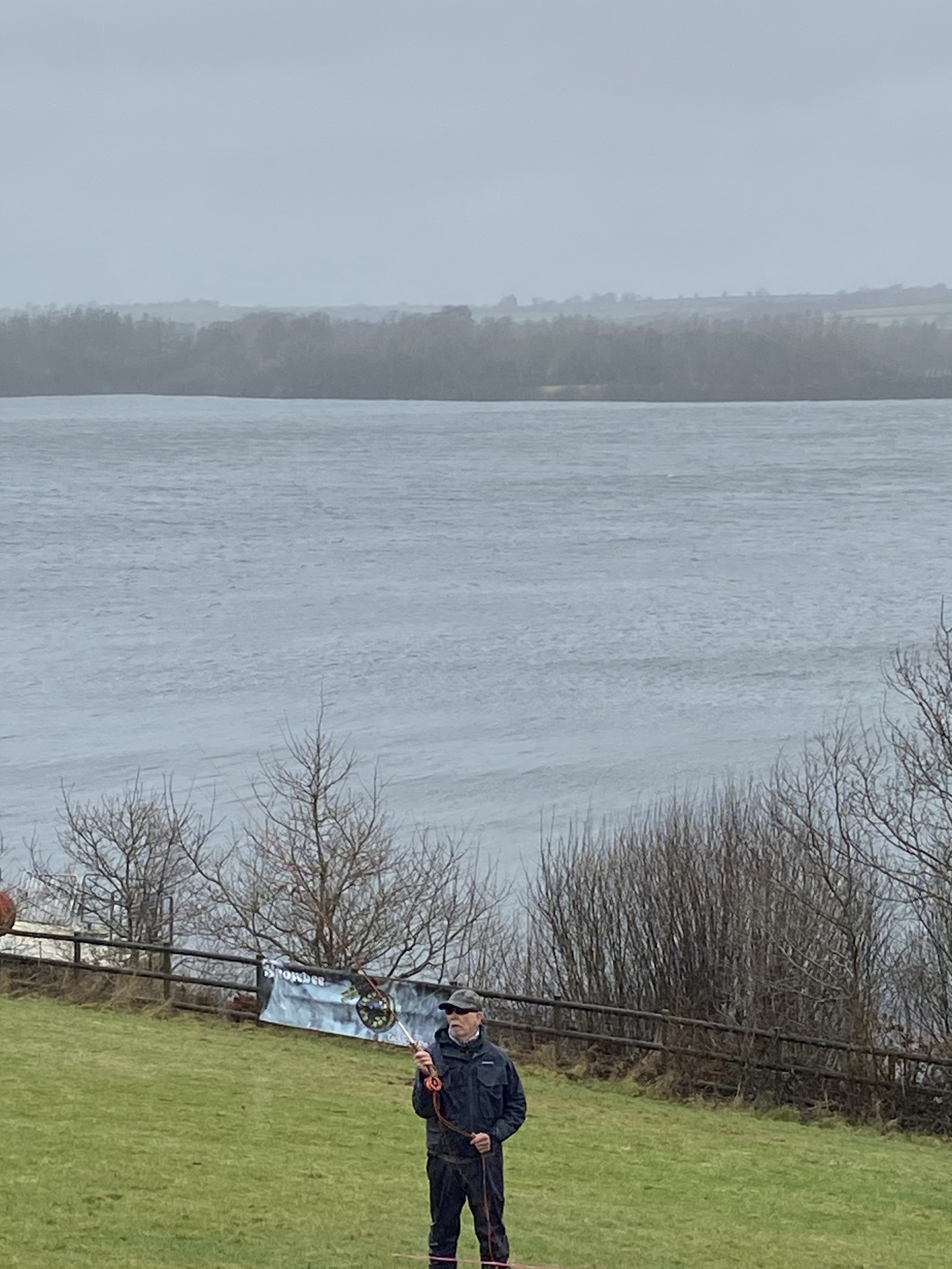
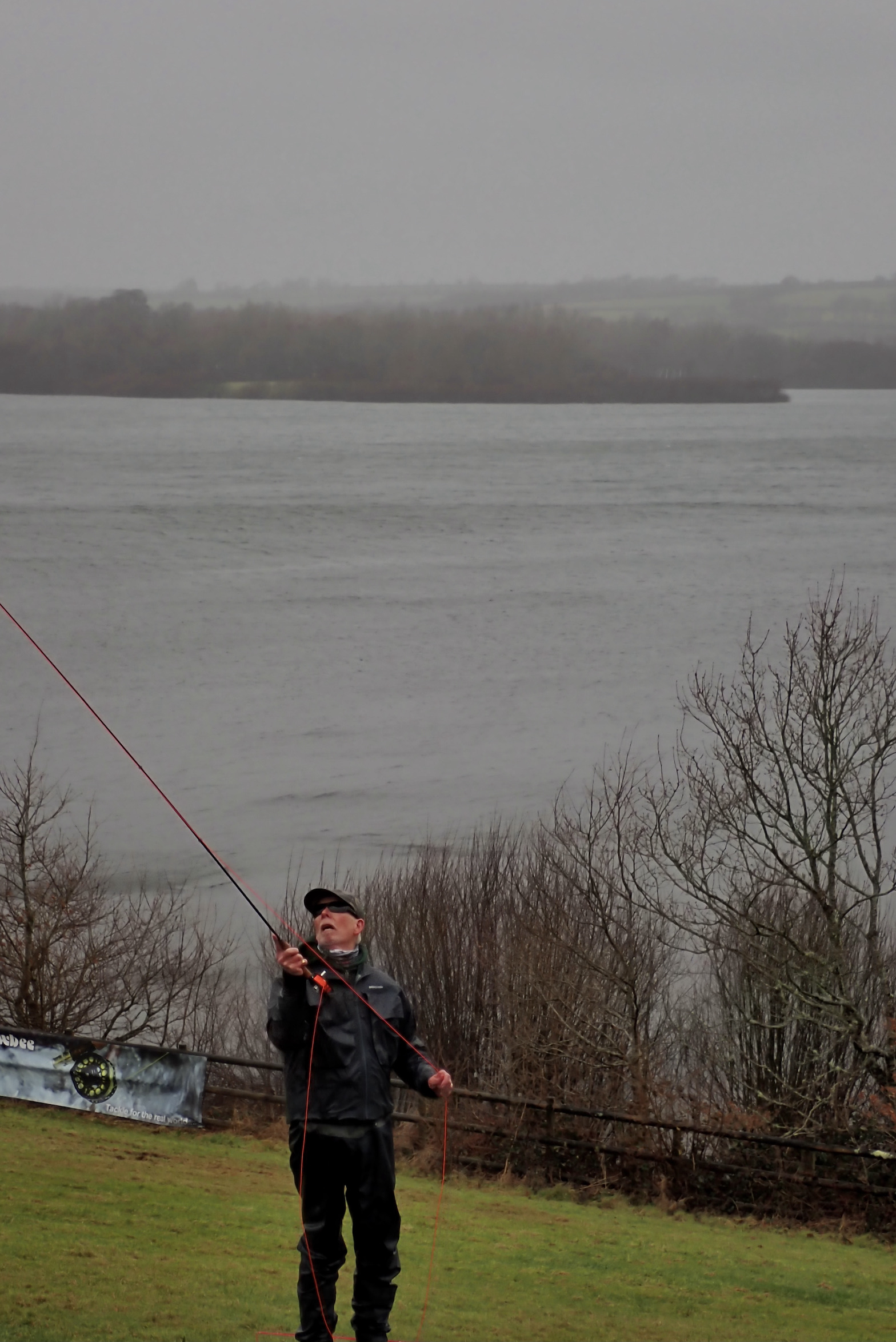
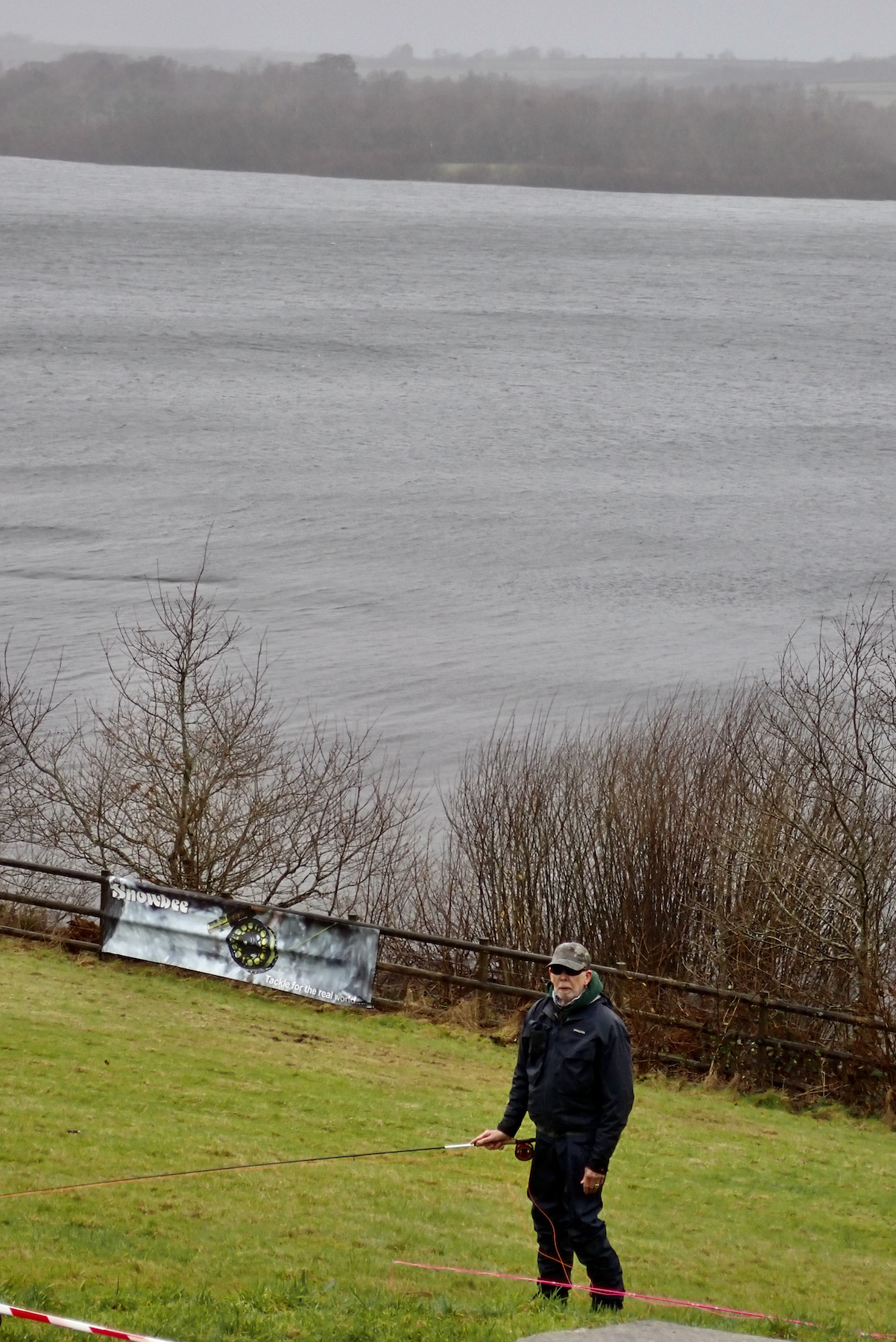
Charles stressed the importance of stance and how to hold the rod pointing out that these basic foundations are the key to consistent delivery of the fly to the target. A very important point is that protective glasses should be worn at all times. It was refreshing to hear Charles reflect upon the design of rods and their price tags. Whilst top of the range rods are a joy to use the actual performance is largely in the hands of the angler.
https://www.hanak.eu/en/about-us/company-hanak
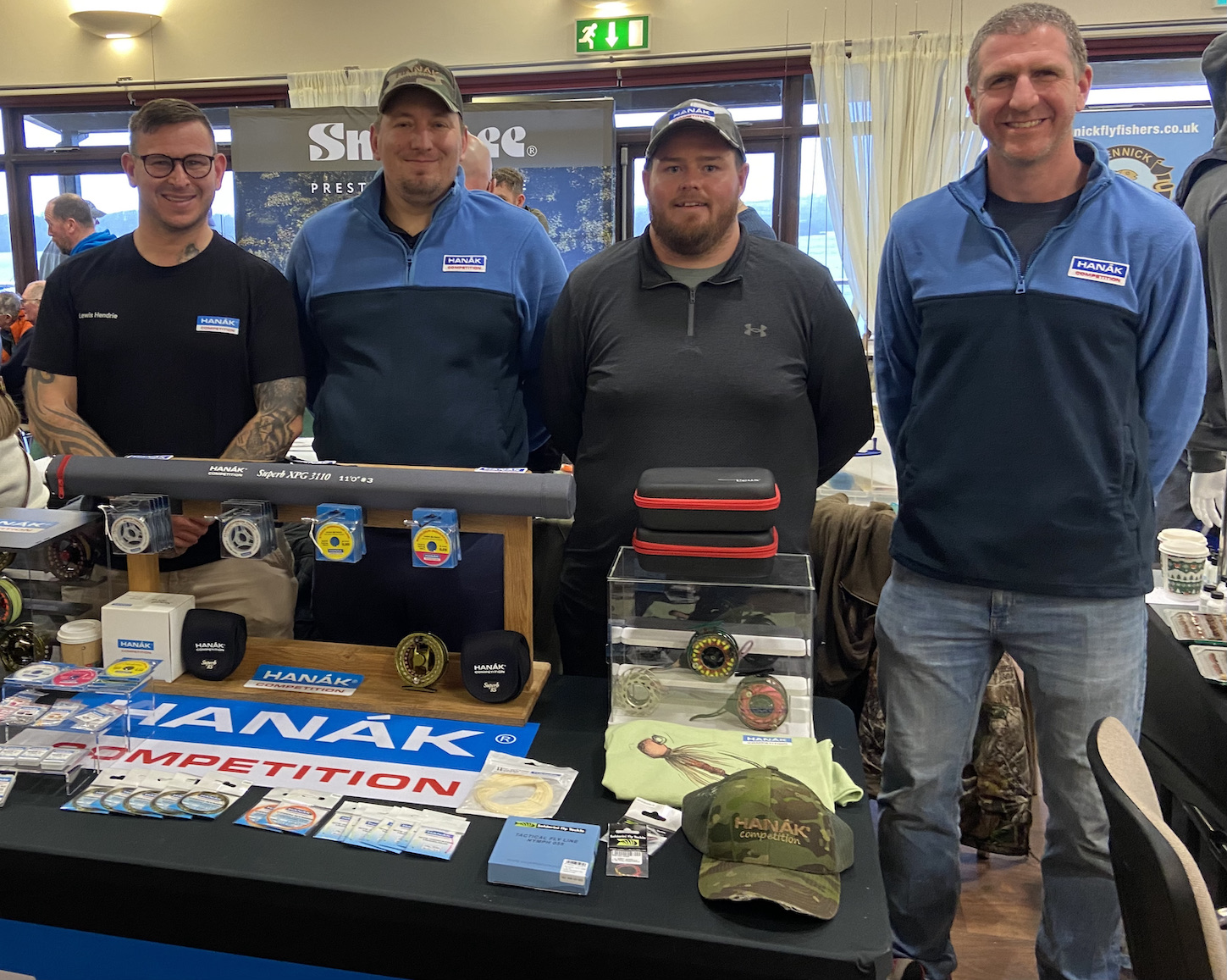
I chatted with Local angling guide Lewis Hendrie who was on the Hanak stand with their team of dedicated fly anglers. Lewis has his routes on Exmoor having grown up in the village of Exford learning his art on the wonderful rivers and streams that cascade to Devon’s North and South Coasts. Chatting with Lewis he pointed out that he had featured as a rising star in the Fly Fishing world in my North Devon Journal Angling column twenty five years ago. It is the mixing and mingling with fellow anglers that is at the heart of this event. Whilst fishing is the vital link conversations often flow far wider contributing to a healthy community.
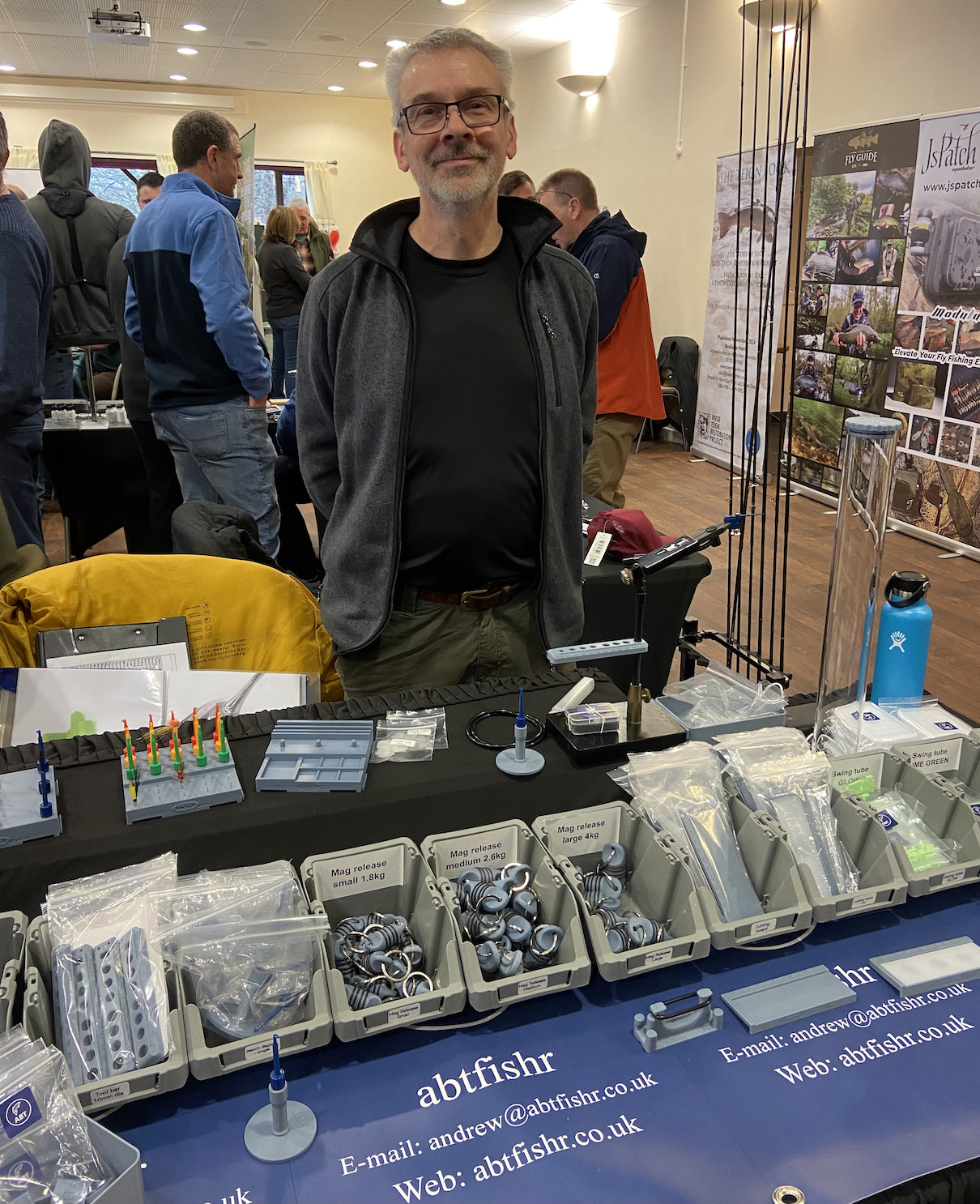
Andrew Beattie of https://abtfishr.co.uk
Always interesting to see new and Innovative products ABT have a range of robust products for fly fishing and other disciplines designed by Andrew. The LRF Critter cradle with disgorger caught my eye as a useful tool for the growing band of sea anglers exploring the fascinating miniture world of species hunting.
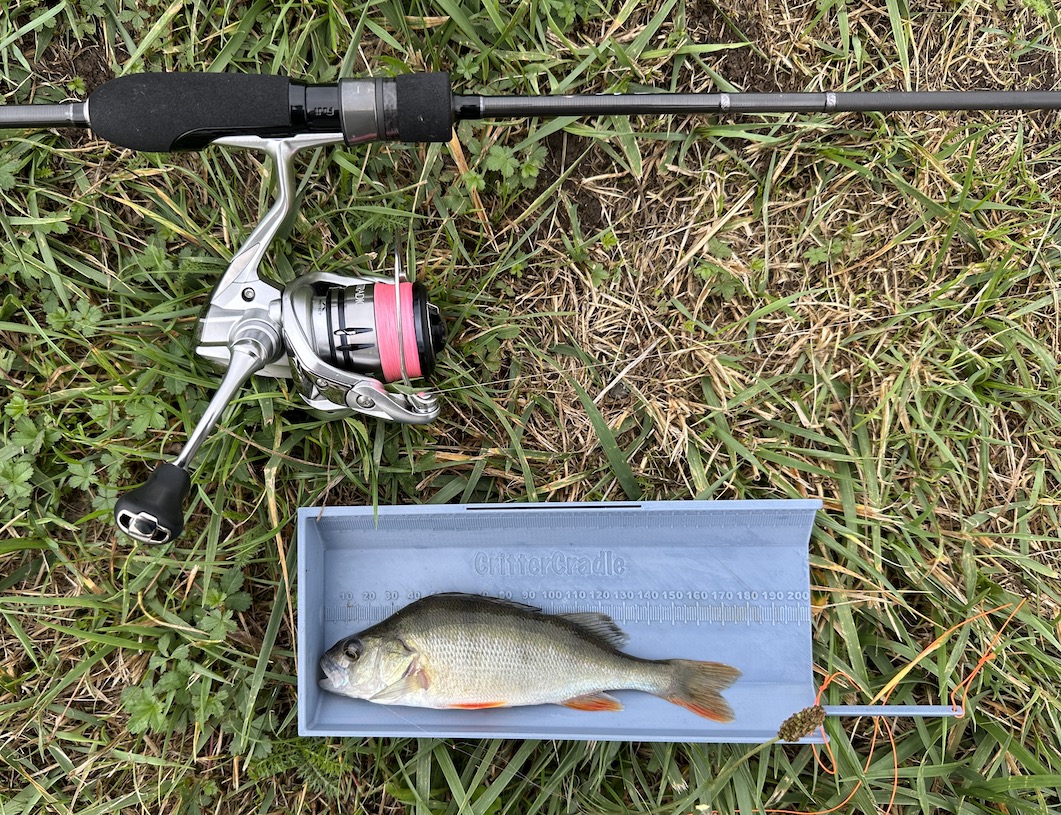
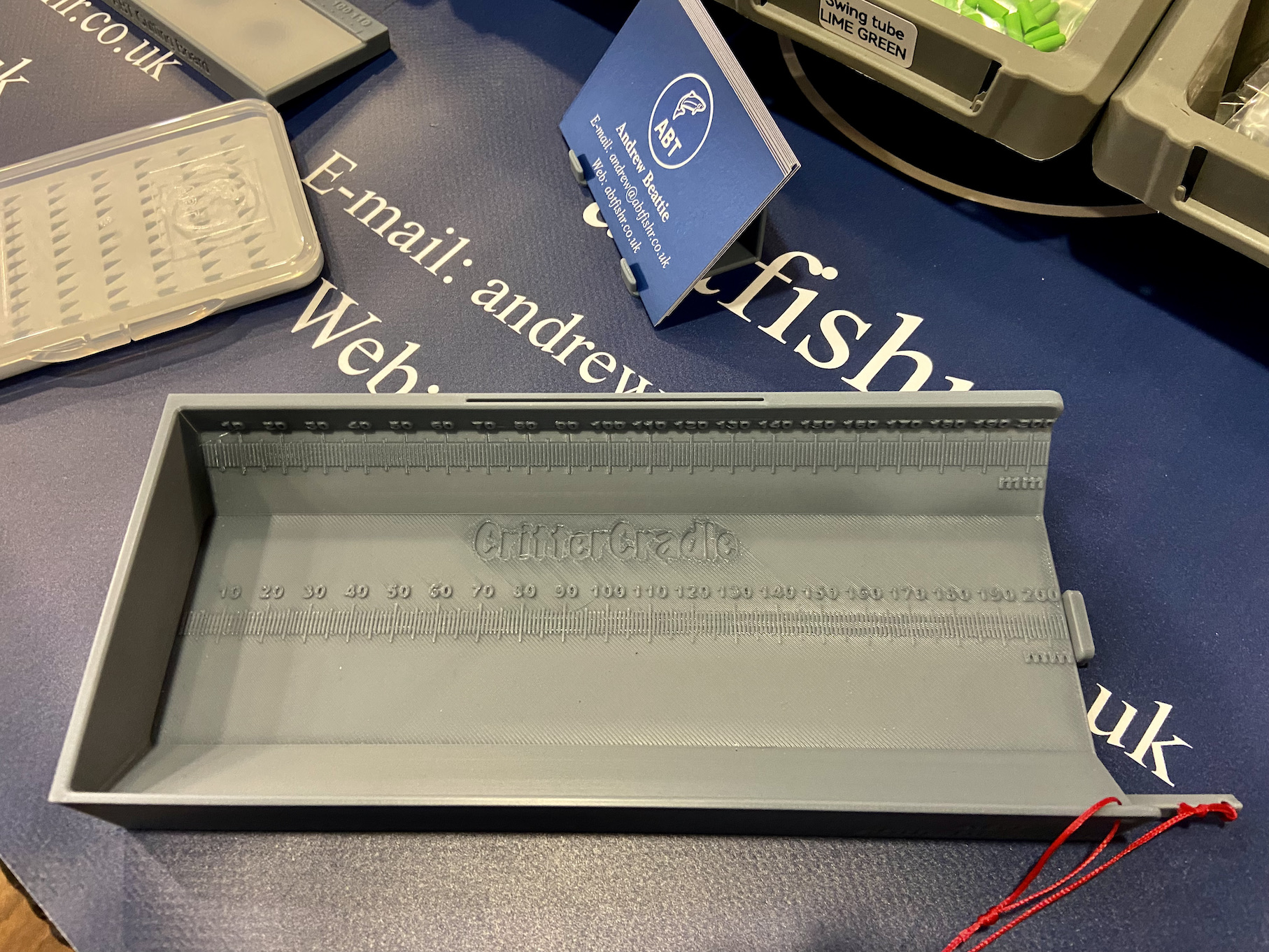
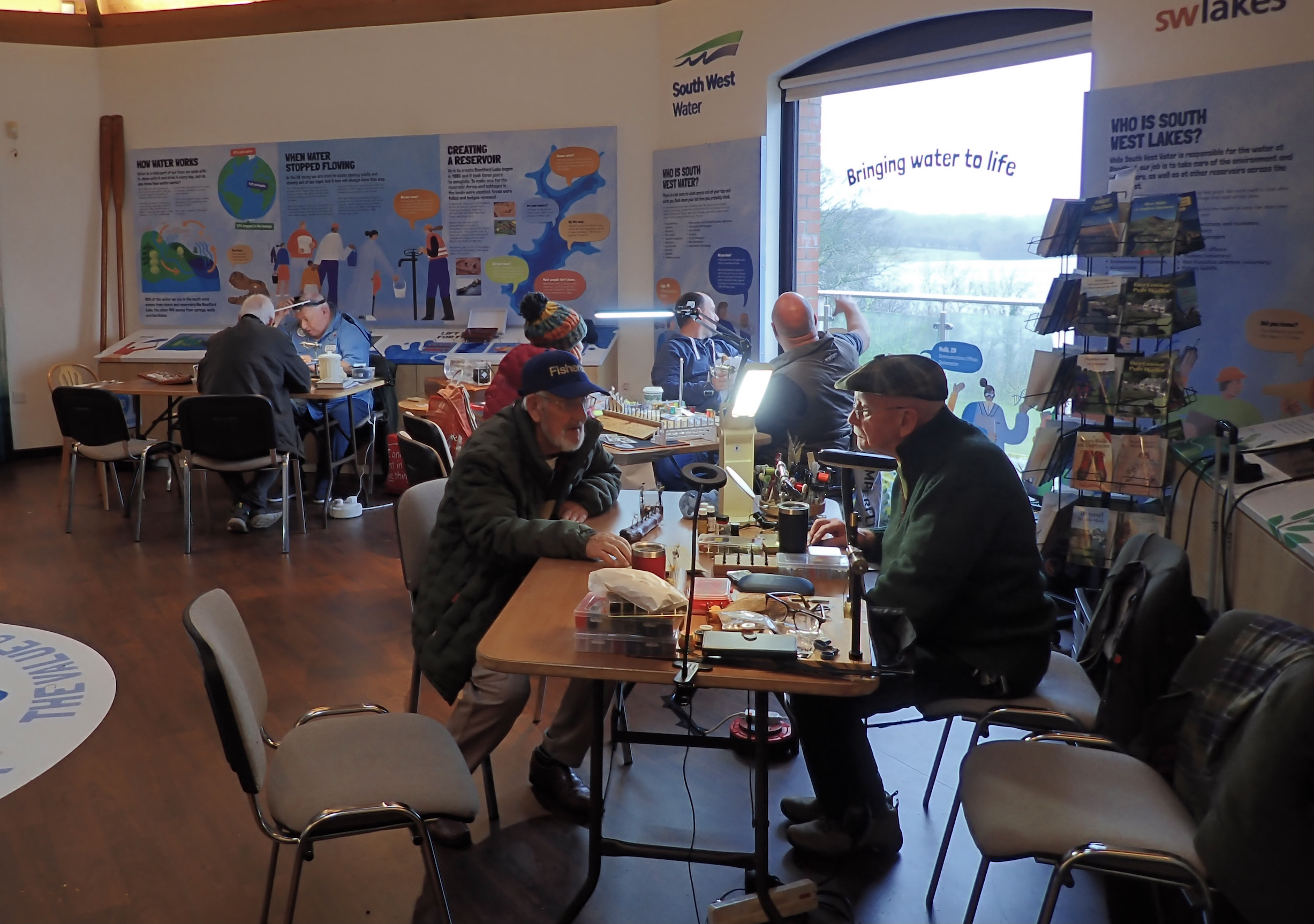
Fly tying features extensively at the fair those present creating a wonderful range of flies, lures and nymphs to tempt a wide range of species in many waters. Tiny dry flies and nymphs to temp wily wild brown trout and grayling. Gaudy lures for freshly stocked rainbows and those big mouthfuls for ferocious pike. Fly tying can be a hobby itself filling those long winter nights spent dreaming of those warmer brighter days ahead.
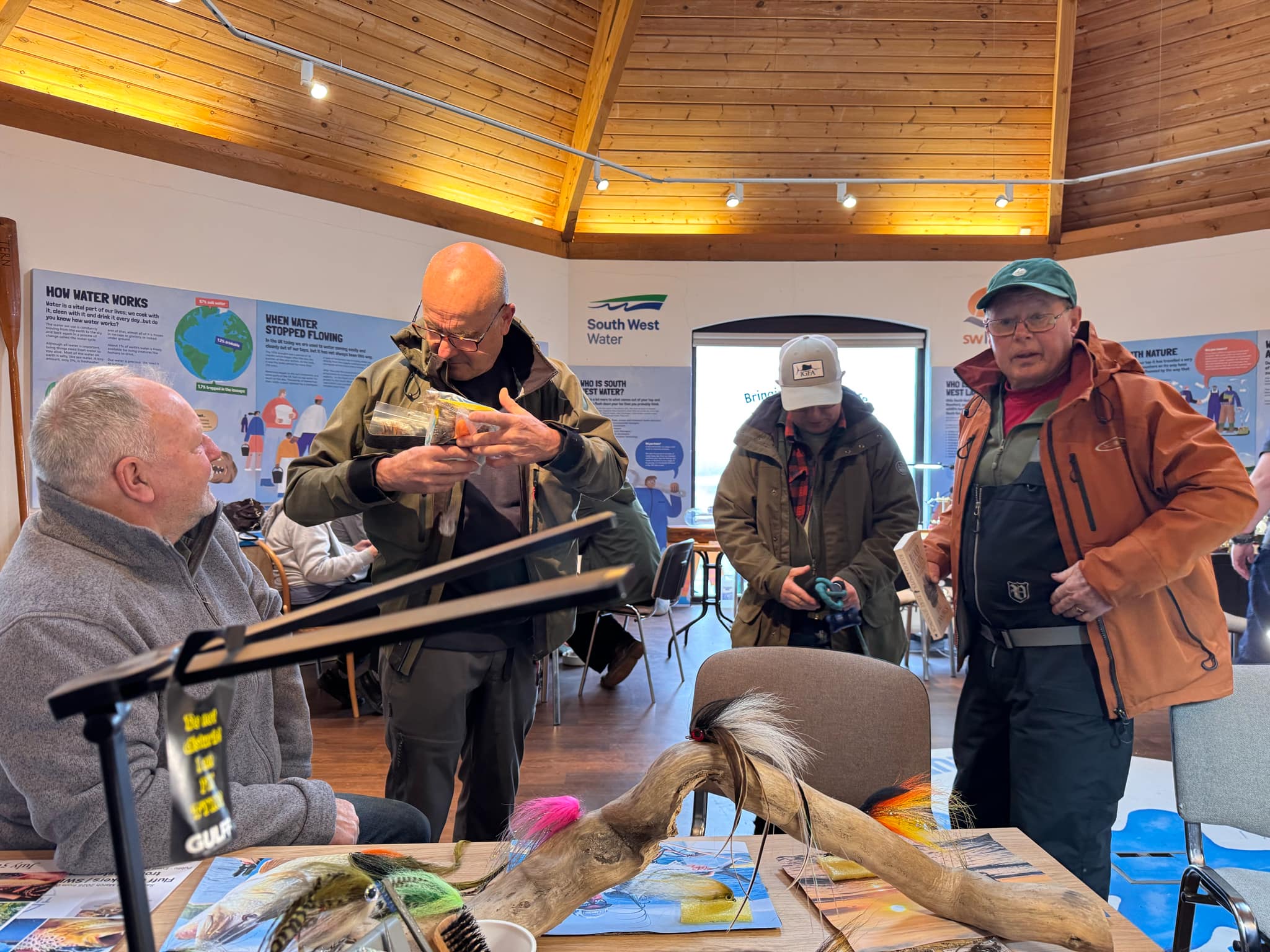
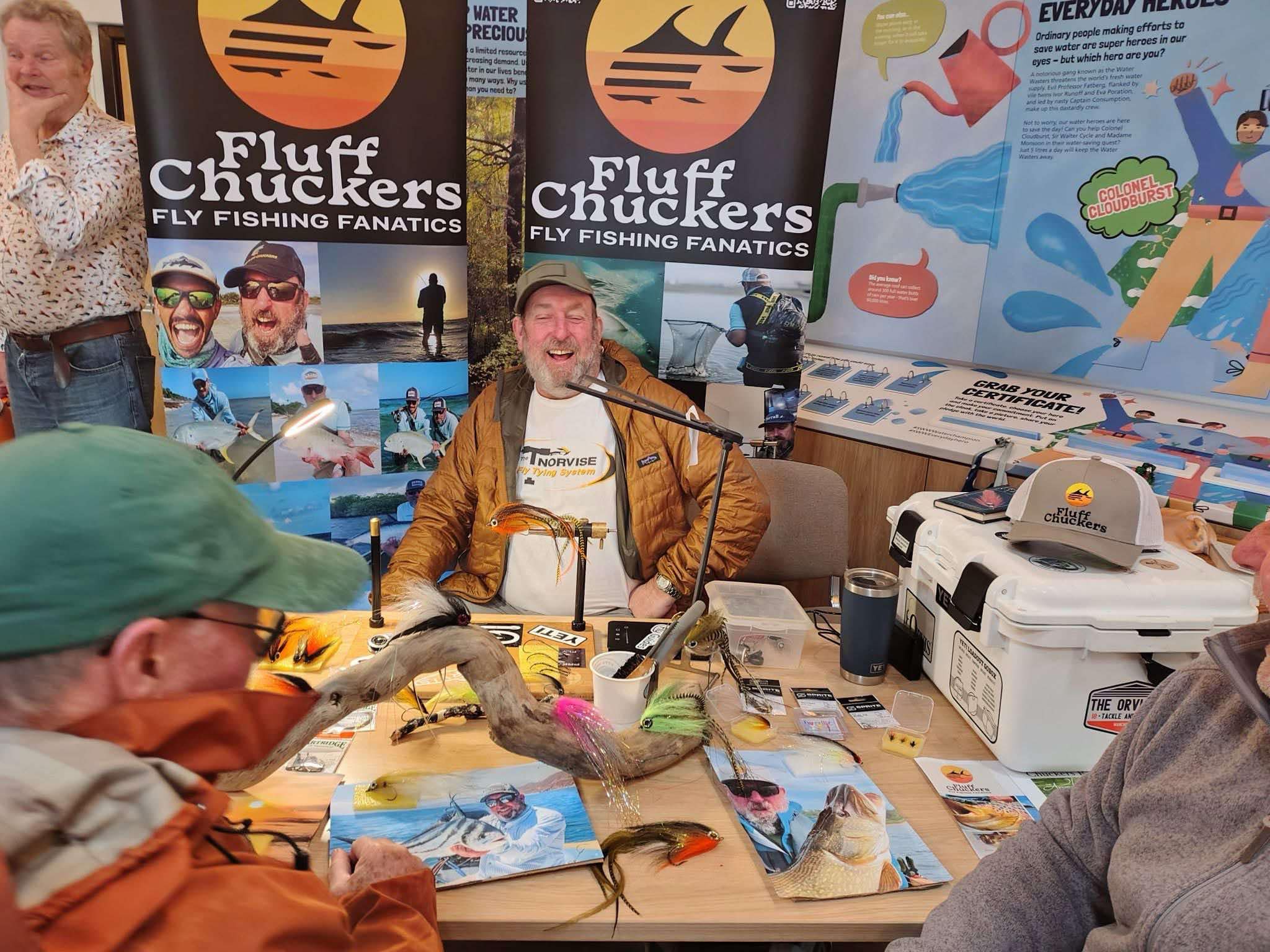
We are very fortunate in the West Country to have a vast range of waters to explore. One of the discussions at the expert forum between Charles Jardine, Rodney Wevill and Gary Champion was the wonderful places that fly fishing takes anglers to across the world. With a vital connection to nature highlighted by the speakers.

I returned home from the fair with my mind buzzing and full of inspiration for the coming season. The value of life and savouring each day and moment emersed in angling and the natural world is always highlighted at these events.
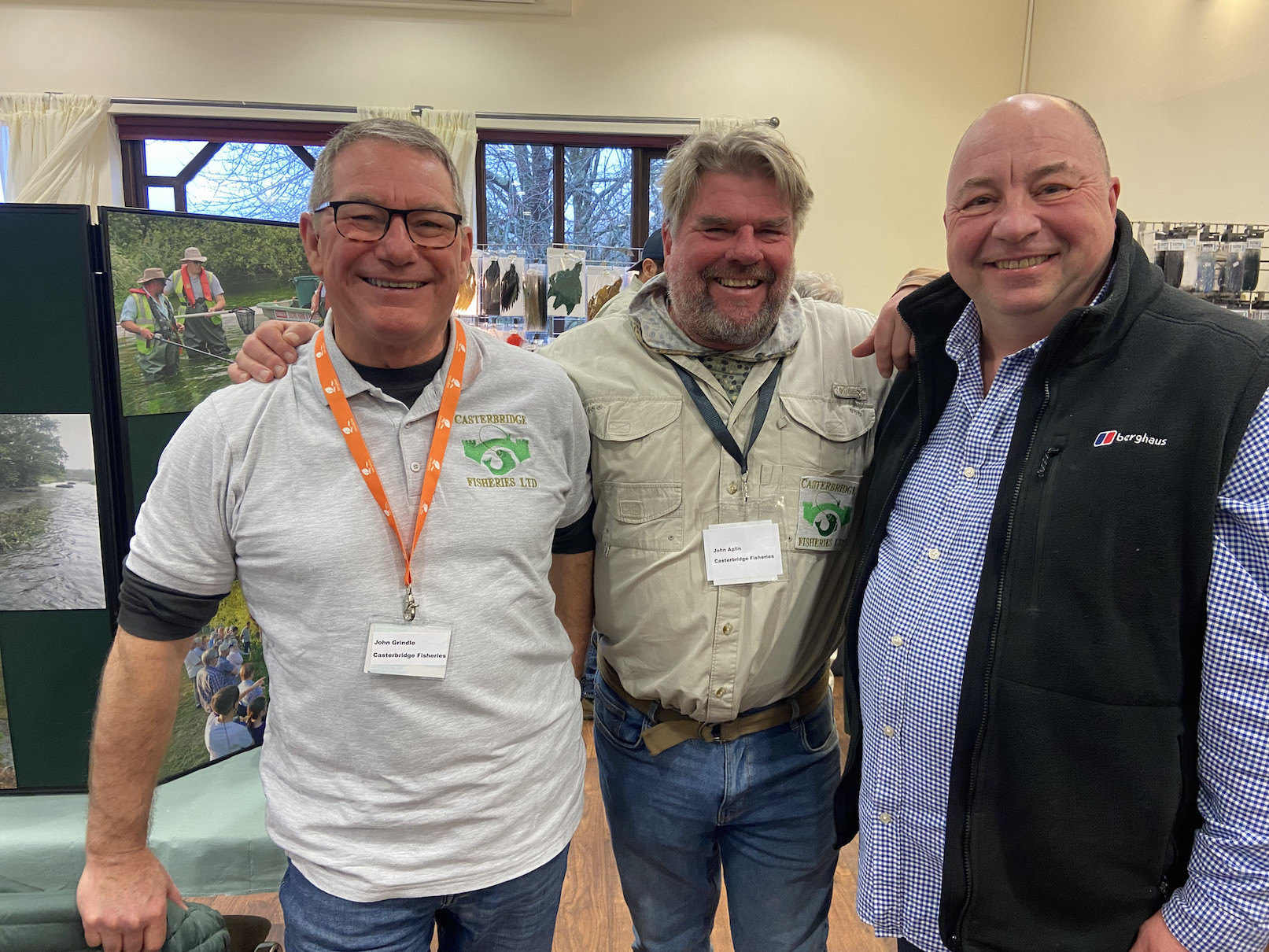
John Aplin (Centre) from Casterbridge Fisheries Ltd
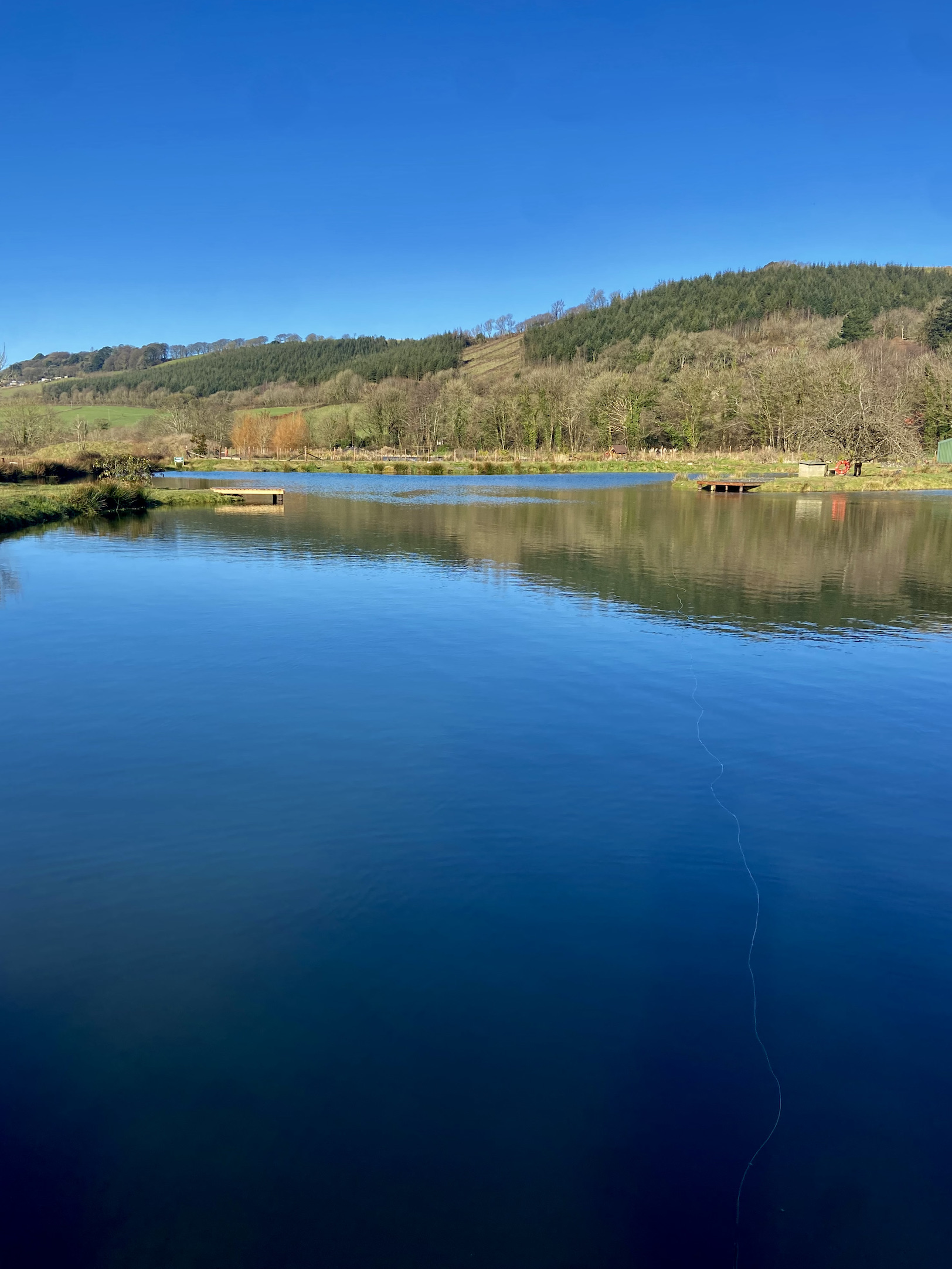
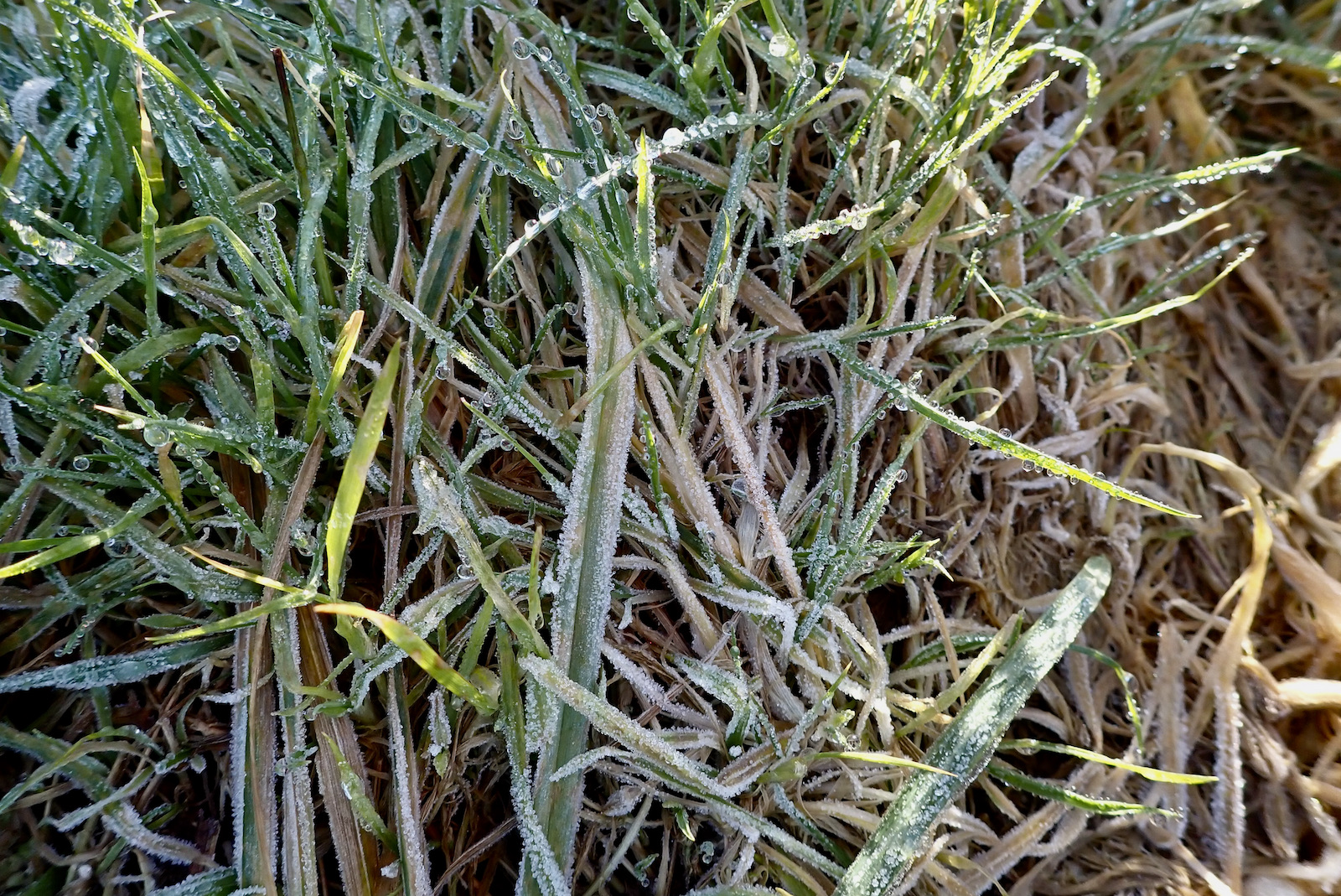
A cloudless blue sky, bright sunshine a cold east wind and frosty margins; conditions that are generally not good for fishing with one exception perhaps? Winter trout fishing in small still-waters is often at its best during the winter months and when few other fish are prepared to feed the inhabitants of these calm waters can provide exciting sport if you get the tactics right.
I arrived at Bulldog Trout fishery for a leisurely start at around 9:30am and after chatting with fishery owners Nigel and Tom Early I grabbed my already set up gear. My standard set up for Stillwater trout consisting of a 10’ 7-weight , Snowbee Diamond 2 Fly Rod, Spectre Reel, XS- plus Spectre Floating Fly Line an 8lb b.s Fluorocarbon leader and an Olive damsel nymph.
A pure white egret glided close by alighting upon the bare branch of a riverside tree. Buzzards were gliding high above the valley in the vivid blue sky rekindling memories of the osprey I had seen at the fishery last Spring.
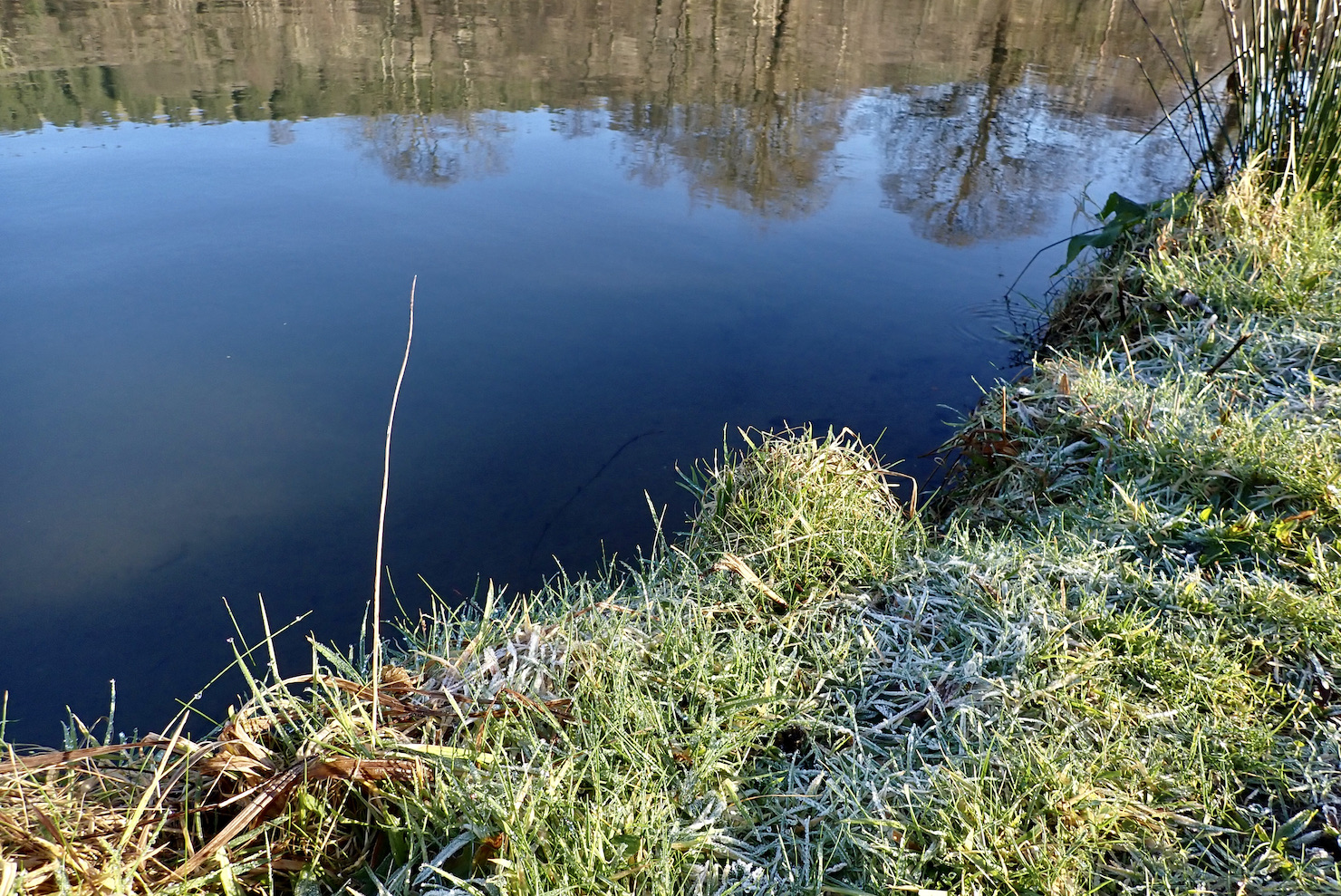
I walked the bank peering into the crystal clear water hoping to spot a trout in the margins. I chose a platform that allowed me to put a line out onto water without casting my shadow. I expected a take at any moment but the trout proved elusive as I explored various swims around the lake.
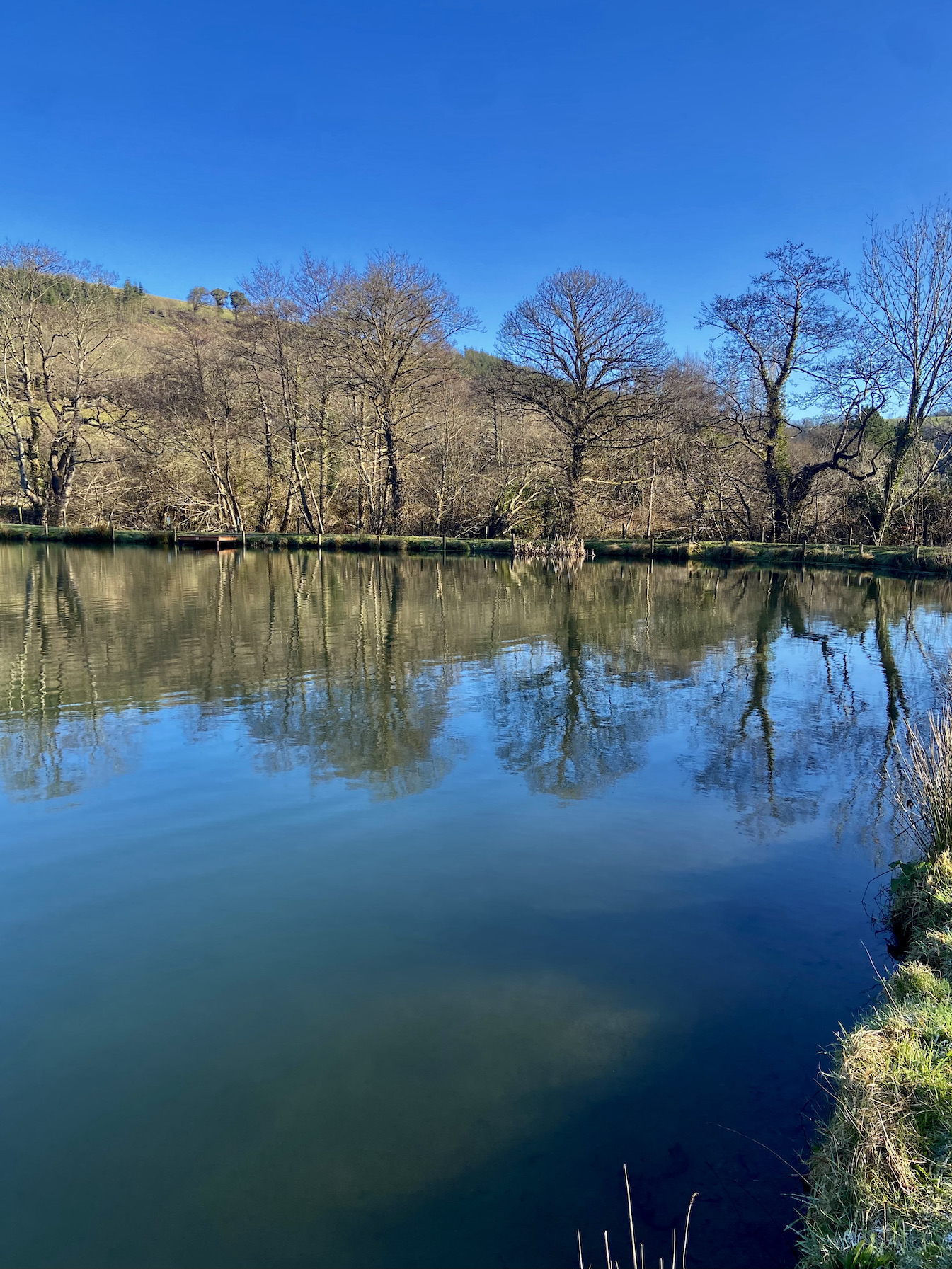
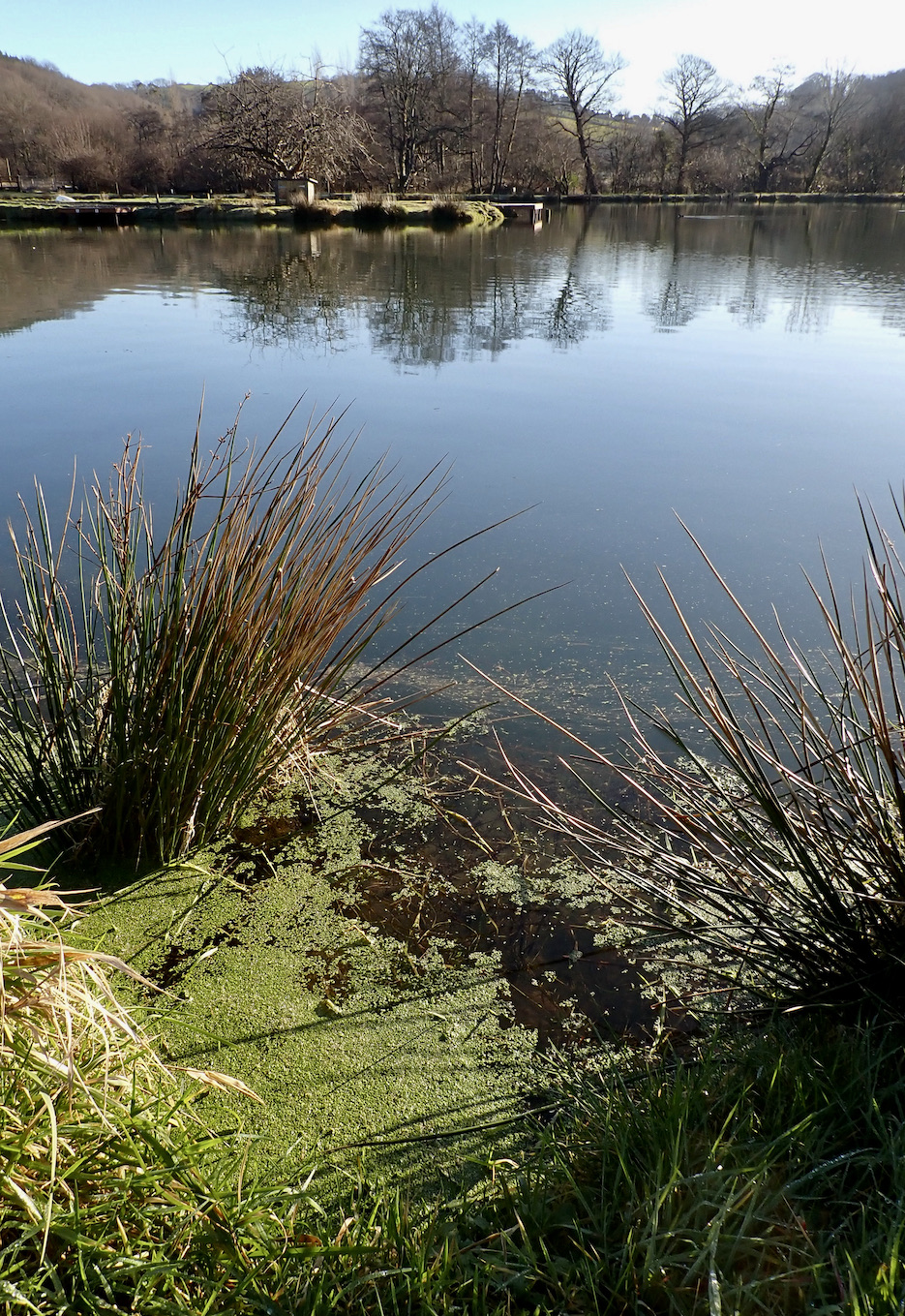
The electric blue flash of a kingfisher caught my eye as it darted across the lake, quickly followed by a second bird that I was able to focus on as it sped past.
I moved to the windward bank and tied on a bright yellow damsel Nymph/lure. Casting out I allowed the gold headed fly to sink before beginning an erratic retrieve. The line zipped delightfully tight, the rod hooped over and a chunky rainbow of around 5lb tested the tackle. It’s always good to get that first fish in the bag avoiding the blank.
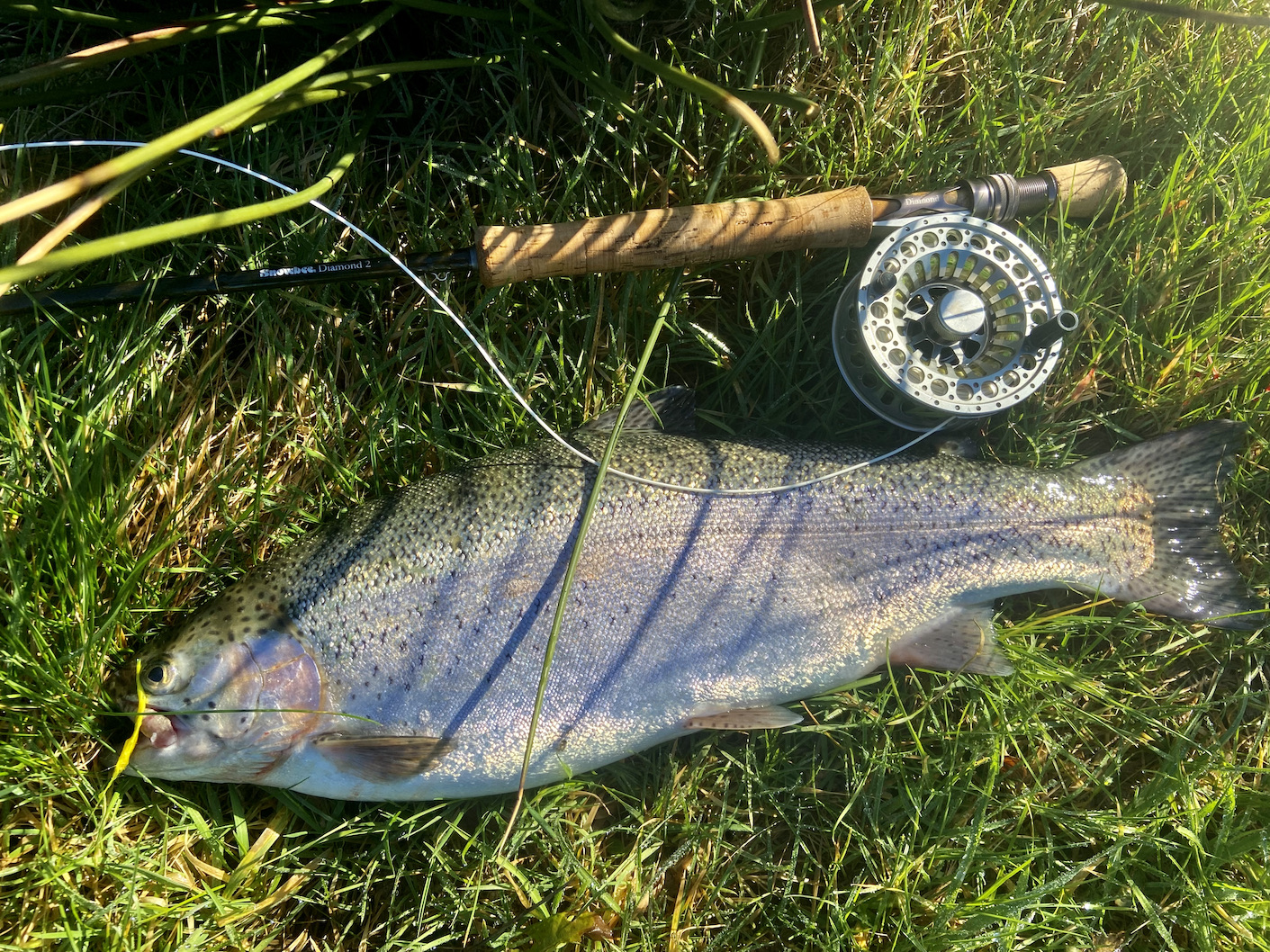
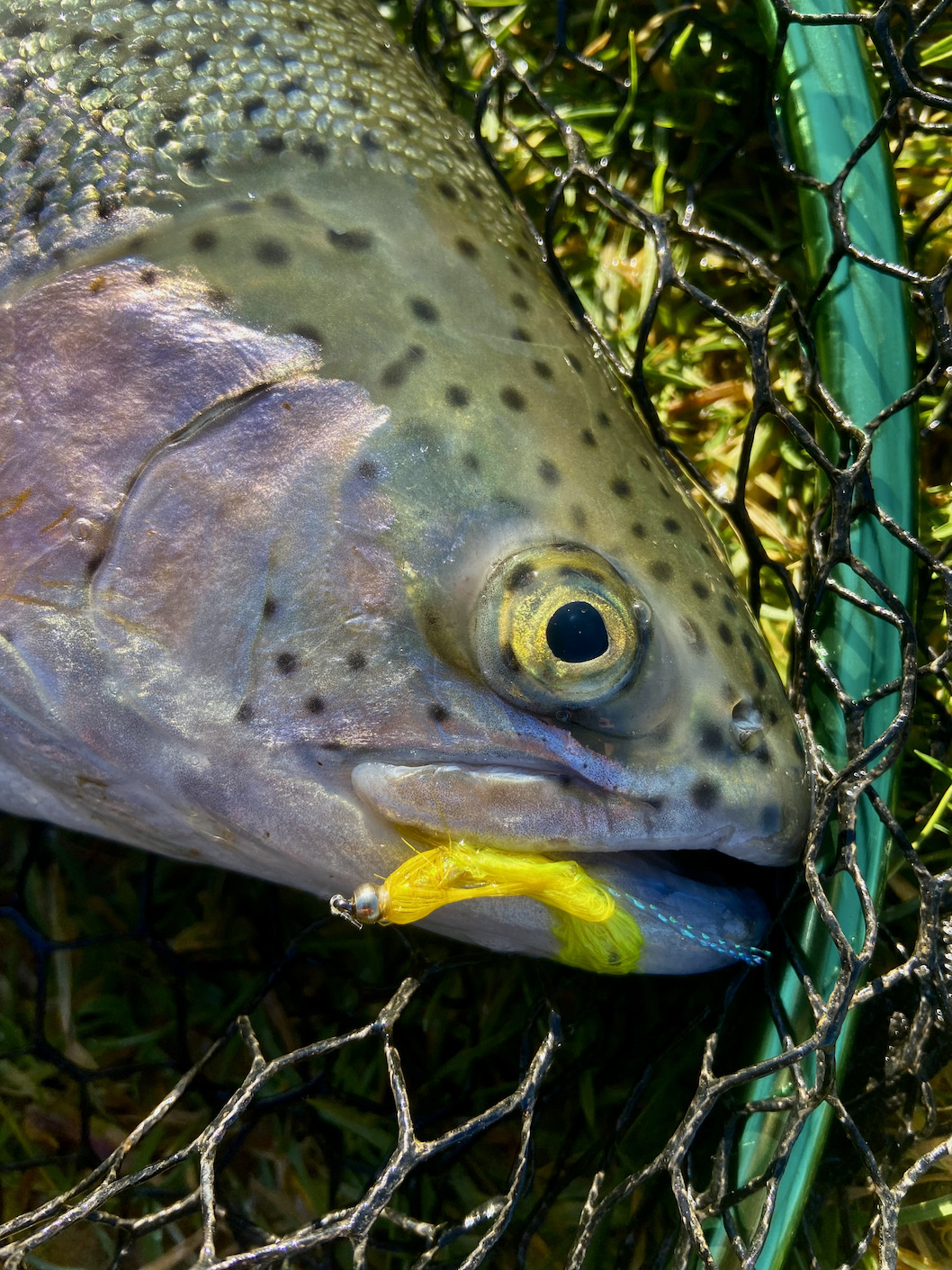

It did not take too long to get the second fish another rainbow that was almost a twin of the first. Confidence in the lure now cemented I fished on and soon added a third rainbow of a couple of pounds.
It seemed to go a bit quiet and my luck took a turn for the worse as over the next hour I hooked into three hard fighting trout that all shed the hook after prolonged and spirited tussles. I checked the hook that appeared to be razor sharp and in good order. Feeling that I needed a change I swapped to a green, yellow and black damsel. After five minutes working this lure deep and slow the line once again zipped tight as another good trout attempted to shed the hook. This one was fighting deeper and shaking its head vigorously and I was delighted to eventually slide a fine tiger trout over the rim of the waiting net.
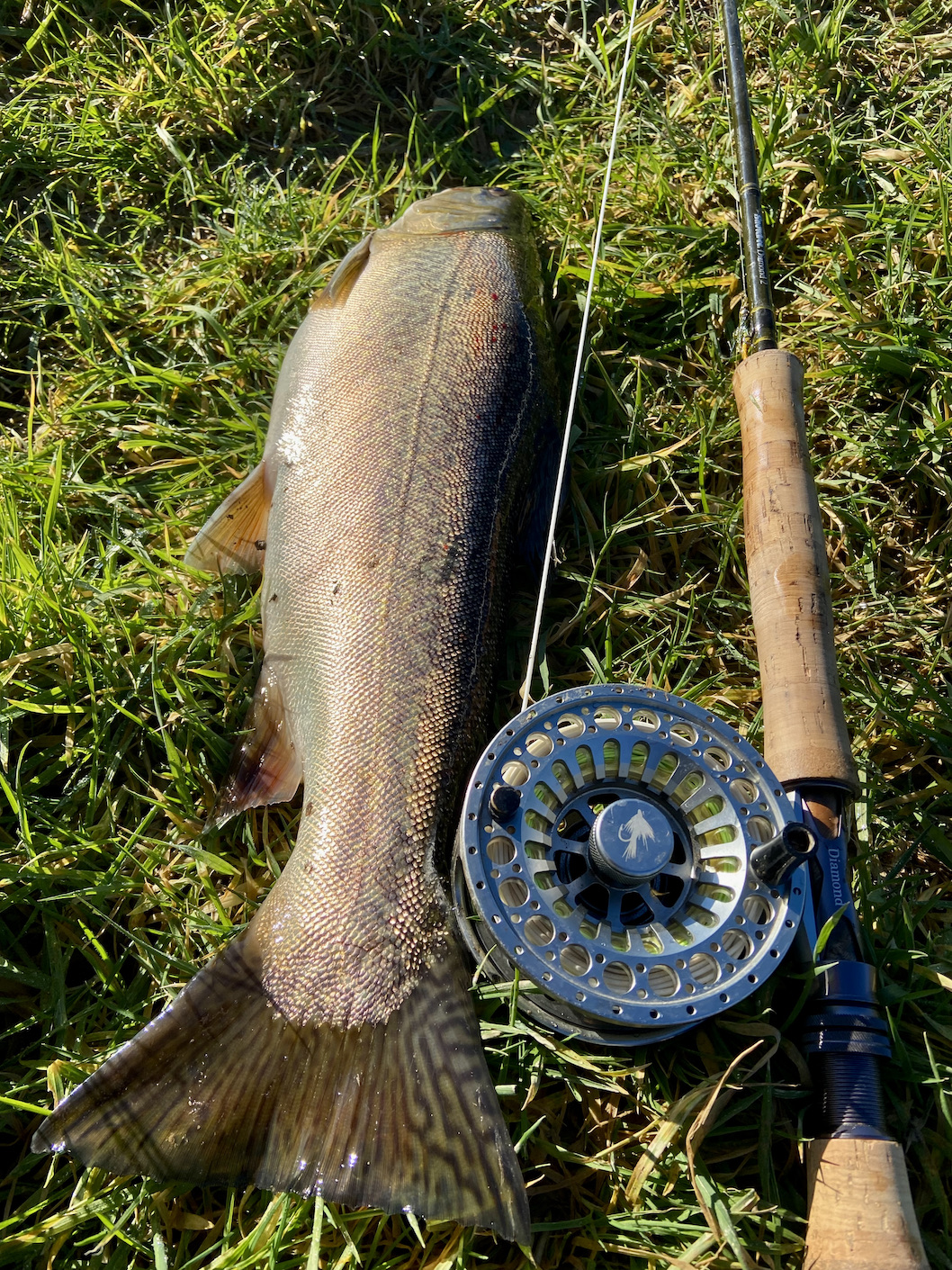
With four trout in the bag I was content with my days sport but as always there is that desire to complete a limit bag. It was now mid-afternoon and as is often the case the trout appeared to have switched off.
It was perhaps a good time to have a walk around the lake trying different areas. There were two other anglers on the lake and they had both caught rainbows in the 3lb to 4lb size range but like me were not finding the fish easy to tempt.
A walk around the lake failed to inspire as I had a feeling that most of the trout were lurking in the windward side of the lake. So I headed back to the area from which I had enjoyed success earlier in the day. Much of my fishing is determined upon a hunch and a feel for where the fish will be. The occasional fish was also rising in this area prompting me to try a short time with a slow sinking daddy longlegs a pattern that often tempts a trout at Bulldog.
After a couple of chances a rainbow of perhaps 2lb 8oz took my PTN fished on a dropper bringing my total to five fish. Deciding that with the sun sinking below the tree line it was a good time to pack up and gut the trout. A welcome facility at Bulldog is a fish preparation area where you can gut and fillet the catch removing the need to do so at home.
As I returned to the car Brian Sedgebeer was playing a good trout that had succumbed in the fading light of the day.
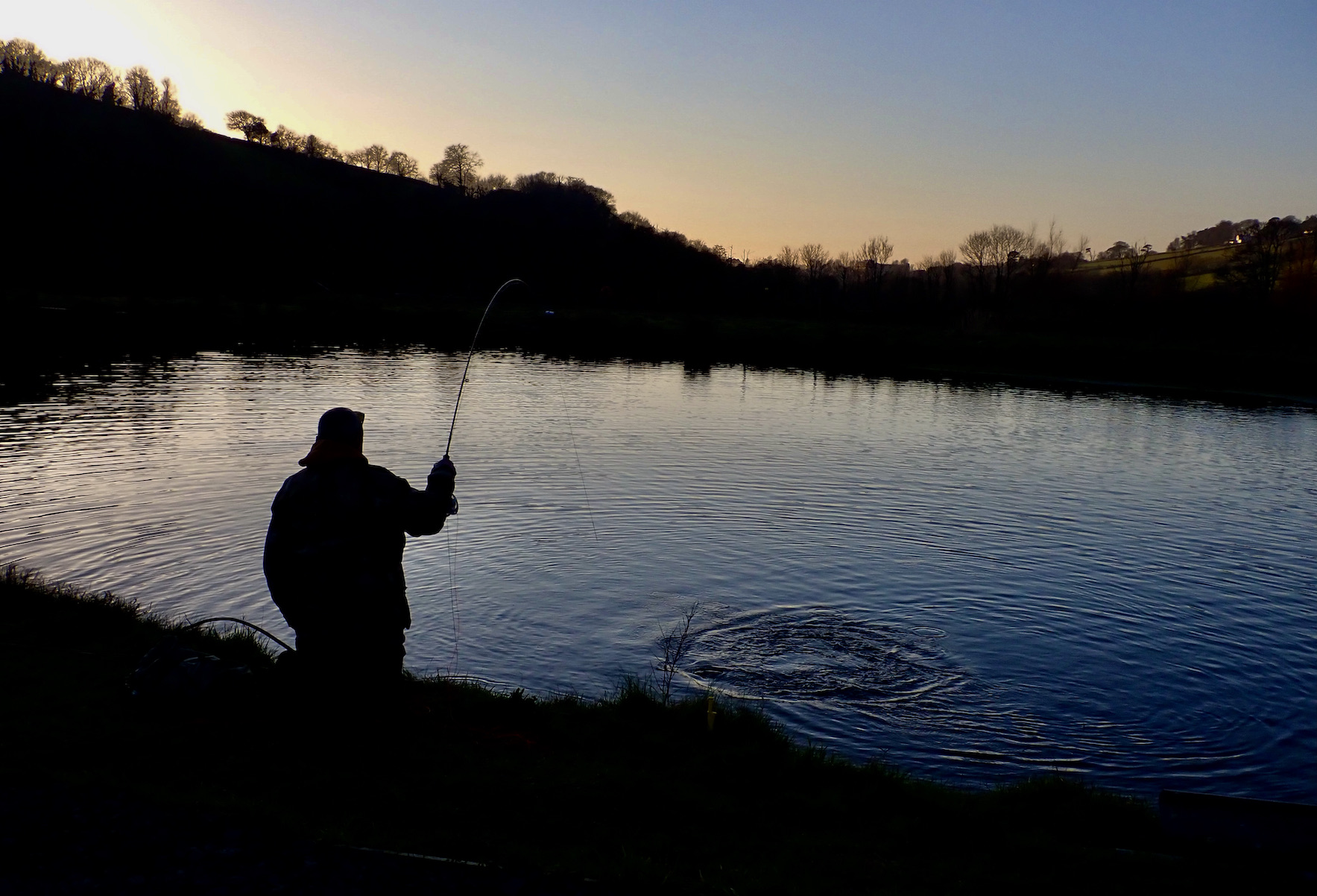
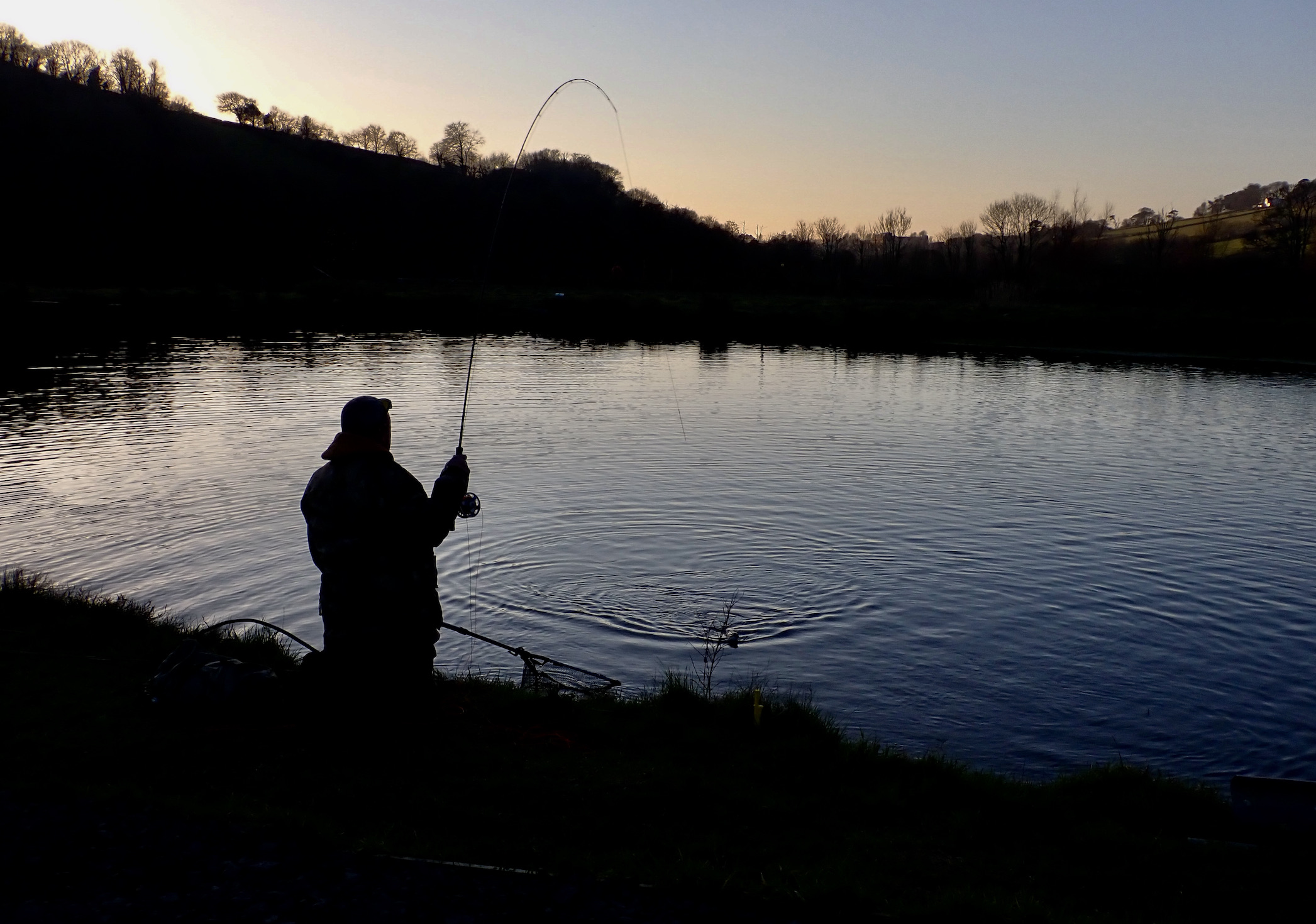
Bulldog Fishery is now a premium trout water that offers superb sport with a very good average size of stocked fish. I have found that the Bulldog trout seem to respond well to larger lures with small imitative tactics less successful. This may of course change during the warmer months when fish become more active feeding closer to the surface. A floating line with a long leader or an intermediate line will generally cover all days at Bulldog as the fish are seldom lurking close to the lake bed.
